




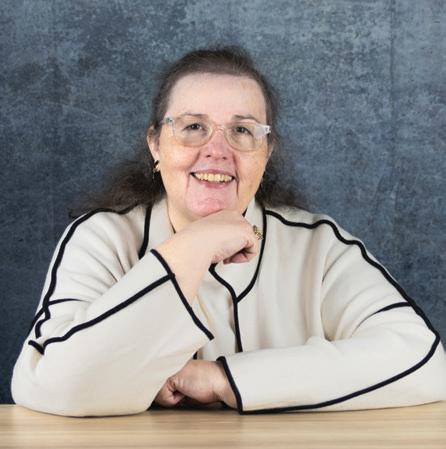
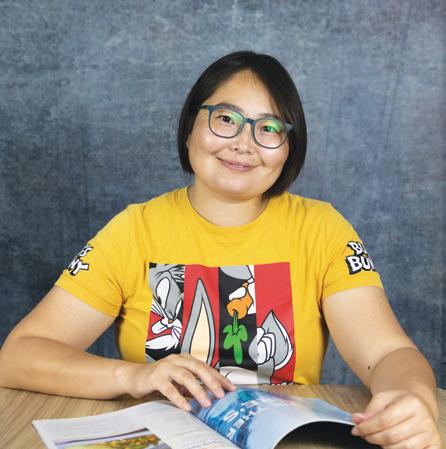

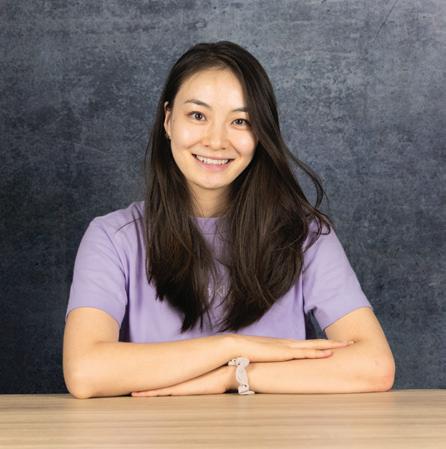
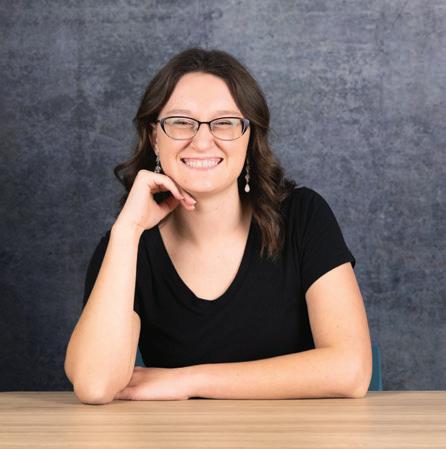
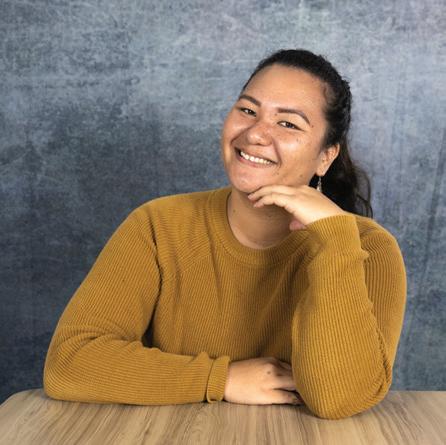



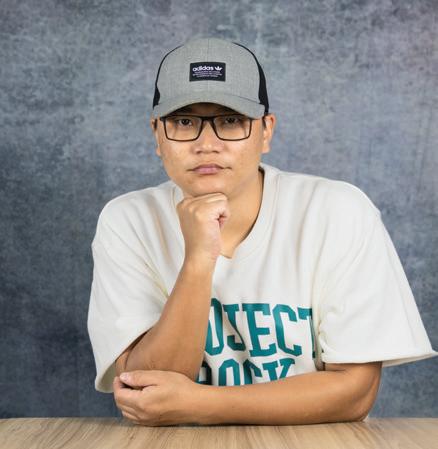






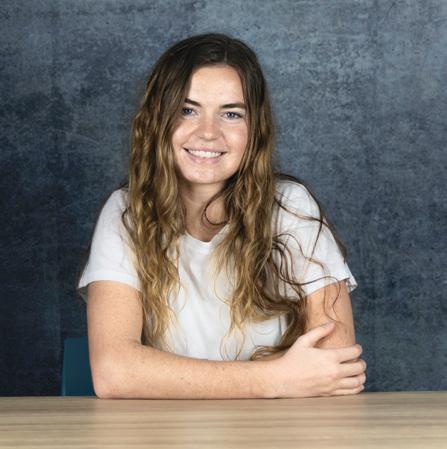

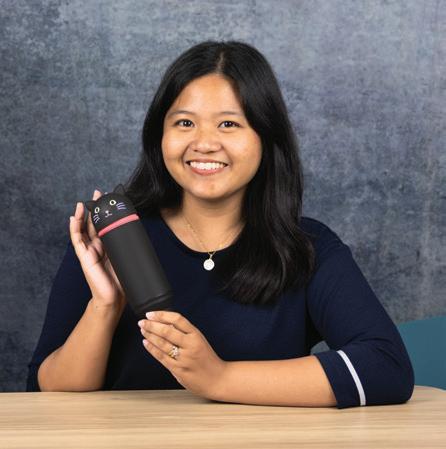
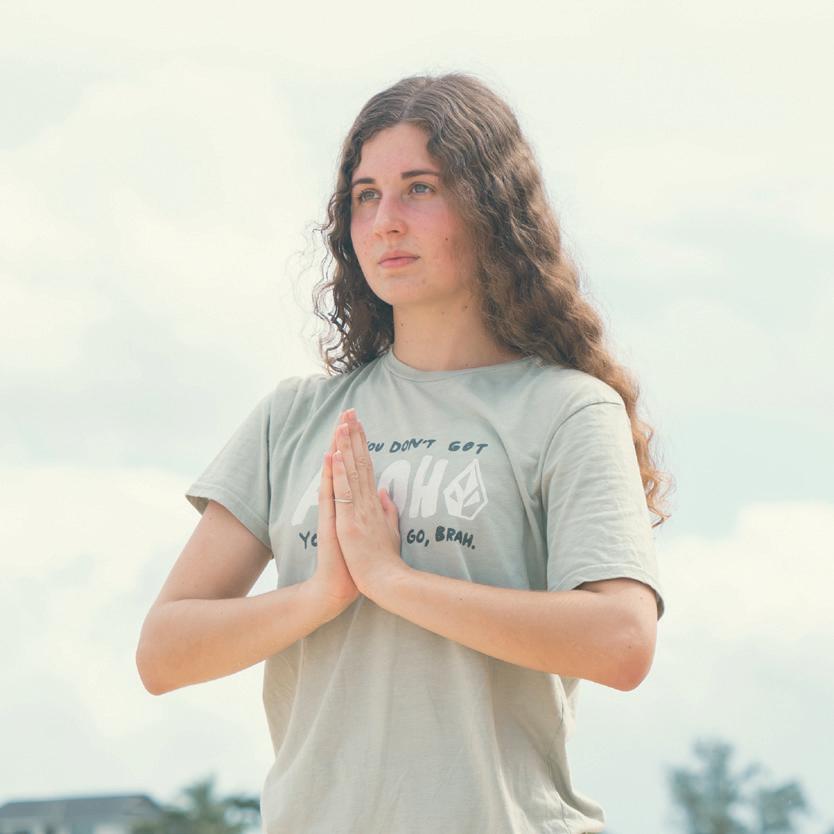
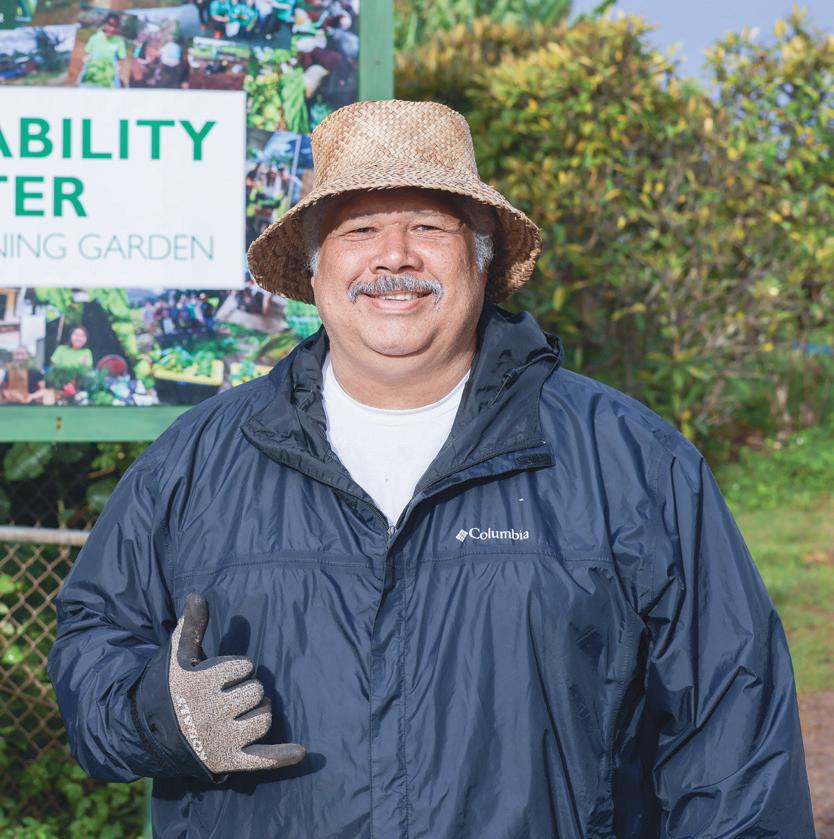
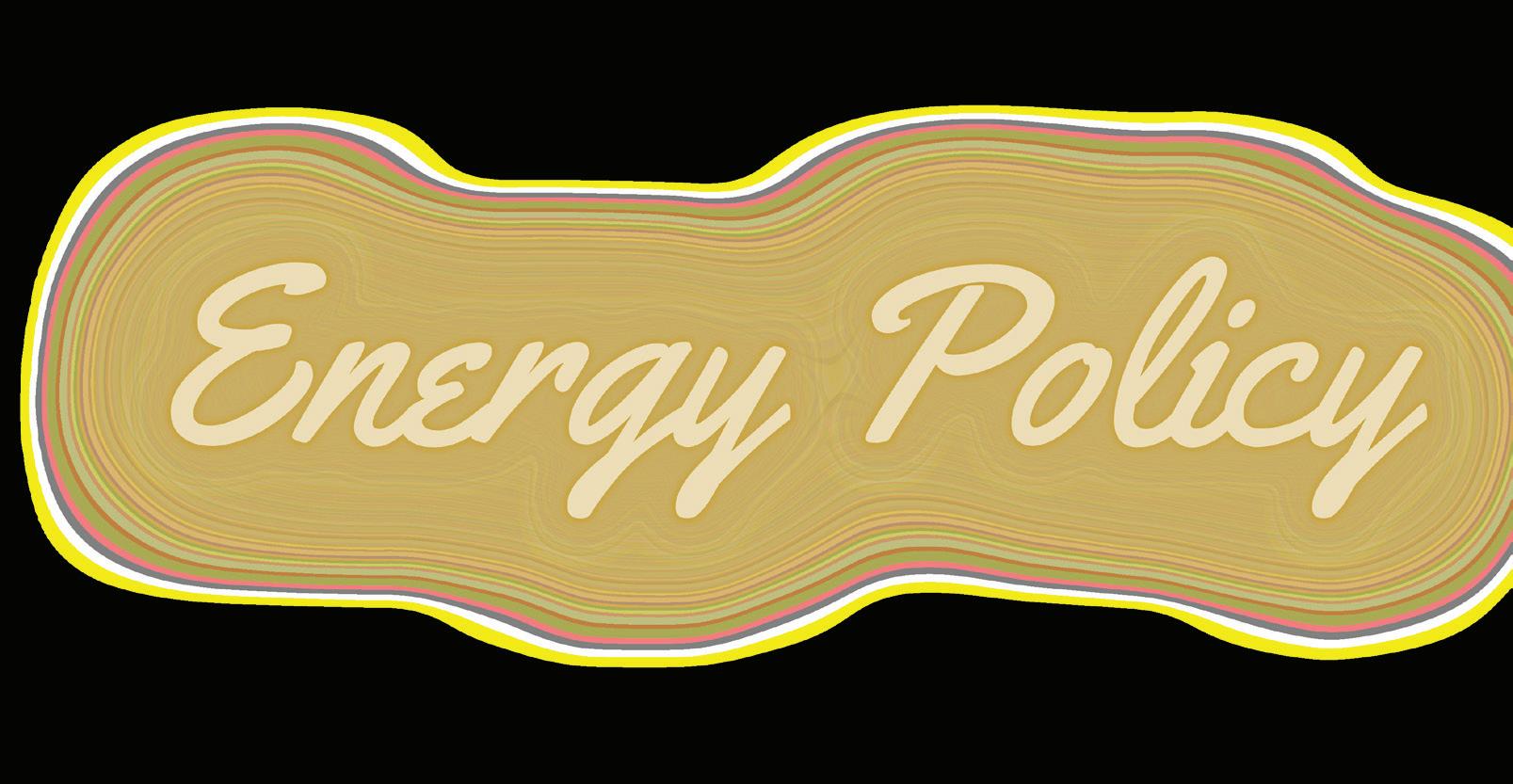
Scan to listen today!


NEWS CENTER:
Box 1920
BYUH
Laie, HI 96762
Editorial, photo submissions & distribution inquiry: kealakai@byuh.edu
To view additional articles, go to kealakai.byuh.edu
CONTACT:
Email: kealakai@byuh.edu
Phone: (808) 675-3694
Office: BYU–Hawaii
Aloha Center 134
ON THE COVER: Alika Peleholani Garcia holds a coral specimen. He is one of the founders of Kuleana Coral Restoration, a non-profit organization, along with Dr. Daniel DeMartini, shown on the background, who is an adjunct faculty member in BYU-Hawaii’s Facuity of Sciences. DeMartini is the director of science for the group’s work on coral restoration. Photo provided by Daniel DeMartini. Graphics by Forrest Christensen.
BACK COVER: A look at the deep blue ocean with a quote by Faculty of Arts & Letters Dean Patricia Patrick. Photo provided by Daniel DeMartini. Graphics by Forrest Christensen.
The Ke Alaka‘i began publishing the same year the University, then called Church College of Hawaii, opened. It has continued printing for more than 65 years.
The name means “the leader” in Hawaiian.What began as a monthly newsletter, evolved into a weekly newspaper, then a weekly magazine and is now a monthly news magazine with a website and a social media presence.Today, a staff of more than 25 students work to provide information for BYU–Hawaii’s campus ohana and Laie’s community.
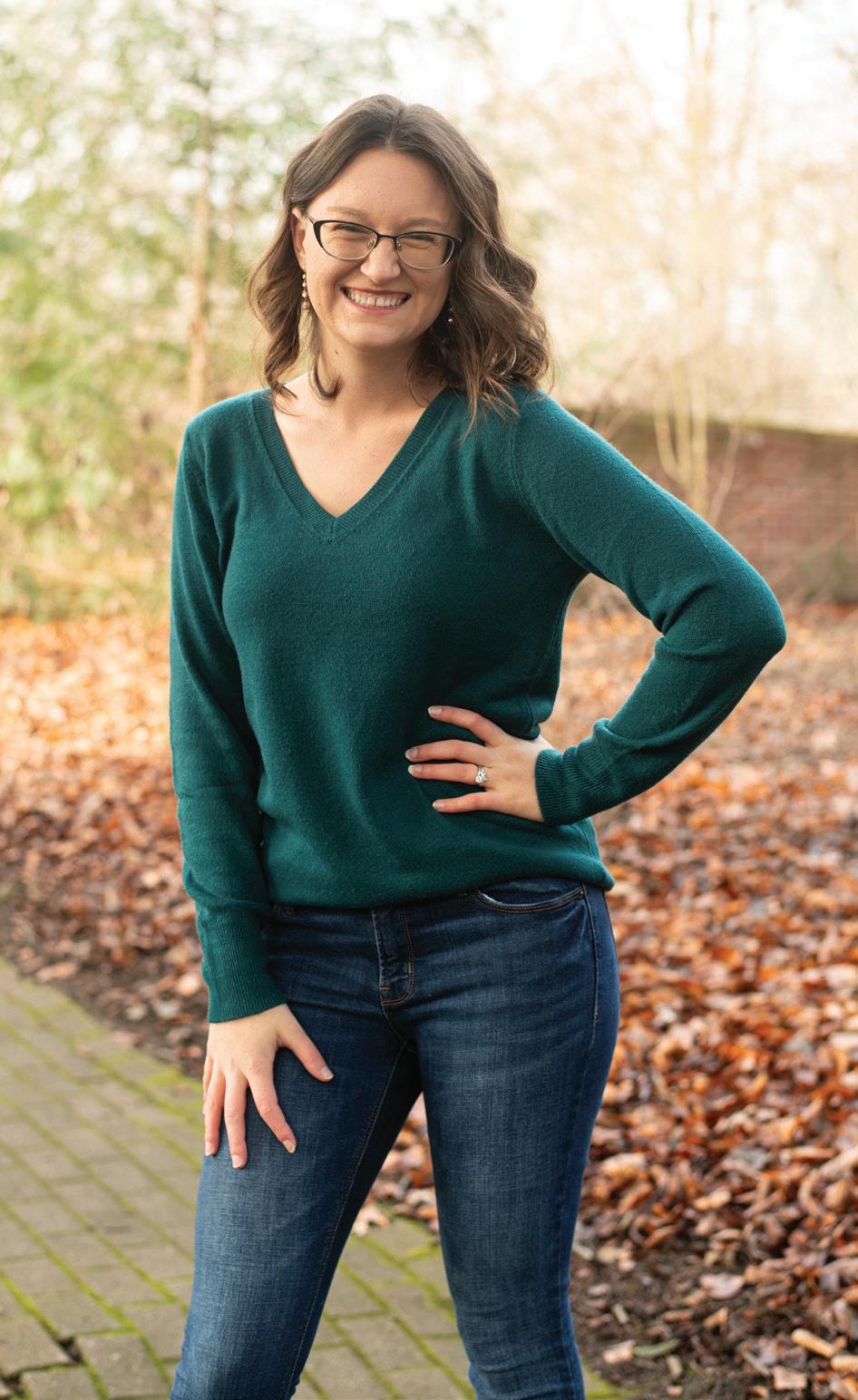
Dear Readers,
During my first drive from the airport to BYU–Hawaii, I was in awe of the lush jungles, steep mountains and the clear water. The time I have spent living in this beauty has helped me understand how essential nature is to our humanity and how it impacts the ways we interact with the world. Too often I have ignored the beauty around me in favor of the screen in my back pocket.
This magazine explores how the BYUH ohana can connect with nature. Dive in to learn how people bring nature into their daily lives and immerse yourself in the magic and power of nature. Ke Alaka‘i’s wonderful writers, photographers, graphic designers and editors have done an amazing job at showcasing the natural world, finding and telling stories about the ways nature is integrated into life in Hawaii.
It has been a great joy for me to be able to read and edit this magazine in preparation for sharing it with all of you. While reading, I’ve picked up tips for how to clean my home in a more environmentally friendly way (p. 8). I’ve learned about the Creation and how we can find God’s hand in everything, from the tops of Laie’s mountains to the smallest grains of sand on its beaches (p. 14). I became immersed in the story of a native Hawaiian family who fought to practice cultural rituals that connected their daughter to the land (p. 28). I even got some ideas of how I can contribute to the environment right here at BYUH through the Kumuwaiwai Center for Sustainability and the Service Center’s Aloha ‘Aina initiative (p. 40).
Whether you are passing through Laie or are here to stay, the nature surrounding this place is permanent, as long as we can honor and protect it. Its beauty and power are created by our Heavenly Father and fall under our kuleana, or stewardship. I hope this magazine will give you some ideas on how to love and integrate nature into your life.
Sincerely,
Manhattan Ethington Prien Editor-in-Chief

Homemade cleaners are easy to make, environmentally friendly and are less likely to cause harm or irritation, according to The University of Arkansas’s Division of Agriculture webpage. The website has put together recipes and an explanation behind the ingredients which are adapted below.
Alkali
• Removing dirt and grease
• Examples: All-purpose cleaner
• Alternative: Baking soda or borax
Acid
• Cleaning rust, mineral deposits and hard water stains
• Examples: Toilet bowl cleaner
• Alternatives: Vinegar or lemon juice
Detergents
• Removing dirt and grease
• Examples: Laundry detergent and dishwashing soap
• Alternatives: Borax, soap nuts and coconut oil
Sanitizers
• Whiten and reduce bacteria as well as help things smell better
• Examples: Chlorine bleach
• Alternatives: Sunlight, citrus, hydrogen peroxide, tea tree and lavender oils
recipes
All-purpose cleaner
• ½ cup vinegar
• ¼ cup baking soda
• 8 cups distilled water
■ Mix ingredients in a spray bottle
Window and mirror cleaner
• ¼ cup vinegar
• 4 cups distilled water
• 1 tablespoon cornstarch
■ Mix ingredients in a spray bottle
Toilet bowl cleaners
• ¼ baking soda
• 1 cup vinegar
■ Mix ingredients and pour into the basin. Let it sit for three to 30 minutes, scrub with a brush and rinse.
Refrigerator and stainless-steel cleaner
• 2 tablespoons baking soda
• 4 cups water
■ Dissolve the baking soda in water, wipe on the desired surface and rinse.
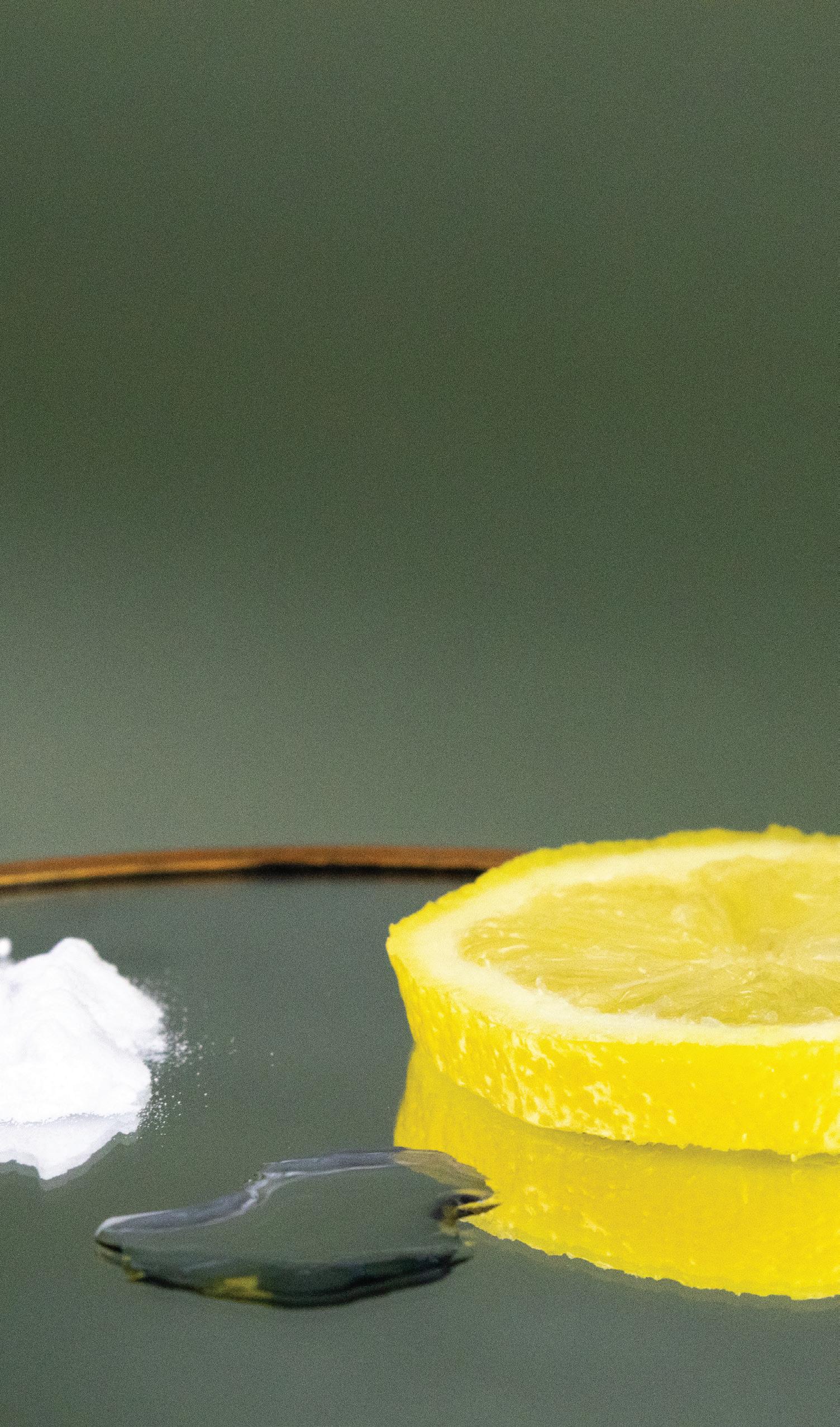
Knowing what’s insiDe homemaDe is better for you, your wallet anD the planet
• Distilled water is water that has been stripped of minerals that leave behind hard water stains.
• Baking soda absorbs odors and can remove stains. It can be bought in the baking section of a grocery store.
• Vinegar kills germs, removes stains and can eliminate odors.
• Lemon juice can be added to many cleaners to deodorize, kill bacteria and cut grease. It can also add a fresh, lemony scent. If added, the cleaning solution should be kept in the fridge.
• Tea tree, lavender, cedarwood, lemon and spearmint essential oils are natural disinfectants that can also be added to cleaning solutions for scent.
• Soap nuts are the dried husks of the soapberry nut, which come from the sapindus mukorossi tree. This tree is native to the tropical weather of India and Nepal. Soap nuts have been used for hundreds of years in Eastern countries because they act like a detergent and can be reused.
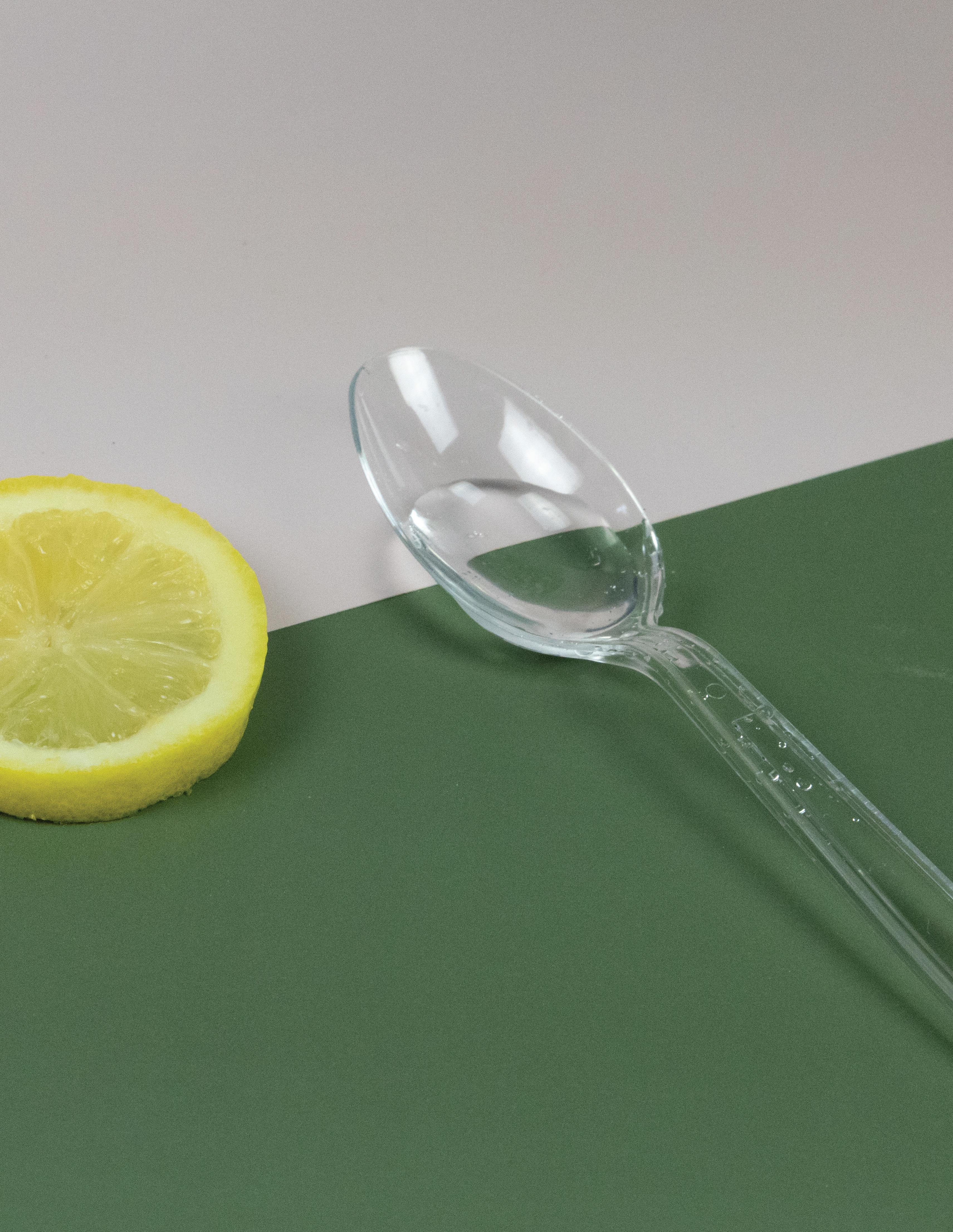
Federal laws and regulations do not require cleaning products to display their ingredients, unlike food and personal care products, says the One Green Planet website. Studies have found that repeated exposure to the ingredients found in many cleaning products have health risks, One Green Planet says. Using natural ingredients can greatly reduce the number of toxins people are exposed to in their homes, the website says.
Homemade cleaners will also cut down on the chemicals and plastics in store-bought cleaners that are harmful to the environment, the One Green Planet website says. To top it off, TODAY.com says homemade cleaners cost less than $1 per bottle compared with $5 to $15 manufactured cleaners can cost. Furthermore, most of the ingredients that go into homemade cleaners are already found in most kitchens, the website says. •

Anon-profit organization dedicated to restoring and repairing degraded coral reefs across Hawaii called Kuleana Coral Restoration is doing its part to revive declining marine ecosystems, said Daniel DeMartini, the co-founder and director of science at KCR and an adjunct BYU-Hawaii faculty member in the Faculty of Sciences.
DeMartini explained how KCR employs a proactive strategy by identifying damaged coral colonies with a low chance of survival, which they term “corals of opportunity.” He said, “Our dive team collects these corals, reattaches them to solid reef substrates and strategically plants them in areas deemed degraded or at risk.” He said the goal is to
rebuild portions of the deteriorating ecosystem by scaling up coral restoration efforts.
Esprit Saucier, an associate professor in the Faculty of Sciences who collaborated with DeMartini in his research, said, “KCR was looking at, ‘How can we rebuild the reef?’ From these corals of opportunity, … we start to build the reef back. We also know that coral can recognize itself. If a piece is broken off but we glue it back and it grows, the coral right beside it recognizes it.” Saucier said she finds coral fascinating because they do a lot for ecosystems and individual animals by providing them food and shelter.
Saucier said the organization is concerned about the necessity of sufficient coral density and species diversity for successful spawning, highlighting the importance of achieving
a threshold for self-sustaining reproduction. Saucier emphasized the importance of collaborative approaches between researchers and the need for innovative solutions. Additionally, she expressed interest in studying the impact of invasive coral species on native ecosystems, particularly regarding competition and long-term consequences for reef health. Through their research, Saucier said she aims to contribute to strategies that not only replant lost corals but also promote the recovery and resilience of coral reefs in the face of environmental threats.
Kate DeMartini, Daniel DeMartini’s wife from Laie, expressed her admiration for the progress of KCR, saying, “It has been amazing watching KCR starting from where they are
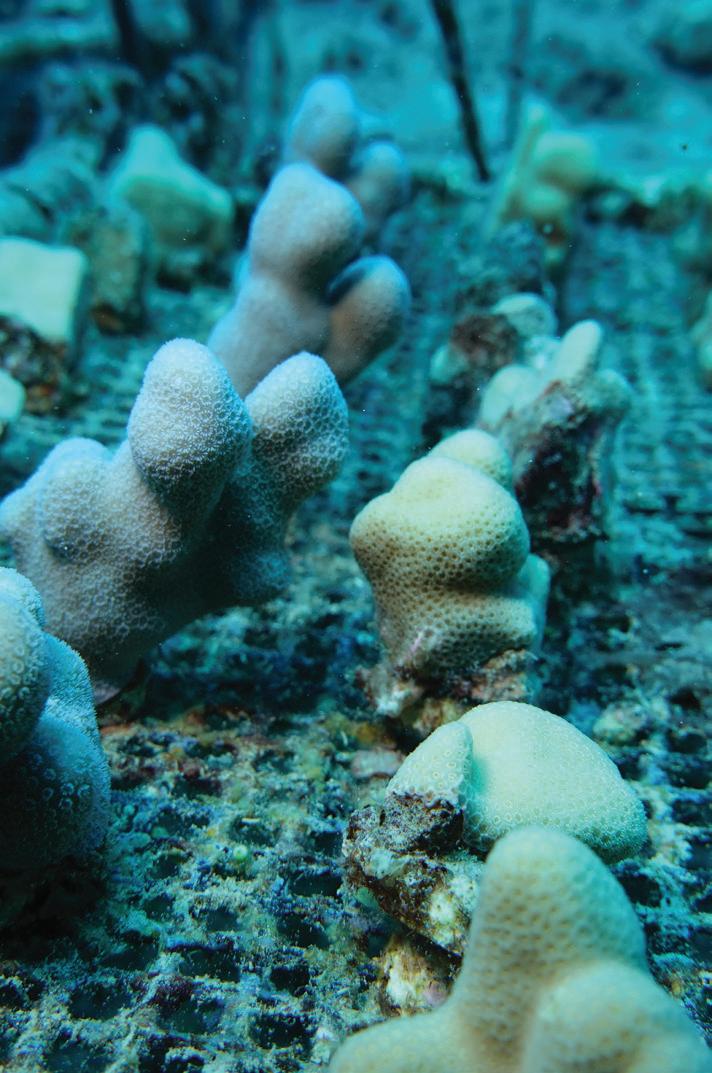
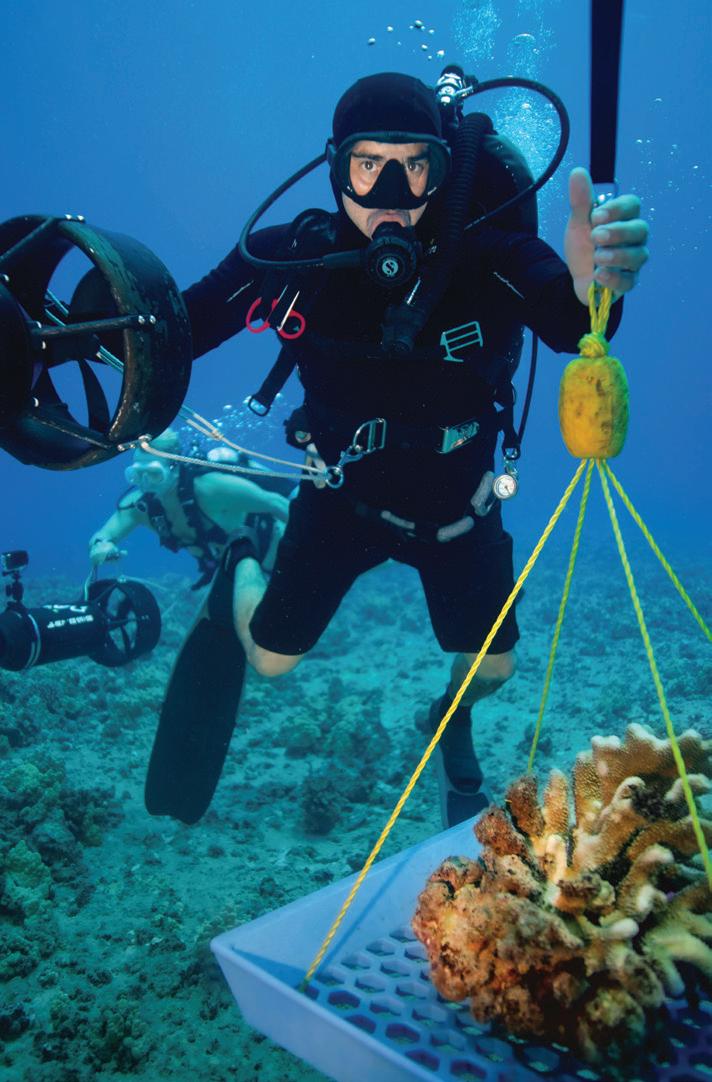

now.” She highlighted Kuleana Coral’s partnership with the Mars Coral Reef Restoration Program, a company that is involved in coral restoration in Indonesia. She shared, “We got to travel to Indonesia to see how they do coral restoration … and hopefully KCR can learn from their techniques to apply it here.”
Kate DeMartini also discussed KCR’s geographical challenges, noting the distance to their current project location in Koolina and the appeal of other potential sites for coral restoration that are closer to home on the North Shore. She commended KCR’s dedication, mentioning its recent involvement in the Unity March for Lahaina in Maui.
Daniel DeMartini explained the urgency of the coral reefs’ situation. “The bigger issue here is that our coral reefs are dying.” He said giving back to the ecosystem by rebuilding reefs, fostering the return of marine life and alleviating the pressure on these vital habitats is essential.
KCR faced initial challenges, Daniel DeMartini said, including navigating logistical complexities, obtaining necessary permits and developing techniques to execute large-scale coral restoration. However, he said the organization has made significant progress. It has built strong relationships with local communities, drawing upon their knowledge to identify optimal reef restoration locations, he explained.
KCR traces its beginnings to 2019 when Daniel DeMartini responded to a call for scientific help from a group of fishermen. He
said they originally focused on invasive fish issues but shifted their attention to coral restoration after witnessing significant coral bleaching events on the west side of Hawaii.
According to Daniel DeMartini, KCR has secured funding from federal sources, community members and foundations that share their vision. However, he said the journey has not been without hurdles, particularly regarding legal constraints.
Kuleana Coral was initially prohibited from touching or planting coral by the state, he said, but it has since developed a positive relationship with authorities and gained approval for its coral restoration activities.
The National Oceanic Atmospheric Administration awarded KCR with a grant to address the challenge of workforce availability and train local residents in coral restoration techniques, Daniel DeMartini said. The program equips individuals with necessary skills and provides certifications, which address a common barrier residents face when seeking conservation and marine biology employment. He continued, “The goal is to build a foundational workforce so that as we try and scale up the process of healing the reefs around Hawaii, we have people trained and resources to be able to do that.”
Saucier explained the importance of tenacity in coral reef restoration efforts. “I think you should never give up. You just keep
on trying.” She highlighted the collaborative nature of scientific inquiry, suggesting that if one person doesn’t find a solution, the next may succeed. Saucier urged researchers to expand their knowledge and continue striving, noting that persistence is essential to avoiding failure.
Despite the daunting outlook, Saucier emphasized the need to remain committed to coral conservation efforts. Saucier also addressed the role of individuals in protecting coral reefs, emphasizing the significance of small actions at home. She advised against littering and improper waste disposal and said protecting the land can indirectly safeguard the ocean. Additionally, Saucier cautioned against touching coral, underscoring the importance of minimizing direct human impact on fragile reef ecosystems.
Daniel DeMartini reflected on the successful reattachment and growth of coral fragments planted by Kuleana Coral’s team. He said the regular positive follow ups on the planted corals showcase the tangible impact of the KCR’s efforts on the future of Hawaii’s coral reefs. •
Look to the skies and see the hand of God brushing pigments across the horizon
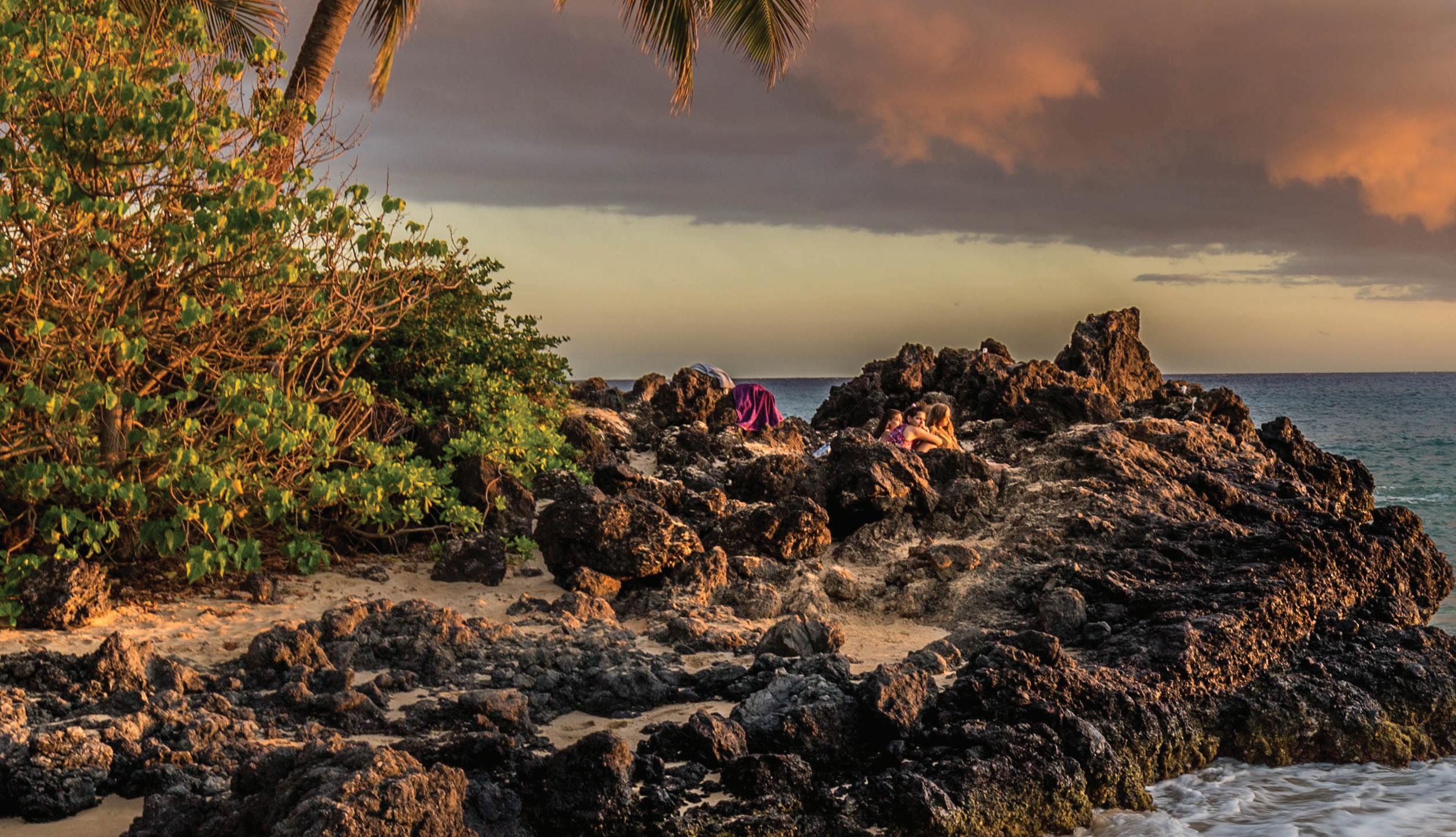
The sunrise dispels the dark. The night sky dazzles with hope. The mountains are our connection to heaven. BYU–Hawaii professors said God is in the very details of everything people see.
Aaron Shumway, the Religious Education director and an associate professor in the Faculty of Religious Education, said, “You don’t often find individuals who combine a mastery of form with a mastery of art, beauty and aesthetic. The Creation is evidence that the Savior is a functional, scientific and [all-knowing being] who is also an artist and knows what beauty is.”
Before the Lord created this earth, he had already created innumerable worlds, said Shumway. “He had done this so many times, and He did everything just as we needed it,” Shumway added. New scientific discoveries make the creation of the earth fascinating, he said. Shumway said it is mindblowing to think about how God anticipated the inventions of cellphones, space travel and other future technologies.
Matthew L. Bowen, an associate professor in the Faculty of Religious Education, said the beauty, immensity and grandeur of God’s creations amazes him the most. “Scientists look
out through the deep space telescopes thinking they have found the edge. They look a little farther, and they figure out they haven’t found the end,” he said.
Bowen continued by sharing the words from the song “If You Could Hie to Kolob,” written by William W. Phelps. The song says, “There is no end to the matter, there is no end to space, [no man has] seen the outside curtains.” Bowen said this concept from Phelps is talking about how when people think they have found [the edge], they actually haven’t.
Po Nien (Felipe) Chou, a professor in the Faculty of Religious Education, said, “It is incredible just to be in nature and to see the beauty and variety of God’s creation.” He said the Creation goes beyond a body of water, land masses, vegetation, flowers, animal life or even with the man and woman that were created. He said there are a variety of people and it is visible at BYUH, where people from other countries, cultures and languages come together.
Chou said the sunrise is one of the many details in nature that amaze him. He enjoys seeing the whole world dark and watching the sun rise from the horizon, “dispelling darkness and filling the whole earth with light,” he said.
In contrast to Chou, Shumway said, “The night sky, for me, has often been a special part of nature.” He said whenever he looks up to the sky during the night or when he is on a hike with his family or his son, he observes there is so much out there. He said these experiences show him there is no way the earth was created by chance.
Shumway shared his experience of his grandfather’s death when he was 13. “I remember laying outside of our house and staring at the night sky, thinking, ‘Where are you, Grandpa?’ - just knowing he is out there somewhere,” he said. Out of all the natural vistas out there, Shumway said the night sky is the one that makes him say, “Wow! There is a God. He is out there.”
Bowen said he is partial to mountains and the idea of mountains as a temple. He also shared how Isaiah and 2 Nephi explain the importance of the mountain as the Lord’s house. “[The mountain is] a kind of meeting point between heaven and earth. I love things like that,” he said.
“I am deeply touched by the beauty around us here on the island,” said Bowen. He said he grew up in Utah, where beautiful manifestations of nature are everywhere. He said while teaching the Pearl of Great Price, he contemplated the relationship between Jesus
The world denotes there is a God, and BYUH religion professors share their insights into the Creation of the earth and the immensity of spaceBY CJ SHINIHAH NOTARTE

Christ as the Creator and Jesus Christ as the Redeemer of Creation. “What He creates, He redeems,” Bowen explained.
Bowen said this idea leads him to the conclusion there is something about the Redemption being a part of the Creation. He said, “Something isn’t completely created as it is intended to be until it is fully redeemed and sanctified by Christ.” He said this has implications for nature and people we see around us.
The reason for the Creation
Chou said in his high school and college years, he took biology classes and learned about the different animals, insects, trees and vegetation. “It strengthened my testimony of God,” he said.
Chou explained the more people study all things about the earth, the more people learn about Heavenly Father and Jesus Christ.
“As I watch, observe and learn about nature, I stand in awe and amazement. It allows me to appreciate Him and understand Him more,” he said.
People hear many creation stories from other cultures and sometimes they forget church members have their own, said Shumway.
He shared a quote from one of President Russell M. Nelson’s talks: “The earth was
created so families could be.” Shumway continued, “It’s not random. It’s all part of His plan.”
“[The Creation] helps me prioritize what is most important in life,” said Shumway. He said the Creation is not only a place to have families but also to strengthen them. Going on outings and spending time in the environment the Lord created has helped him prioritize family trips and being out on the beach or in the mountains, said Shumway. “We have a firm testimony that this earth is created by a divine being, Jesus Christ, under the direction of the Father so that it fulfills its purposes to prepare us to return to Him,” he shared.
Bowen also said when people are out in the Creation with their families, they realize it is part of the whole purpose of their lives. He said when they realize there is an order and a purpose to life, a lot of other things fall into place.
Chou shared three pillars of eternity from a devotional by Elder Bruce R. McConkie. Chou said, “In order for us to understand the atonement of Jesus Christ, we must understand the Fall of Adam and Eve. And for us to understand the Fall better, we must understand the Creation.” He said the more he understands how things were created and formed, the more he appreciates the Fall and the Atonement of Christ.
“Science and faith are not opposites,” said Bowen, “but some people might try to put one in opposition to the other for their own purposes.” The prophets of The Church of Jesus Christ of Latter-day Saints have emphasized the importance of embracing all truth, said Bowen. He said people should take this seriously and embrace the truth they learn from science, revelation, scripture studies and faith.
Additionally, Chou said, “Faith and science are not exclusive. They are connected.” He said he believes if people understand both, they will see how they testify of each other.
Bowen said believing in the scriptures and believing in revelation does not compromise learning truths about science. “We should never put ourselves in that position,” he said.
Chou said, “I am grateful God created this earth for us to enjoy, explore and learn.” The more people understand, appreciate and take care of what the Lord has given them, the better stewards of the earth they become, he said. •
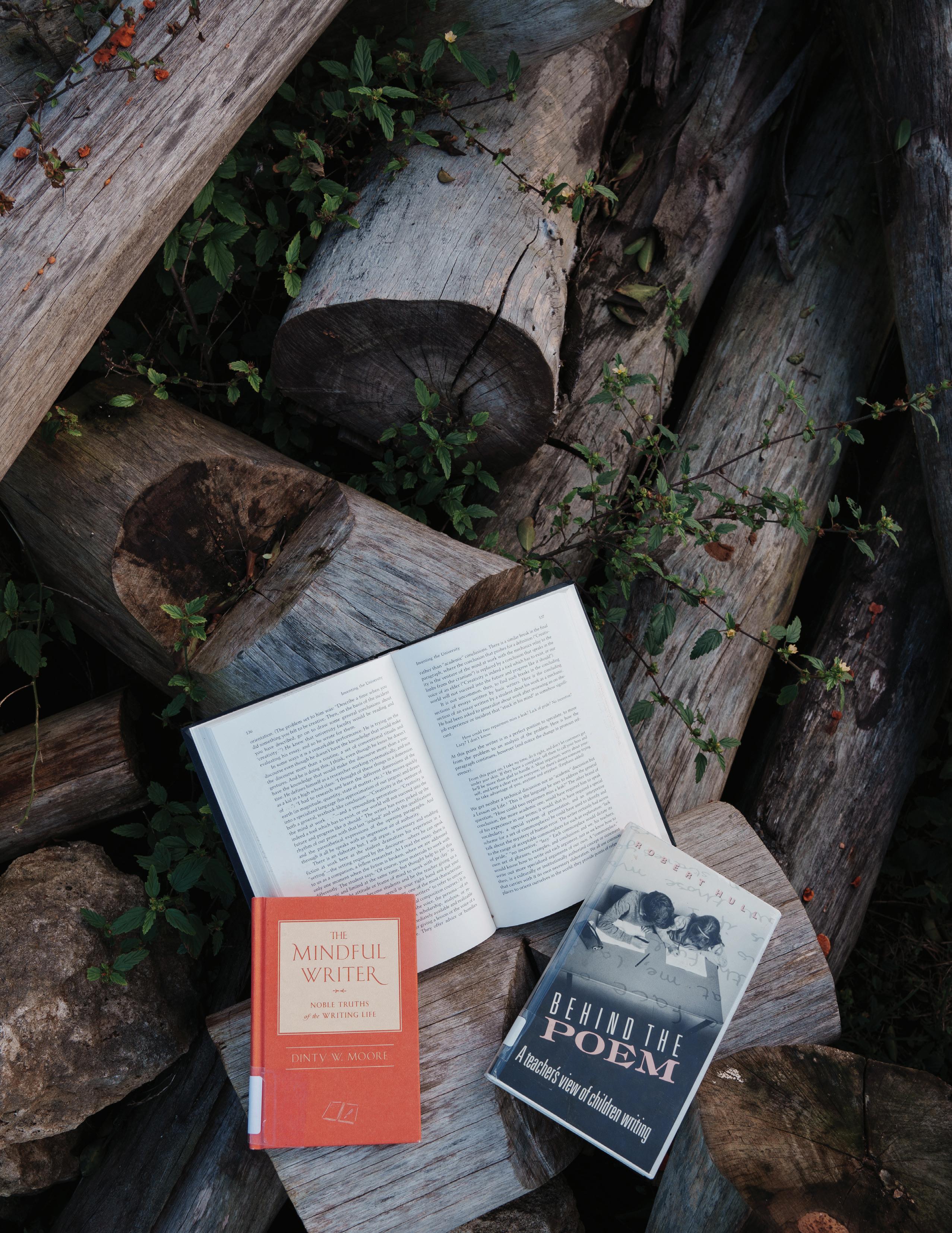
The ultimate inspiration to write comes from time spent in nature, said Sai Ramirez, a sophomore majoring in information systems from the Philippines. “When humans make a building,” he said, “they already have a purpose in mind. But with Godmade nature, we are the ones who have to find a purpose for it.”
Ramirez said he depicted a river in his poem titled “Til You Forget” and submitted it to the Kula Manu, the BYU–Hawaii studentpublished literary journal. “‘Flow my quiet river, and fill with peace, the ocean bed,’” he quoted from his poem.
This poem is a reflection of his feelings for his fiancé, he said. Most rivers are rushing and dangerous, he continued, “yet this river is calm.” He said he imagined a clear, blue river, and in his imagination, it was the most beautiful river. The poem reflects the peaceful feeling his fiance provides as a solace in the “rushing world,” he explained.
Elaborating on the creation process of the poem, he said he first recalled special memories with her and the growth he wanted to see from their relationship. Next, he said he flashed back to the memory of his favorite ocean and garden, and then he combined the memories into his favorite type of poem. “I love poems, the ocean and the garden,” he said. “Why not combine all of them?”
Jase McDonald, a senior majoring in English from California, also said he loves nature-related literature. He said relating to animals’ behavior is an easy way to reflect on the human experience. McDonald pulled

out a past Kula Manu journal and pointed to a non-fiction story titled “Humpback Whale” written by Portia Thompson. The story portrays the life of a mother and compares it to a female humpback whale taking care of her baby calf. He shared that part of the story says, “‘Sitting there watching the whales with my three-month-old daughter made me wonder, does the humpback whale have it all figured out? Does being a mom come naturally? Does she get overwhelmed? … Does she have days where she just wants to skim along the surface and do her best to just get by?’”
He said the writer perfectly illustrated the similarities between human experiences and the natural world. Through the story, he said he learned the sacrifices mothers make across
species are the same. “I am obviously not a mother myself,” he said, “but [when I read it], I think of my mother and everything she had to do for me.” The story helped him appreciate his mother more, he said.
Ramirez said he can convey his emotions verbally, but it does not sufficiently capture his deepest thoughts. Poetry is his safe zone to describe heartfelt and indescribable feelings that sound like an exaggeration when said, he explained. “[In poetry], people are free to express without the burden of seeing the immediate response of the reader.”
Patricia Patrick, dean and associate professor in the Faculty of Arts & Letters, said
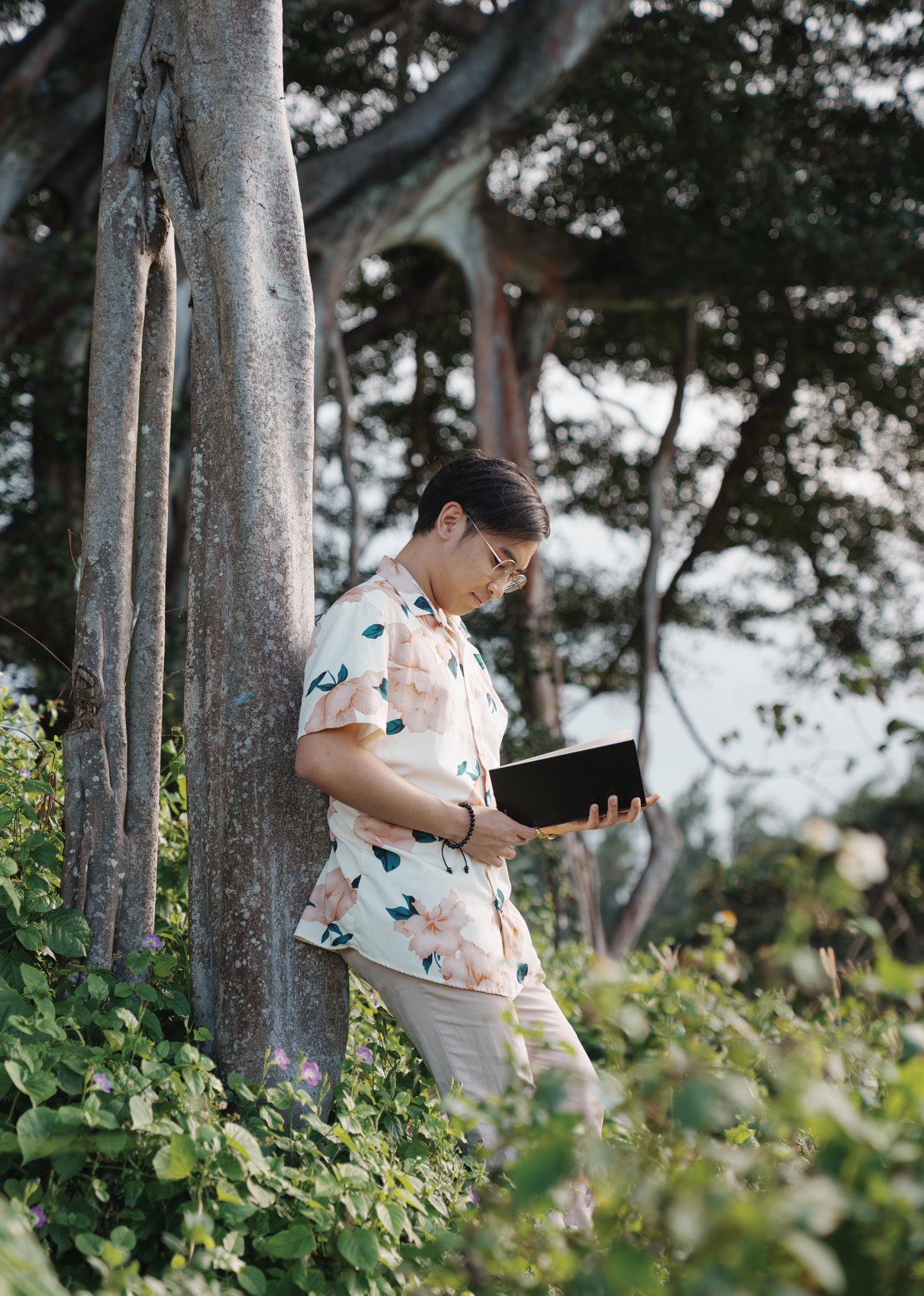
“Being the wind would be the best because it can go wherever it wants to go, and it doesn’t need to be in open nature.”

Sai Ramirez
her favorite book, “The World of Wonders” by Aimee Nezhukumatathil, offers a magnificent perspective on nature. Her point of view on nature drastically changed after she read the book, Patrick said. “I think that’s the incredible thing that literature does for us,” she continued. “It appeals to our minds and hearts, [and then changes us as] a whole person.”
She likened language to a lens, saying, “It’s like photography. We focus on something, and we shift the focus to emphasize certain things and bring out things we don’t see when we’re looking ordinarily.” She said Nezhukumatathil extends an implicit invitation to observe nature more attentively. “Her poetic language wakes up our sense of wonder so we [can] see things almost as if for the first time.”
Patrick said it is easy to forget about the miraculous world people live in and just go through their daily routines, but literature highlights life. She said literature seems to say, “Don’t forget to look at how amazing this was,” and serves as a reminder for everyone to not take anything for granted.
There are all kinds of different intelligences in the world that are aware and sensitive, and people need to be aware and sensitive of them as well, said Patrick. She said, “We tend to think that we are separate from nature, but we are nature ourselves.” She explained some things on earth share the same characteristics as humans.
One creature on earth she said she can relate to is the aspen tree. She described

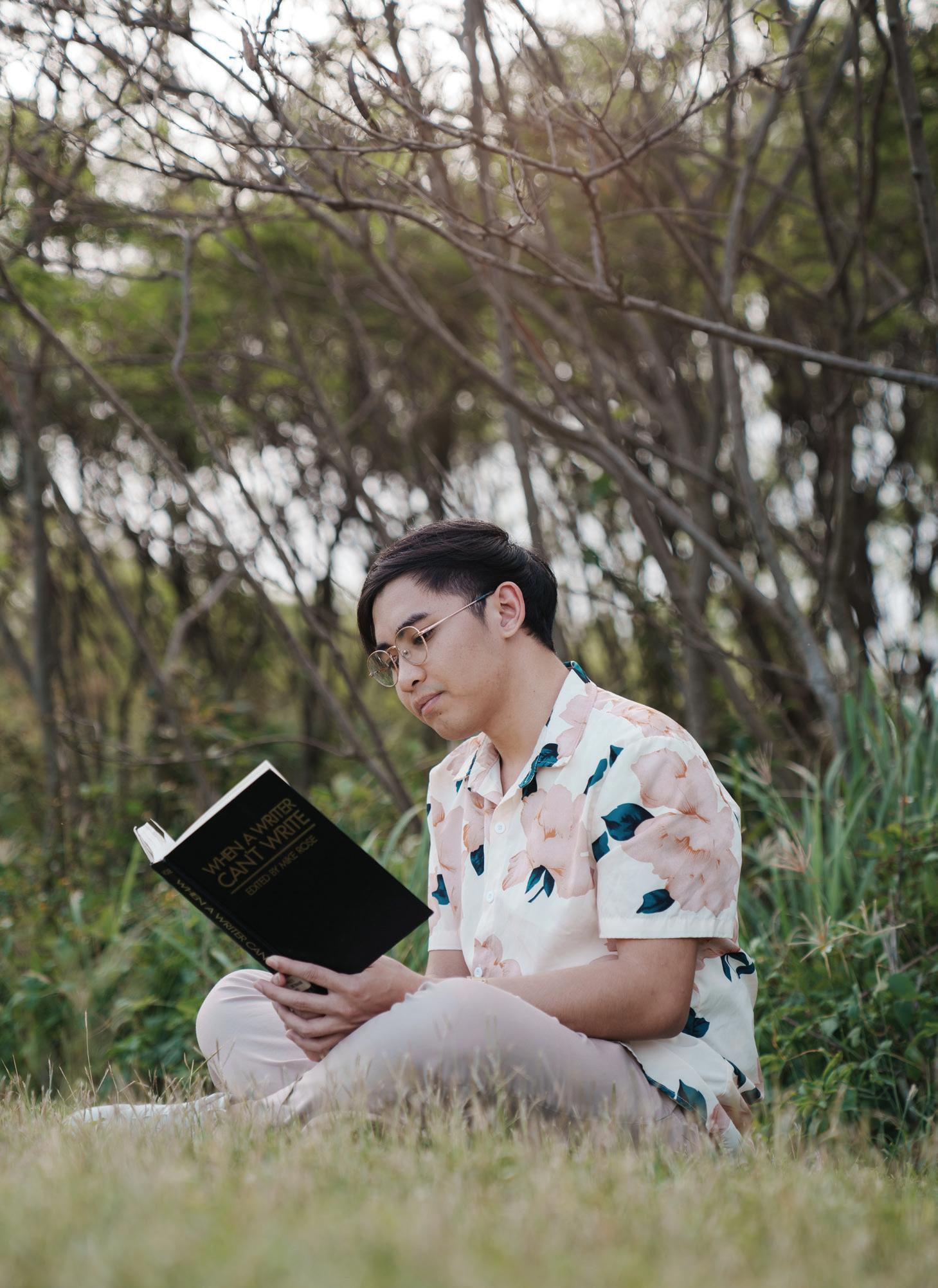
how this tree’s leaves dance in the wind, intertwined and interlocked with others in the aspen forest. She said this reminds her that the aspen has always been a part of the community just like she is part of a community.
McDonald said a creature that embodies his personality is an orangutan. “It has a very unique look. [It is] slow, gentle and quiet,” he said. He said he wants to embody the orangutan and be a more peaceful person.
Ramirez said, “Being the wind would be the best because it can go wherever it wants to go, and it doesn’t need to be in open nature. It can be in the cities and even in crowded places.” He said he wants to be traveling and observing things in the world. •
Right and above: Sai Ramirez says poetry is his safe zone to describe his feelings. Photos by Yui Leung. Graphics by Yichi Lu.
A music composer, a wood carver and a dancer all say their art is inspired by natureBY EMMIE SIEBERT
When people talk about art, most think of a paintbrush and a canvas, said Caroline James, a senior majoring in information technology from India. But James, along with two other artists, said they have found other art forms inspired by nature.
Sam Mangakahia, an alumnus from Australia with Maori heritage who works as a wood etching and carving artist, said, “The unpredictability but also predictability of the world is so innate. [Nature] is not trying to be symmetrical, meaning balanced, but it just is.” Artists try to recreate that balance, he explained, and it takes intentional energy and thought.
elements of nature
James explained that dance can represent many aspects of the world, such as fire, water and peace. “I love to dance. It is just one of the best things that could ever happen to me. It lifts me up, makes me happy,” she said.
Though James said her go-to dance style is hip-hop, she recently has been learning more about traditional Indian dancing. “There is this one Indian song, ‘Man Mohini,’” she said, “that is about a girl’s beauty compared to the elements of nature.” She said she loves dancing to this song through hip-hop, but others also dance in a traditional Indian style.
James said emotions and dance styles can be tied to natural elements. Rage is paired with fire, and water is represented through fluid motions. “I represent water when I am dancing,” she said, “My mom said that is the best way I can dance.”
Mangakahia said when he was young, “I would always be doing something with my hands.” His parents, especially his mom, fostered his growth and creativity, he said. His father was a performing artist and ukulele teacher, so there were always spare ukuleles around the house, Mangakahia said. One day, Mangakahia said he took a kitchen knife to one of the spare ukuleles and began etching designs. That was the start of his company Fresh Ukes, he said, which he started at 15 years old.
Mangakahia’s designs are inspired by cultural patterns based on natural elements, he said. He said he uses a lot of birds in his artwork, specifically iwa birds that represent the sky. He also uses designs that represent navigation and the sea, he said. “There is a never-ending resource of designs when you look
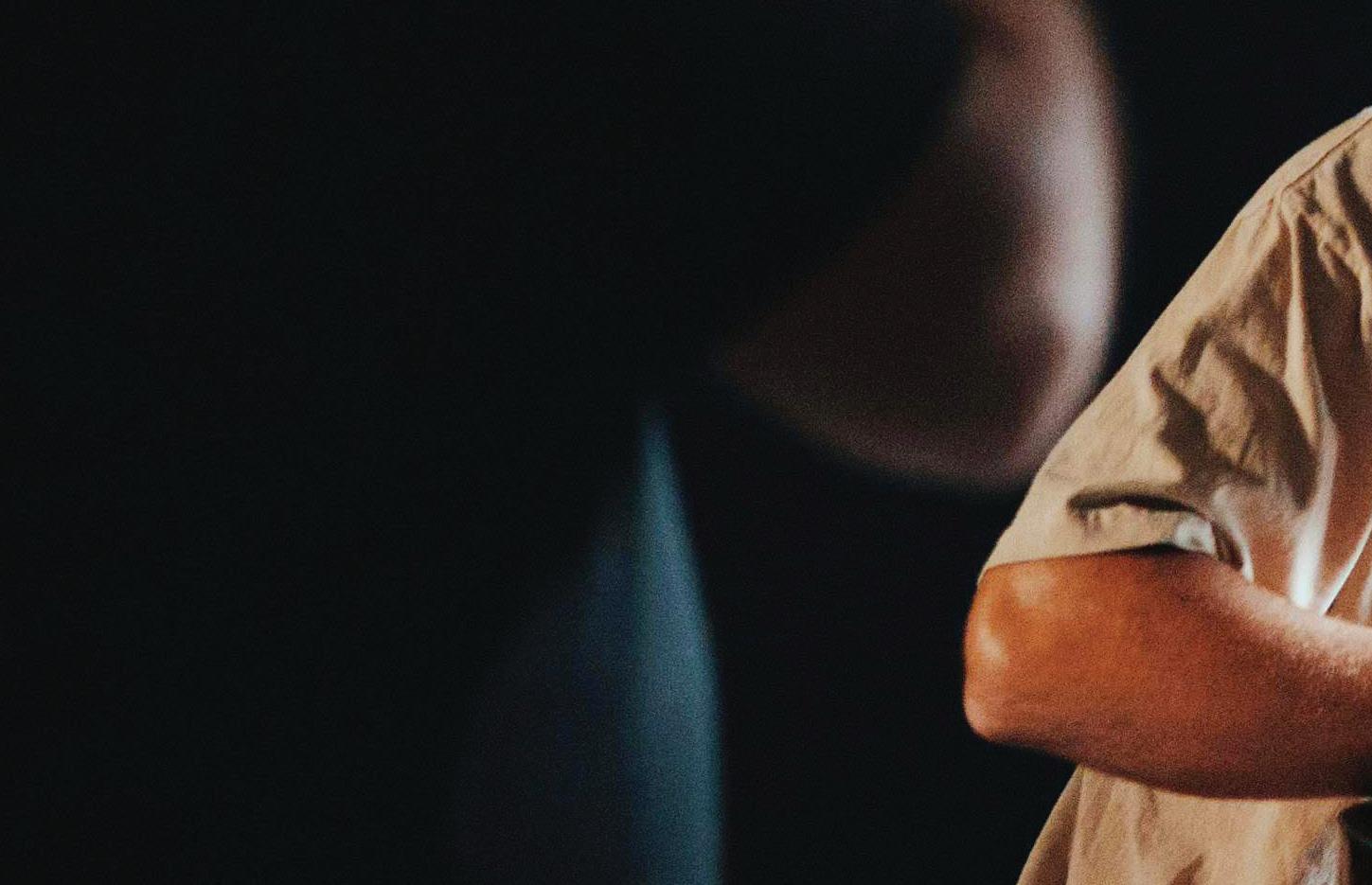
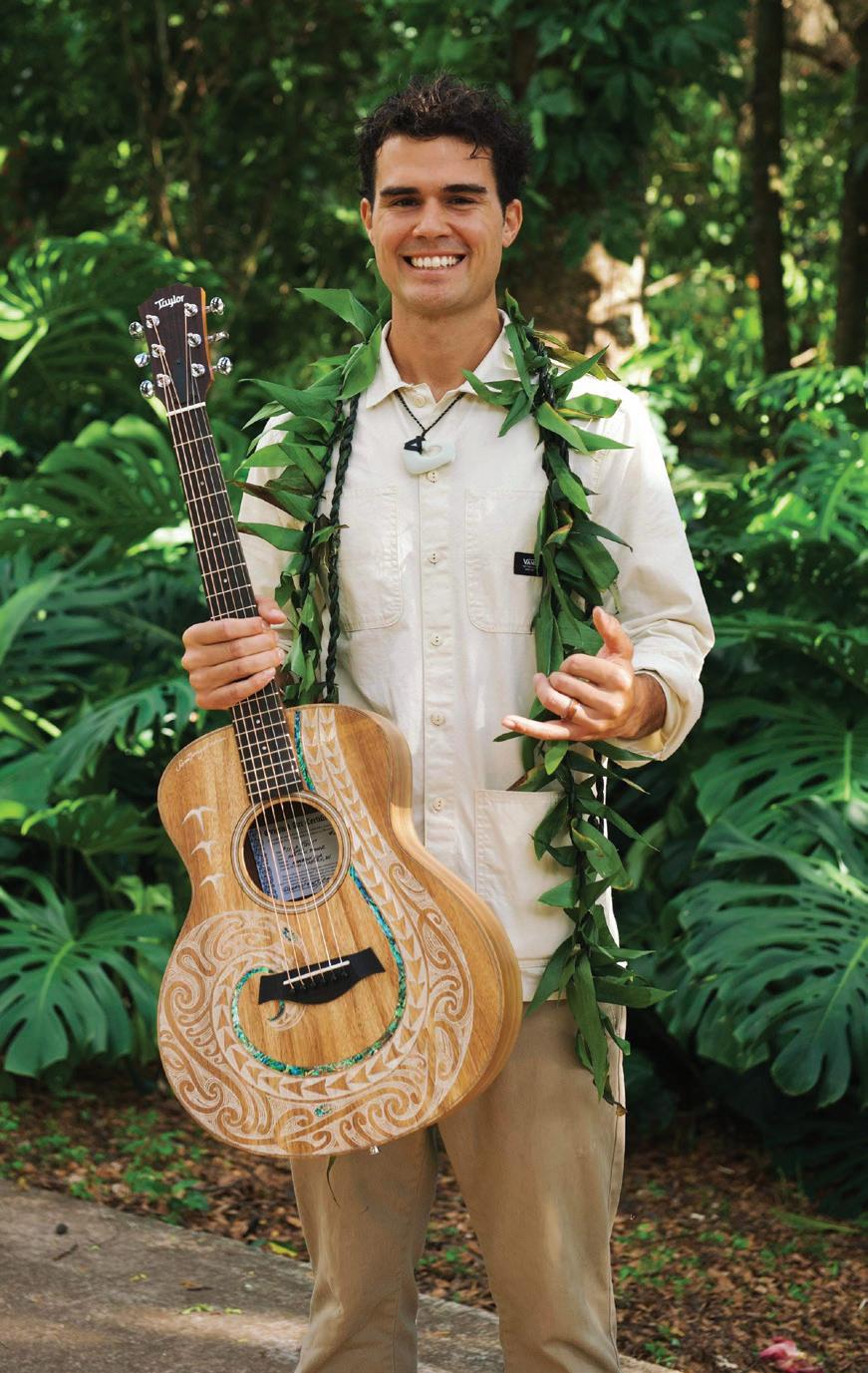


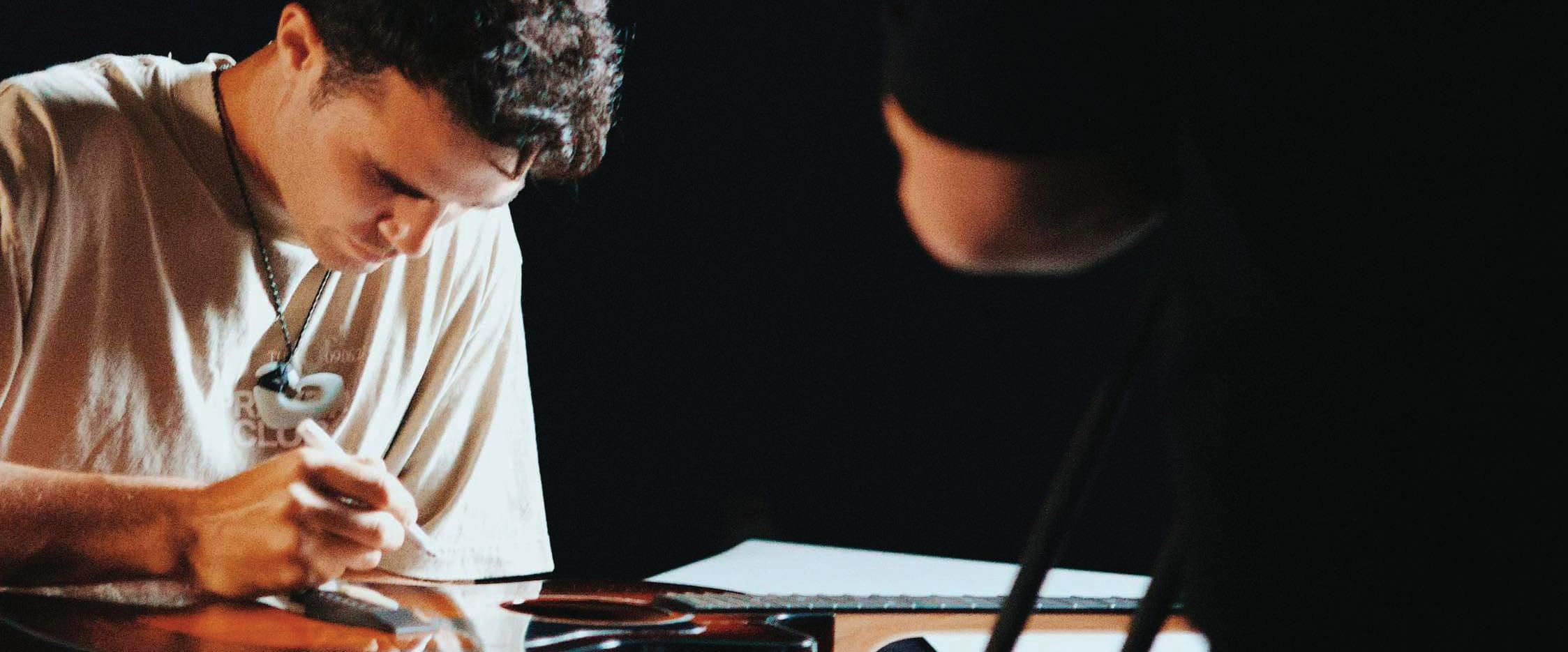
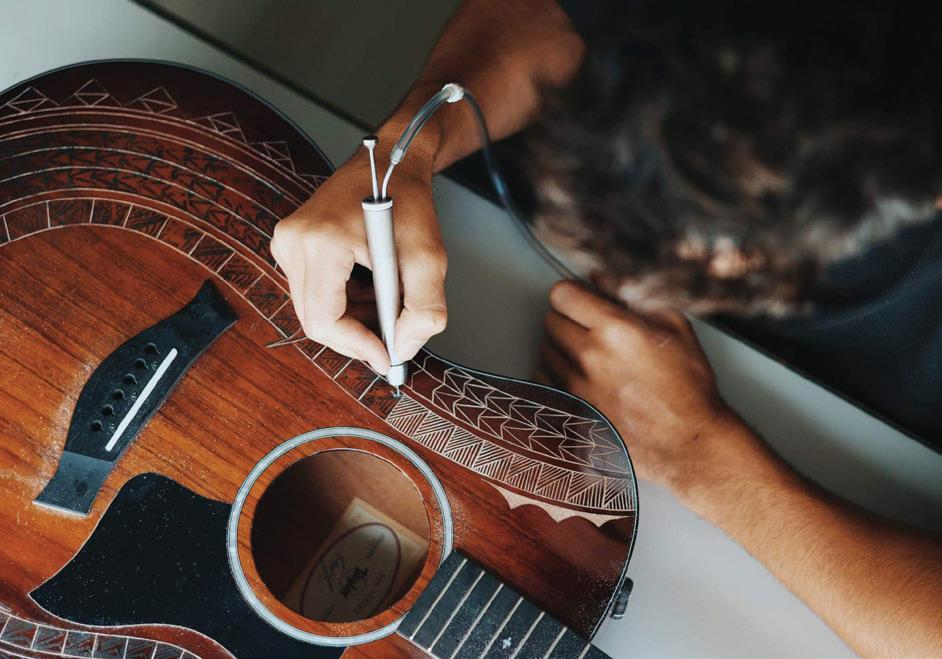
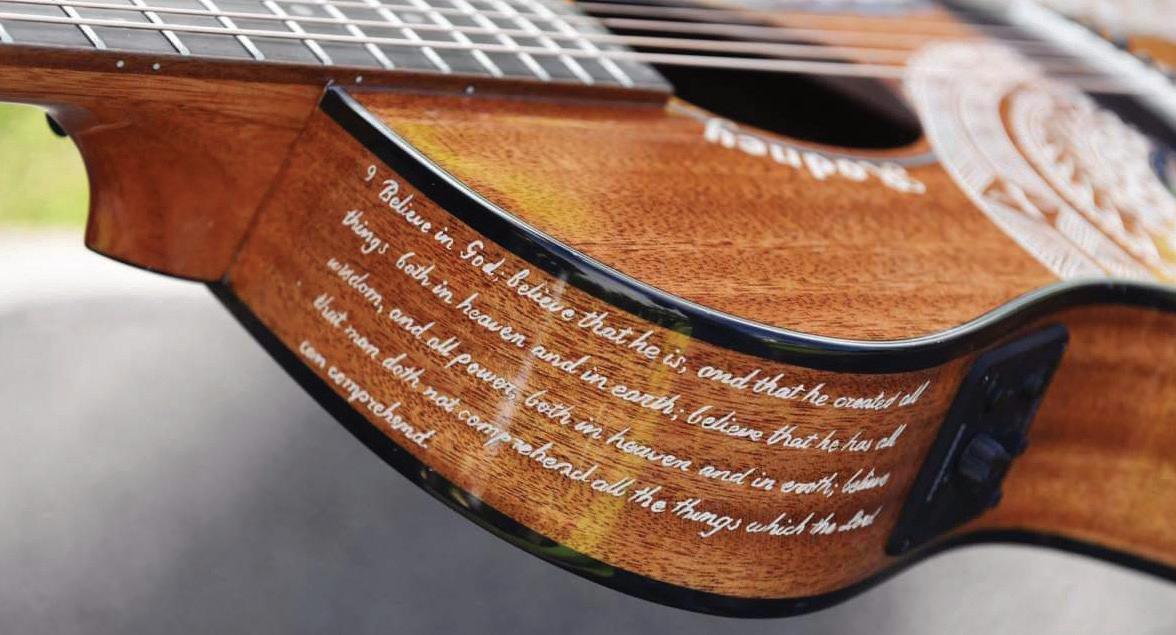
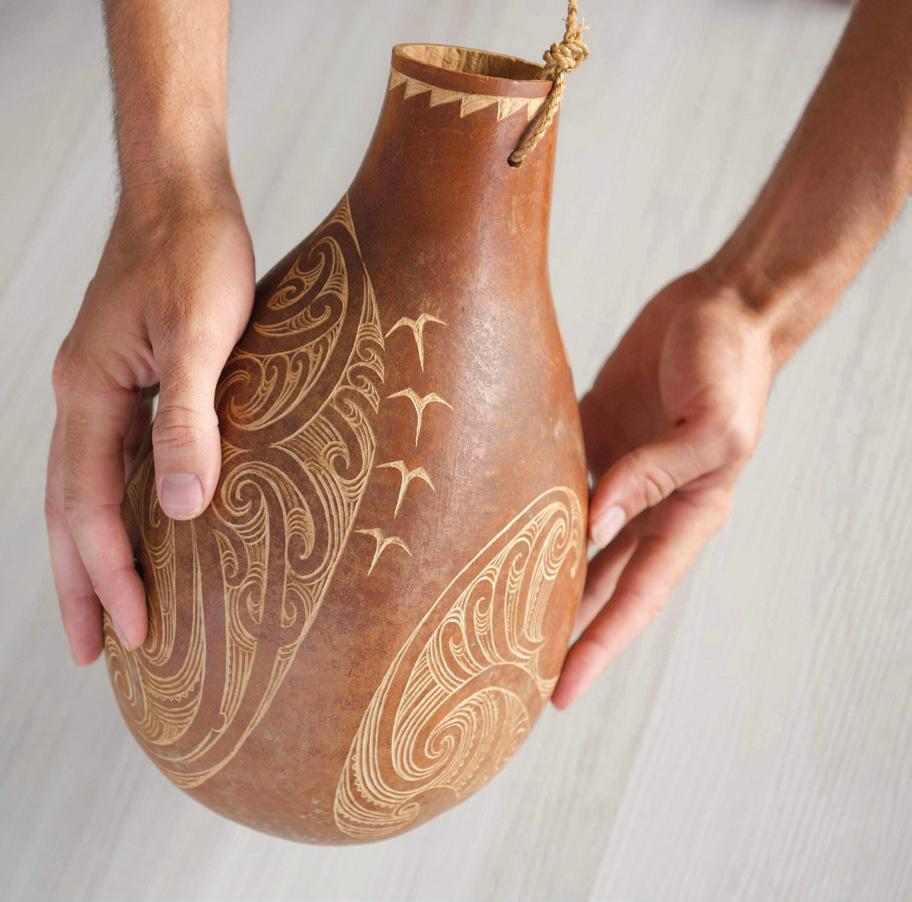
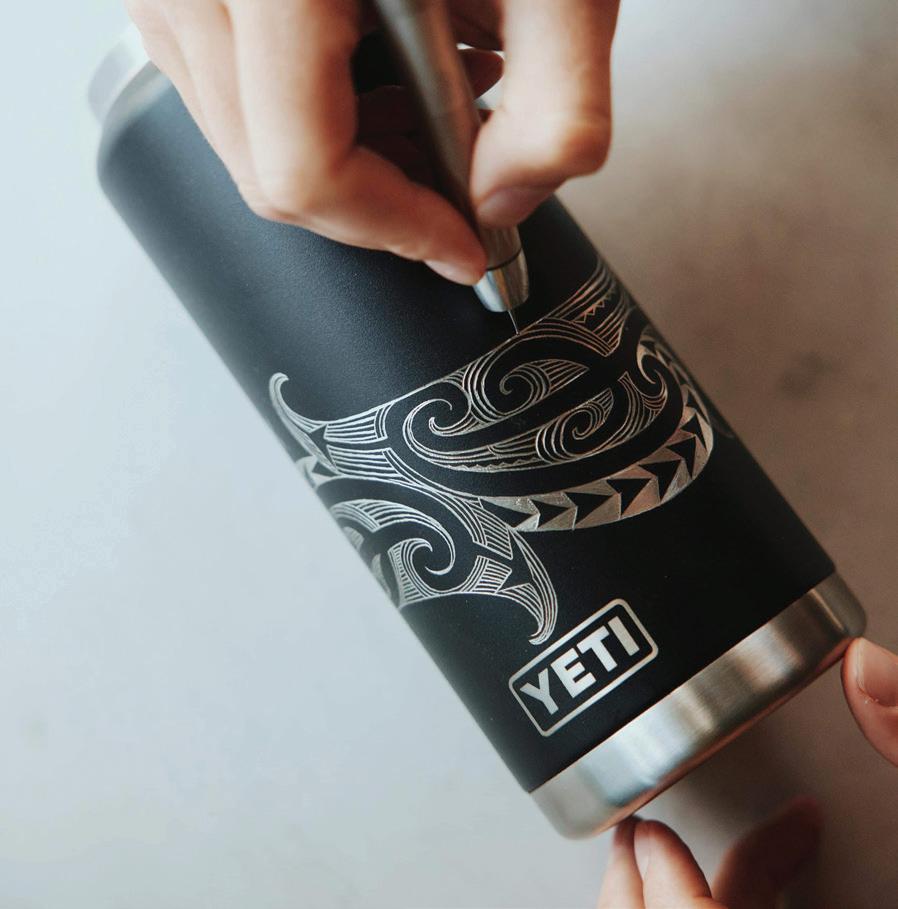
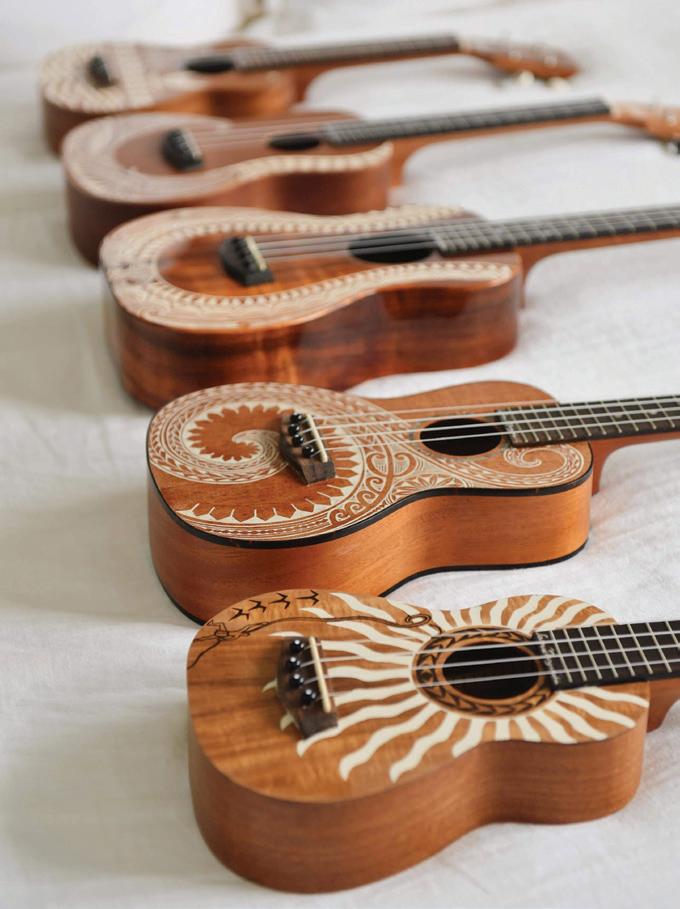 Sam Mangakahia shows off his nature-inspired carvings on guitars, ukuleles, jugs and water bottles.
Sam Mangakahia shows off his nature-inspired carvings on guitars, ukuleles, jugs and water bottles.
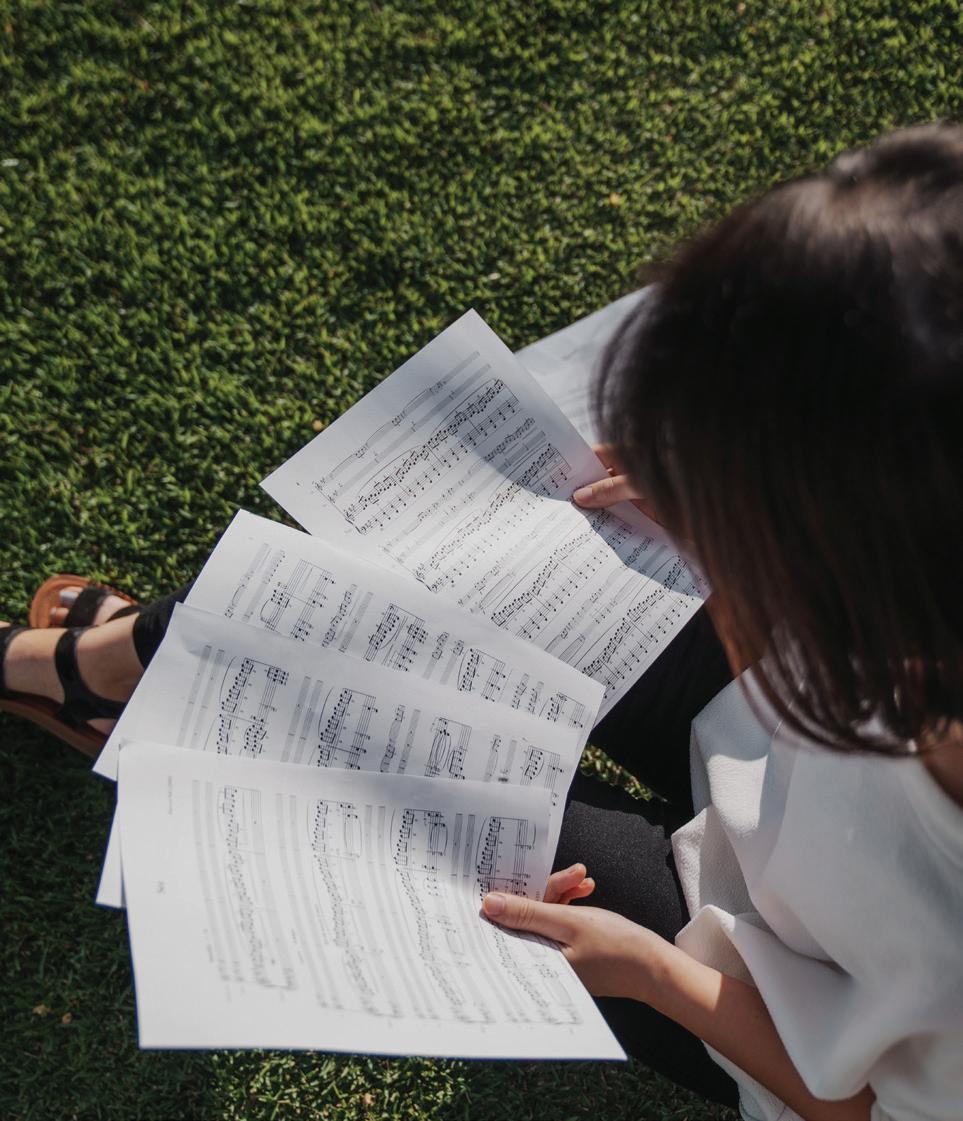
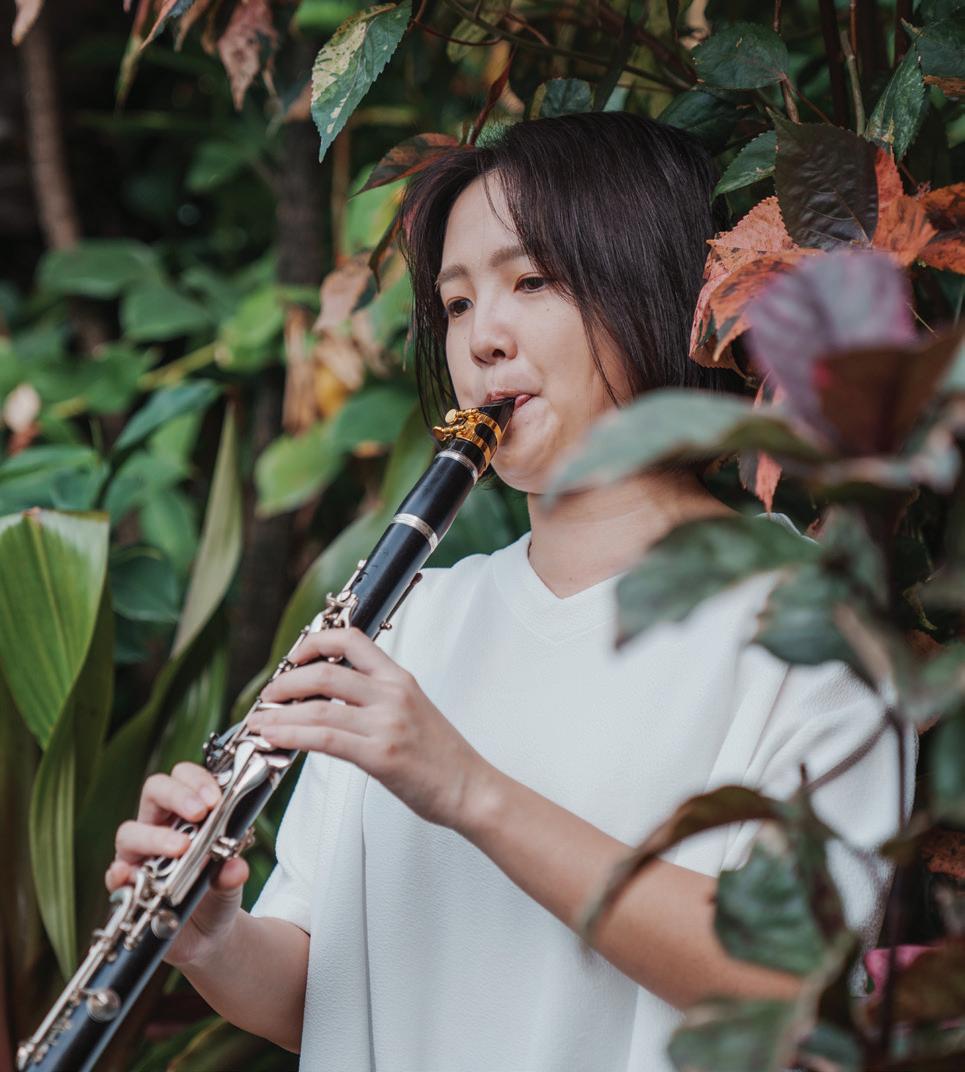
outside,” Mangakahia shared. He said he is currently working on a design inspired by ulu breadfruit.
Haruna Sato, a Japanese senior majoring in music with a composition emphasis, said she finds inspiration for her art at the beach. She explained, “At the beach, there are no noisy sounds… Of course, there are the sounds of the waves crashing, but that is not noise to me.” Sato said the distant sounds there are the noise of nature
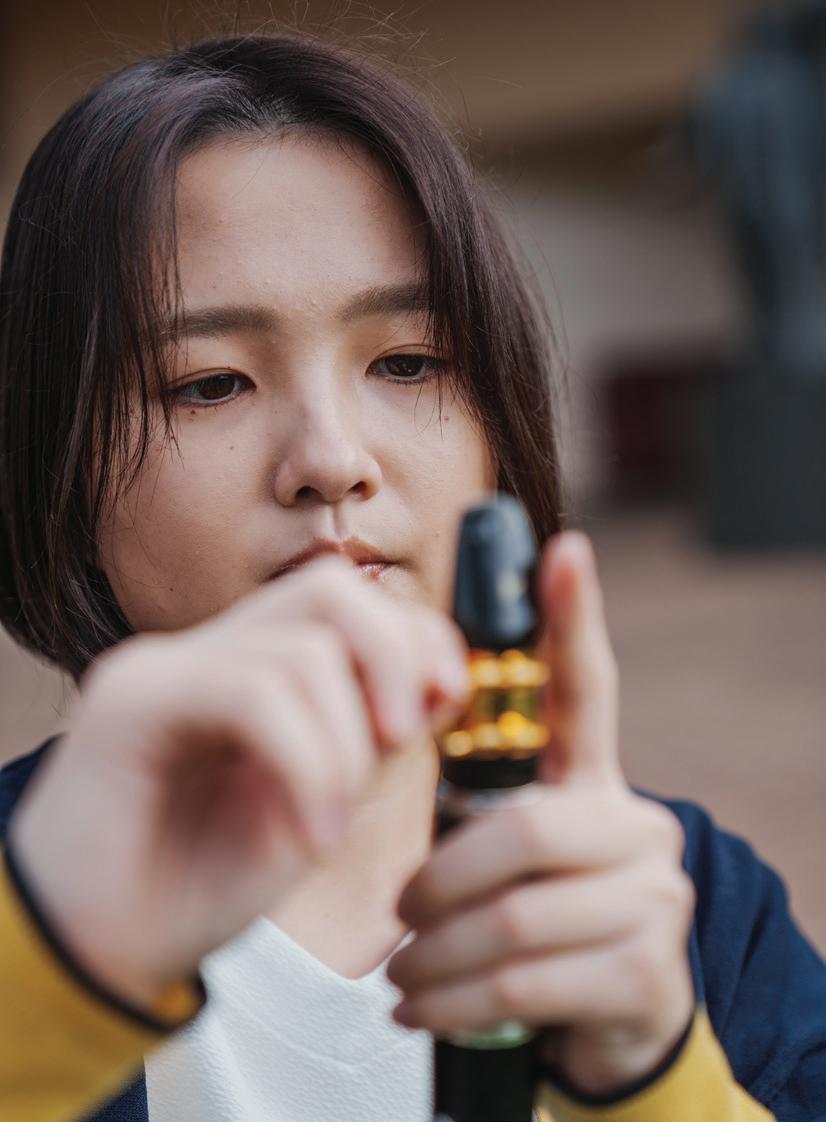

calming and help her focus on her musical compositions.
Sato said she uses composition to express feelings, emotions and her thoughts. Sato said, “I love to walk around the beach around 4 or 5 a.m. to see the night sky.” She explained there are so many people during the day that it is a little too noisy for her. “But at night time,” she said, “I can feel nature more.”
“Sometimes I use the sounds of nature in my songs,” said Sato. There is a specific piece Sato composed entitled “Sea.” The

instruments included in the piece are a clarinet, violin and piano, and she said the piano imitates the sounds of waves. “I am not good at speaking in English, or even in Japanese,” said Sato. However, “through music,” she said, “I can.”
goD’s artistic hanD
Mangakahia said nature is God like. “You are looking at something very raw and natural,” he said, “something that has been inspiring humans since the beginning.” Mangakahia said he recently went surfing
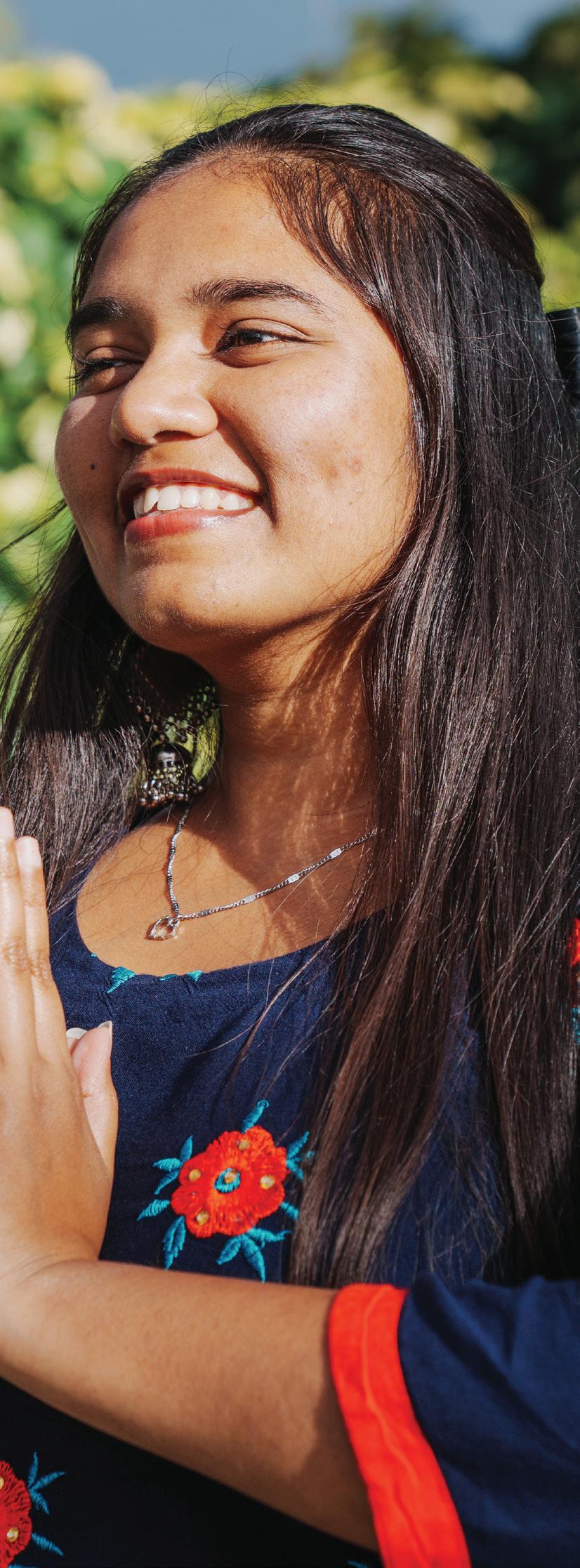
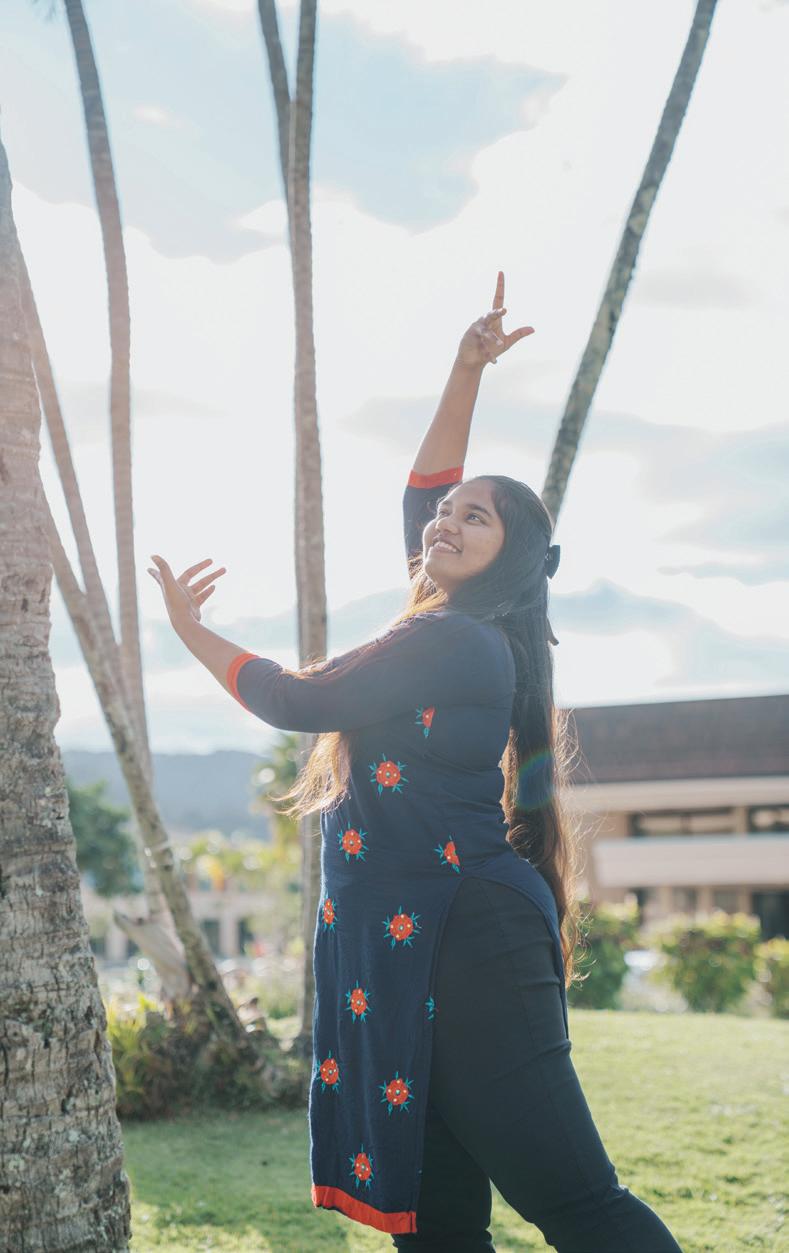
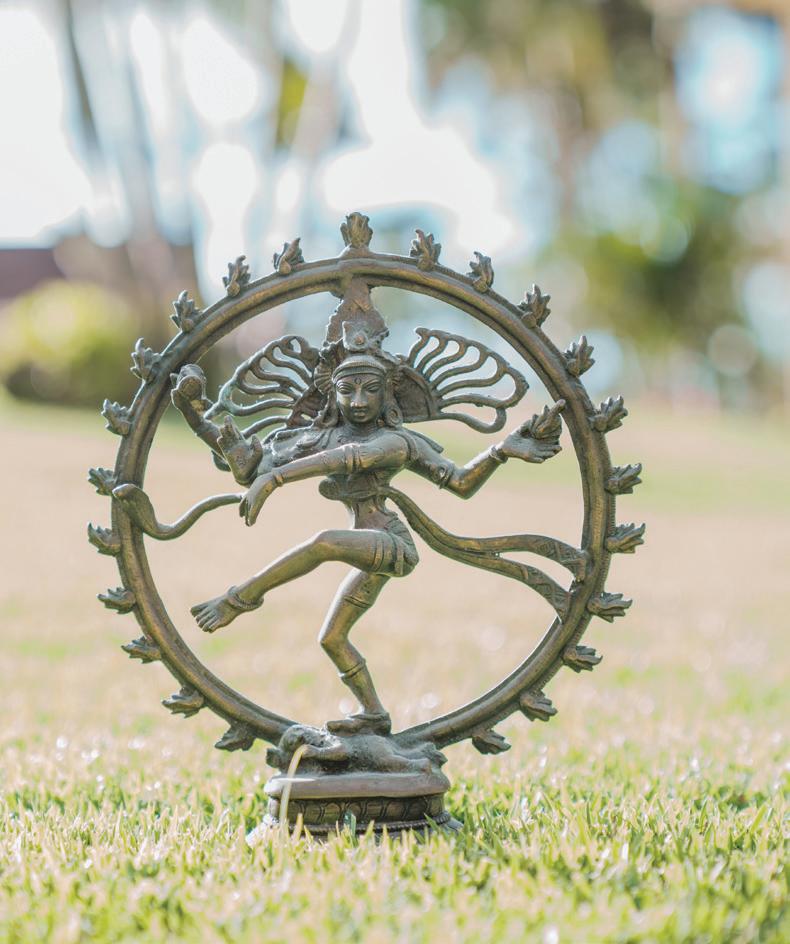
with BYU–Hawaii President John S. K. Kauwe III at Kualoa Point. Mangakahia said they looked back at the mountain range, with a huge rainbow spreading across it and the rising sun. “This scene in my mind, the palm trees and greenery, really stood out,” he said. Mangakahia made an etching to capture the beauty of that day, he said. The etching and others like it are part of Mangakahia’s current brand, Shaka Tribe, and are sold at the BYU–Hawaii Store.
Sato shared, “I think most people need to be alone [in nature] sometimes. There I
can feel blessings from God.” Mangakahia agreed, saying, “Every natural element is a type of Christ that we can look to and see Christ in it, whether its elements of the Atonement or Christlike attributes.” He gave an example of the growth of the trees and how they can be a metaphor for people’s growth with the help of Christ.
When people see these natural compositions, it is like looking at truth, Mangakahia said. He continued, “We are in a whirlwind of distractions and voices. When we see truth, we gravitate towards
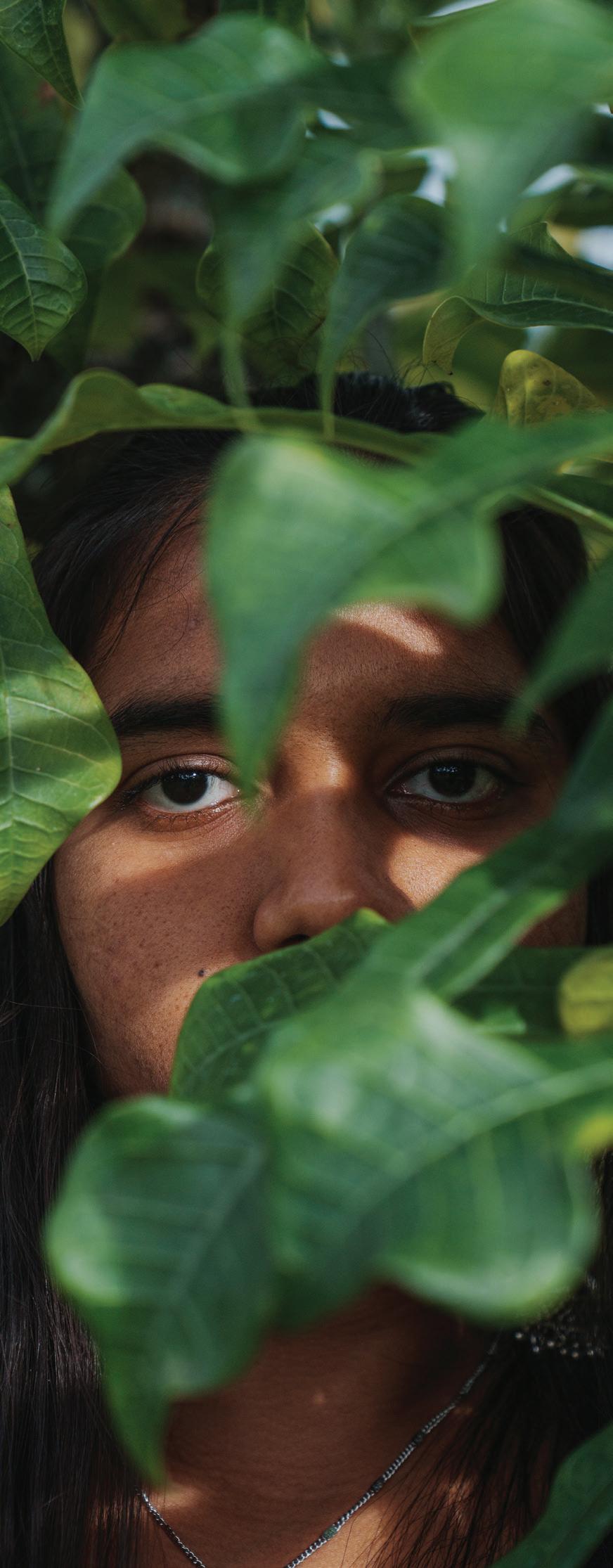
it.” He said he believes nature is a magical resource for humans. When people look at things around them with openness, Mangakahia said there is always room to be inspired. •
Left: Haruna Sato composes and plays her clarinet in nature.
Above: Caroline James dances outside on the grass of BYUH’s campus.
Photos by Yui Leung.
Graphics by Sugarmaa Bataa (Kendra).
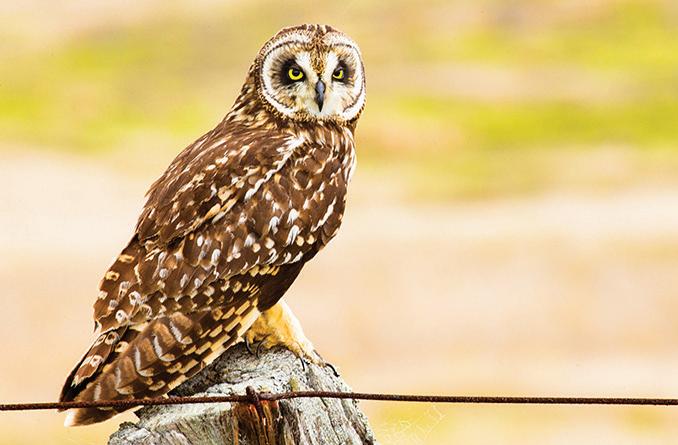

Aspirit protector.
A family guardian.
Native Hawaiian students and an author said an ‘aumakua is believed in ancient Hawaiian culture to be an ancestor in the form of living creatures.
tales of ‘aumaKuaKaysha Kahai-Enos, a senior graduating in business management from the island of Hawaii, said the main ‘aumakua for both her maternal and paternal family is the pueo, or owl.
Kahai-Enos said the pueo has always been her maternal family’s special ‘aumakua. She said when a pueo flies past, over or beside a person, its flying direction connects to certain signs. She said, “Sometimes it’s a warning that something bad will happen and is there to warn and protect us.” Her mother’s sister experienced a time when the pueo protected her. According to Kahai-Enos, her aunt’s experience goes as follows:
“One afternoon, [my aunt] decided she wanted to take a cruise around the island
of Hawaii and began her drive from their home in Puna. A drive around the entire island took her six hours. By the time she drove through Kau, it was already dark and late at night. Out of nowhere, a pueo flew onto the road and just stayed right in front of her. She stopped on the side of the road right behind the pueo. She rested until the pueo flew away after a few hours and then continued her journey back home.”
Kahai-Enos said as her aunt recalled the event, she said she knew the pueo was warning her about driving for too
long without rest. The aunt said the pueo was there to allow her to get the rest she needed and protect her from getting into a car accident.
Kahai-Enos said these stories of her family’s ‘aumakua have helped her find identity and take strength from her ancestors and family while being away from them here at BYU–Hawaii. “We must take care of the ‘aumakua and pass down stories through generations to live on and allow our culture to be preserved,” she said.
Herbert Kawainui K ā ne, a renowned artist-historian in the 1980s who has an interest in the cultures of Hawaii and the South Pacific, shared a folktale about a pueo ‘aumakua:
“A brother and a sister in their younger years were captured by the chief of their enemies. They were tied to a stake the night they were captured when a pueo, known to be their family ‘aumakua, came in the night and unfastened their bonds with its beak. It led them away cautiously, but they had to walk backward. The next day, their enemies could not find any footprints except those that seemed to lead toward where they were tied, and they gave up searching for them.”
According to K ā ne, the ‘aumakua are ancestral spirits in certain animals and plants. K ā ne said ‘aumakua reveal themselves to bring warnings of danger and comfort in times of stress or sorrow. He added the ‘aumakua take possession of living creatures like fish, birds, reptiles, insects or mammals, “leading some Hawaiians to regard certain animals as forms favored by their ‘aumakua,” especially when they have unusual experiences with a specific animal.
Kahai-Enos said common ‘aumakua are the man ō (shark), mo’o (lizard), pueo, honu (turtle), he’e (octopus) and even rocks.
K ā ne said he found in his research that these Hawaiian families would refrain from killing or eating those animals, which would be a “filial disrespect, for which the ‘aumakua might punish them by bringing sickness [to them].”
Kilihea Kanekoa, a junior majoring in Hawaiian Studies from Kauai, said she has always been fascinated with the ‘aumakua and stories of their protection. “I’ve always been taught and told about ‘aumakua and that they will protect us as long as we continue to respect them,” she said.
Kanekoa’s husband Kaehukai Burke, a Southern Virginia University alumnus in psychology from Kaneohe, said the veil feels thin and they feel closer to their ancestors because of the Hawaiian beliefs passed down throughout their families. “It allows our family to feel closer to those who have passed on and know we are being supported from the other side of the veil,” he said. •
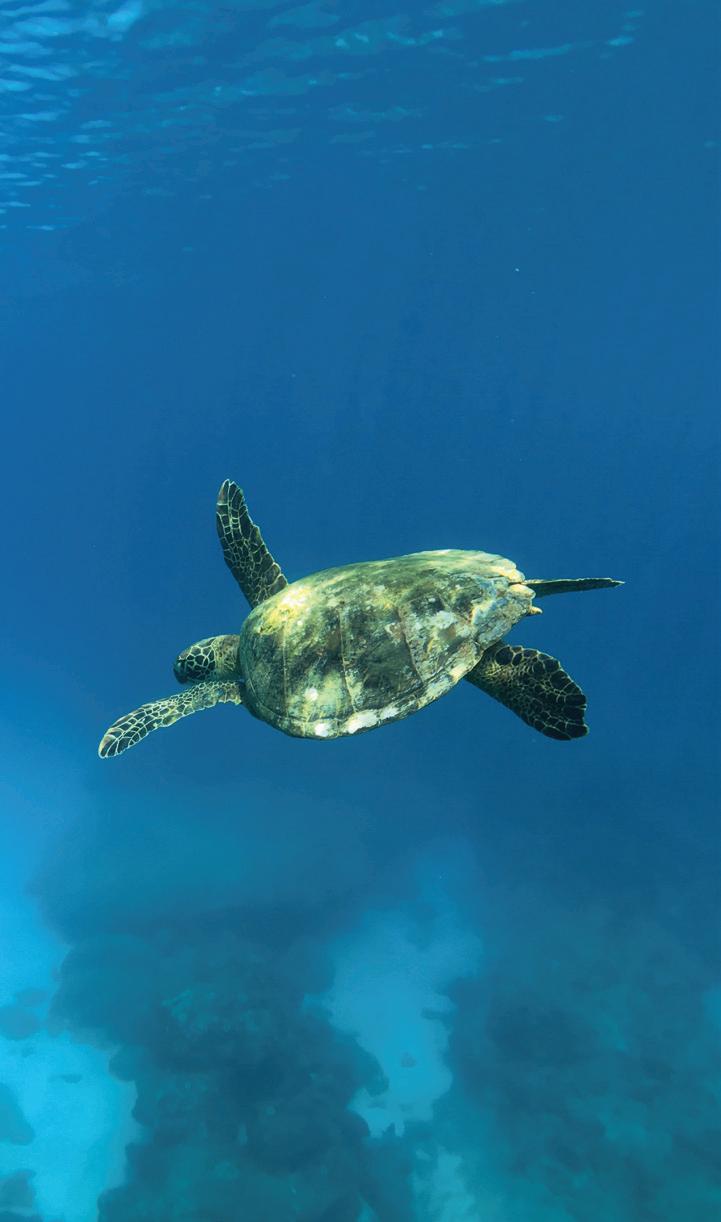


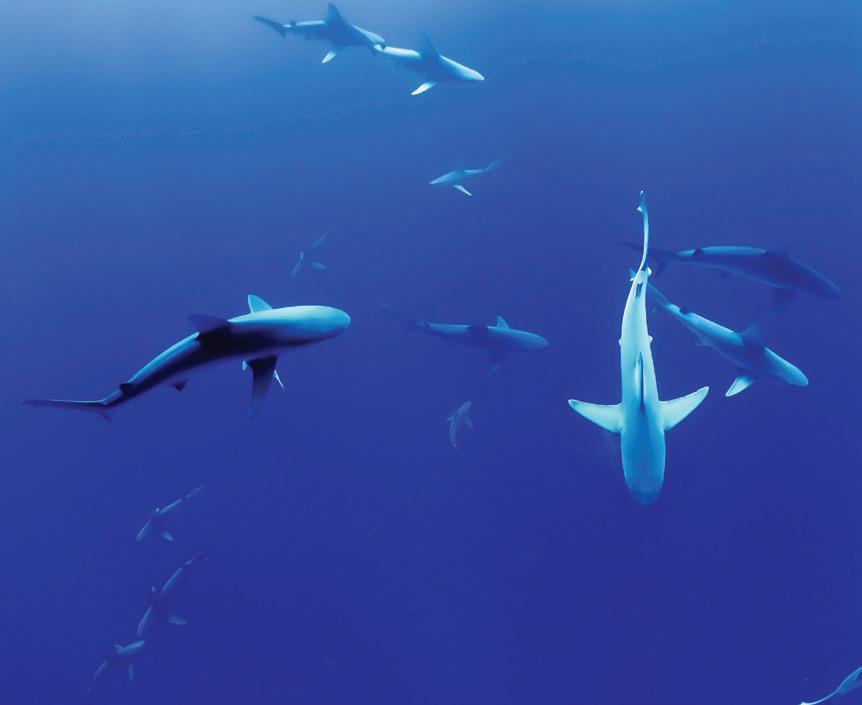 Top: A he’e, or octopus, swims in deep ocean waters. Photo by Qijin Xu on Unsplash.
Middle: A mo’o, or lizard, pauses against a red background. Photo by JacksonS on Unsplash. Bottom: Mano, or sharks, circle around each other in the ocean. Photo by Jakob Owen on Unsplash. Left: A honu, or turtle, glides across coral reefs. Photo by Tey Wilson. Graphics by Sugarmaa Bataa (Kendra).
Top: A he’e, or octopus, swims in deep ocean waters. Photo by Qijin Xu on Unsplash.
Middle: A mo’o, or lizard, pauses against a red background. Photo by JacksonS on Unsplash. Bottom: Mano, or sharks, circle around each other in the ocean. Photo by Jakob Owen on Unsplash. Left: A honu, or turtle, glides across coral reefs. Photo by Tey Wilson. Graphics by Sugarmaa Bataa (Kendra).
Look to the mountains and ground your mind, body and soul in their strength
BYUH student and yoga instructor says she does yoga at the beach to take care of one of God’s greatest gifts - her bodyBY WINSLETTE QUIRAY-SANTIAGO
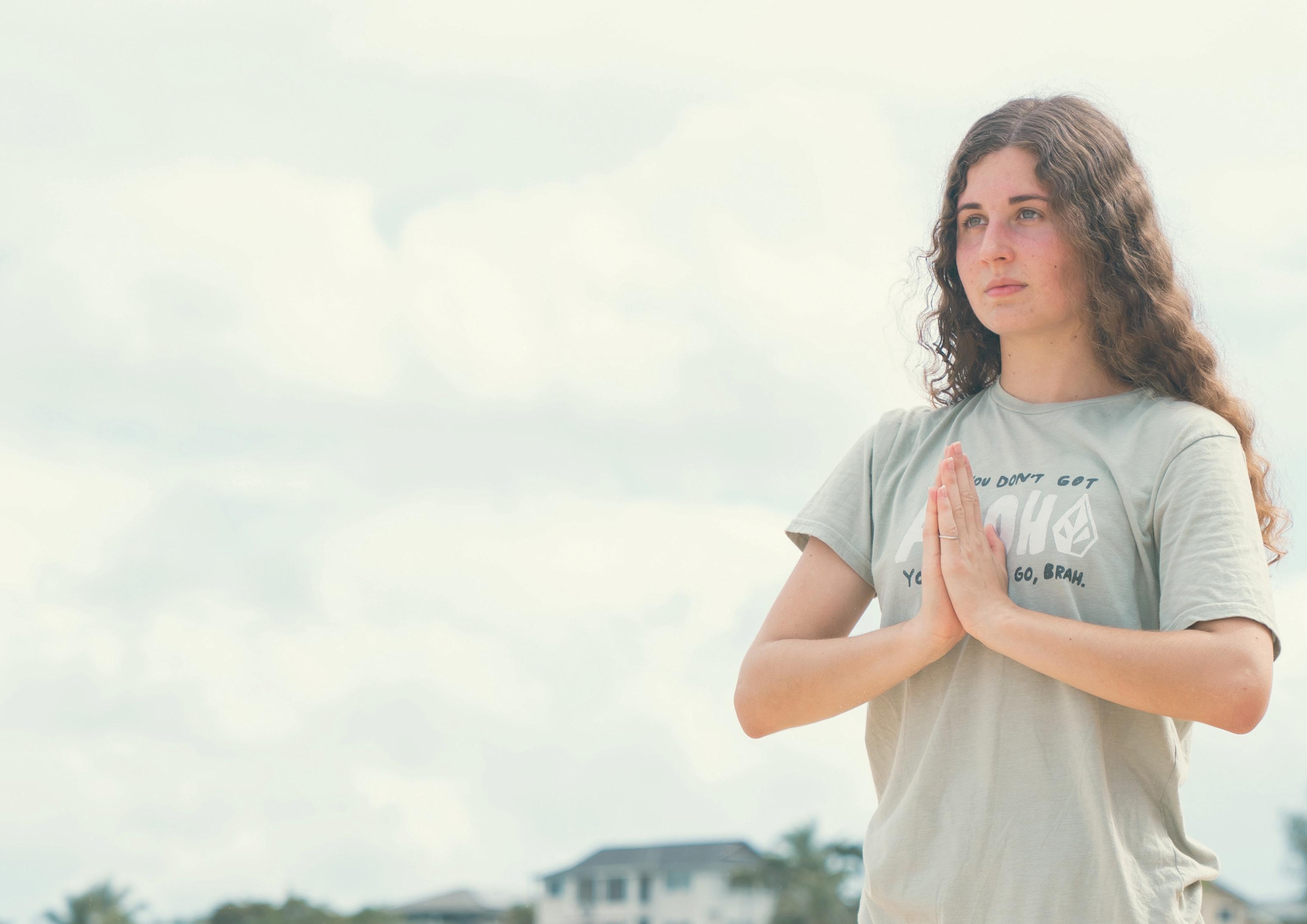
McKenna Christensen said she loves matching her breathing patterns to the waves coming in and out.
Christensen, a yoga instructor and a junior from Kentucky majoring in biology, said there is no better experience than being in God’s creations and taking care of her body through yoga.
Yoga teaches the importance of the body, Christensen said. One of the key elements of yoga is to focus on breathing, she explained. Christensen said there is something different about breathing outside and hearing the surroundings while doing yoga. She said being connected with nature helps her think deeply and relax.
When doing yoga at the beach, she said her appreciation for nature and for her body increases. “It makes it more special and meaningful,” she said. “Heavenly Father created all of these things including myself,” Christensen added.
Christensen shared being with nature allows her to be more joyful and to feel
God’s love even more. “You are there in what He made for you. That is your yoga studio,” she said.
One of the many things people learn through yoga is controlling their emotions, said Christensen. “My emotional state has improved over time,” she said. “I learned to feel what I am feeling, identify and acknowledge that it is there, and just let it go,” she added.
Christensen noticed as she did more yoga, she said she improved her flexibility but also became stronger mentally and emotionally.
Hannah Harding, a participant in Christensen’s yoga class and a double major in intercultural peacebuilding and political science from Utah, said, “Yoga helped me cope with the stresses of life.” She said it is a time where she can let go of anything that is going on in her life. “It helps me relax and take care of myself, whether that is physically or emotionally,” she said.
Christensen said keeping breathing stable is the goal throughout a yoga routine. She also shared that yoga helps people learn to control all aspects of their bodies, especially their minds. “These yoga practices help a lot when dealing with anxiety and depression,” she explained.
Spending time in nature also helps with these mental and emotional challenges because it helps our bodies generate positive emotions, said Christensen. The difference between doing yoga at the beach versus in a studio, she said, is “we get to know ourselves more outside.” Being in the studio is more like being in a controlled area, she explained, where people pick the music they want and choose what they will include in their space. While at the beach, they get what nature is giving them, she said.
“Sometimes inspiration comes too,” said Christensen. She recalled an experience where she had gone to Temple Beach with her friends, and she was able to just relax. “It is just elevating in a way. You are almost outside
of the world. It is almost like being inside the temple. It is just different from anywhere else.”
“What really drew me to yoga is the challenge,” said Christensen. Initially, she said she never really understood yoga and thought it was all just about doing stretching poses. When she was applying for a yoga program back in high school, she said out of 30 applicants, only 22 of them were accepted. Luckily, she said, she got accepted.
In the early weeks of learning yoga, Christensen said, “It was really intensive. I studied really hard.” Completing a 200-hour certification program takes a lot of work, she said. All of the participants had to ensure they got all the poses and words in Sanskrit right, she said. “We learned different types of yoga too,” she recalled.
She shared, “I didn’t fully understand it. I wanted to get to know it. So, I tried it, and I did it!” As she conquered the challenge, she said she learned the essence of yoga is to be present and help your body feel good. It allows people to know where their limits are and improve themselves, she explained.
Although there were challenges, and it required more effort on her part, Christensen said she persevered because of her simple desire. “I wanted to be more in tune with my body,” she said. Christensen said she learned
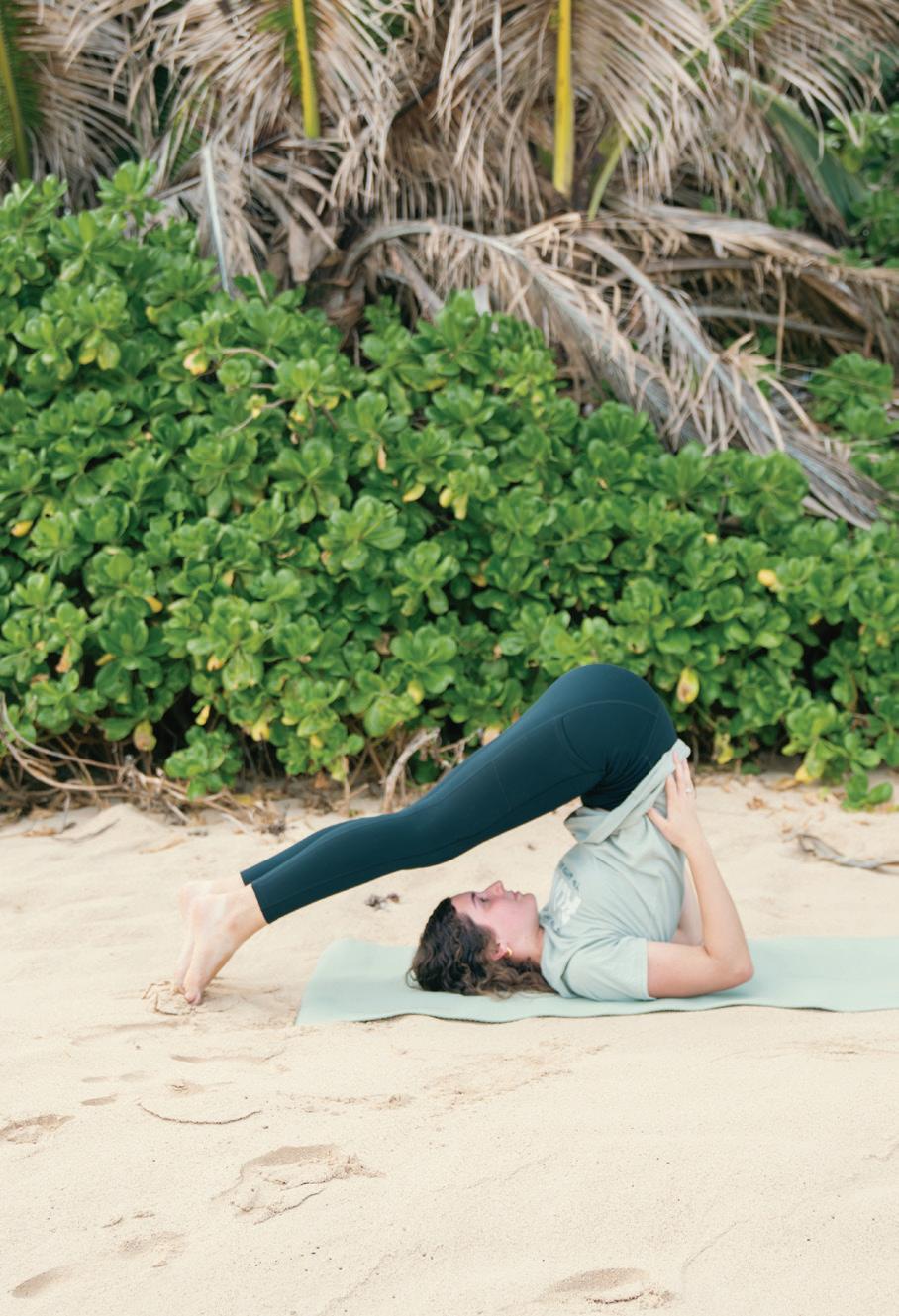
a valuable lesson in yoga that can be applied to people’s lives, which is, “It is you against yourself.”
With time, her interest grew and yoga became more than just a curiosity, Christensen said. She has been a certified yoga instructor for four years, and she teaches yoga classes on campus Monday and Wednesday from 5 to 6 p.m. at the McKay Gymnasium Dance Studio, she said.
While controlling breathing is vital to doing yoga, there are also certain poses that must be done correctly while breathing calmly, said Christensen.
“We use the poses to strengthen our bodies and make them feel better than what they were [before],” explained Christensen. There are various poses in yoga that have different benefits to different body parts, she said. There are easy poses and challenging ones, she shared.
Christensen said her go-to pose is the plow. The plough pose is a full-body stretch that positions the body upside down with the feet over the head, she explained, with the upper back between the shoulder blades touching the ground. It aims to stretch the spine, shoulders and back of the legs of an individual, she shared.
She alternates her poses depending on what her body needs, she said, and especially enjoys balancing poses because they push her
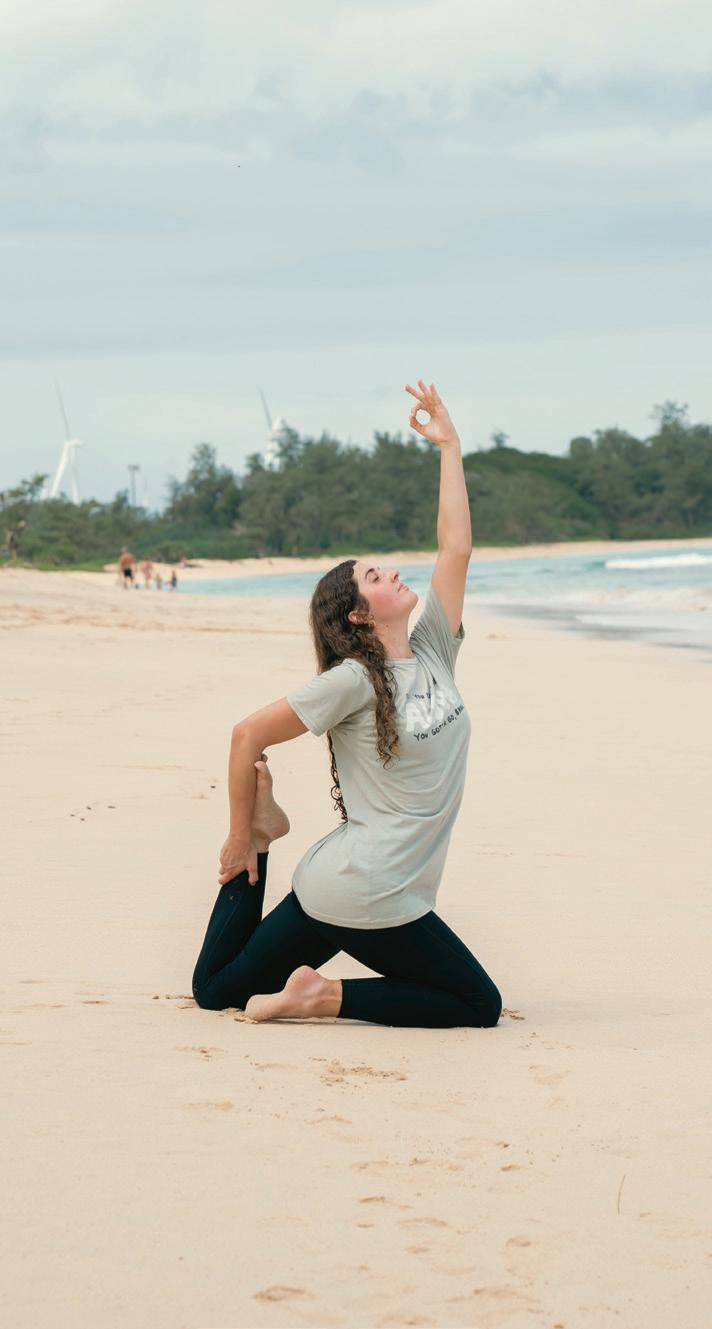
to be better. One of Christensen’s limits, she said, is she is not flexible and cannot do the splits. Christensen said knowing her limits is actually good because it motivates her to try harder and become better.
Another yoga participant, AryLue Jones, a visual arts major from Idaho, said yoga has always been something she wanted to get into. “It brought me a lot of peace emotionally, mentally, physically,” she said.
To deal with stressful situations and difficult emotions, Christensen advised, “Learn to breathe through it and go through it. Even if you fail, you tried. That is what matters.”
Christensen acknowledged some students are interested in yoga but hesitant because they think they are not flexible enough. Christensen said she was once like that too and encouraged students to still try it. “Yoga is not about flexibility,” she said. “It is about learning your body and learning who you are.” •
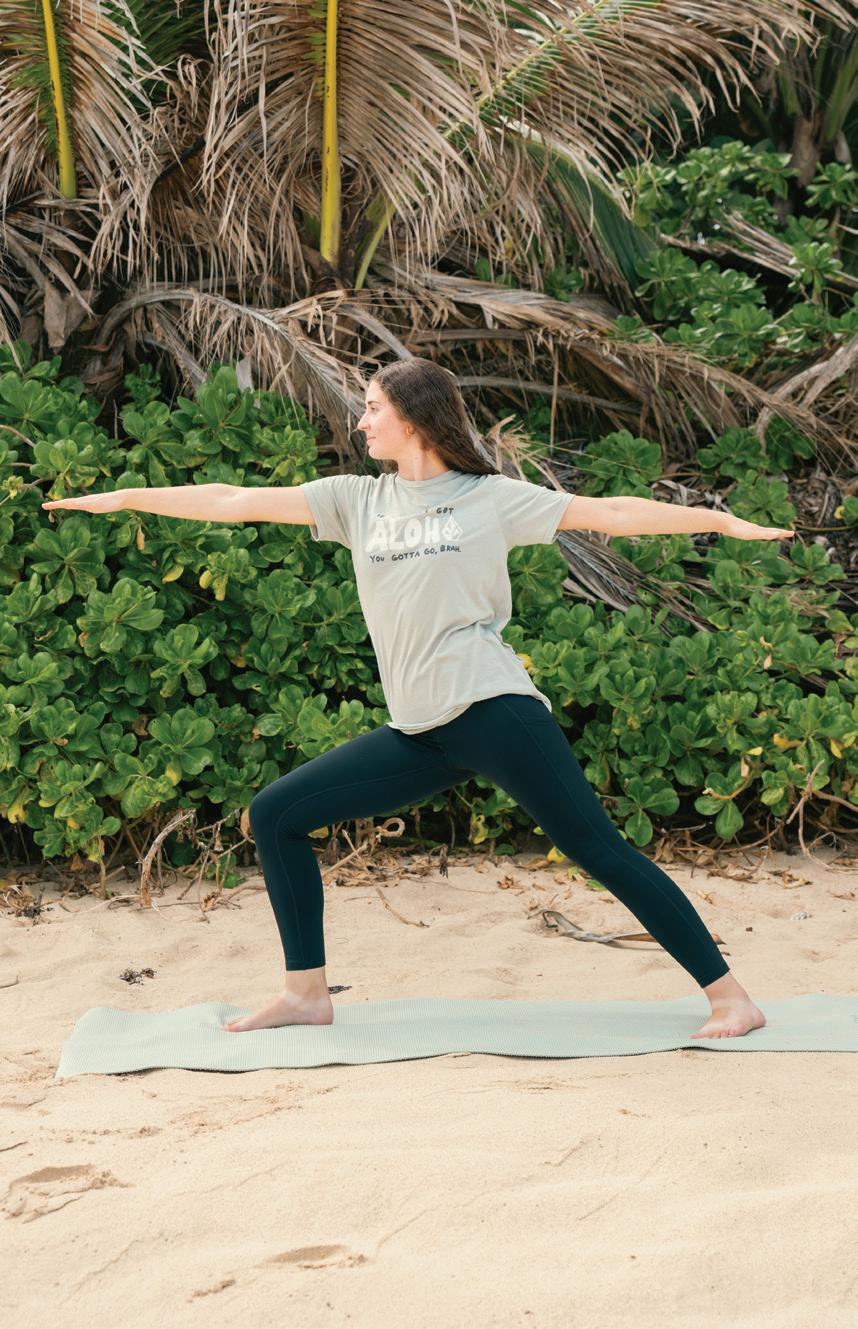

Kihei Nahale-a, the sustainability educational program manager at BYU–Hawaii, said the tree that grows where his daughter’s ‘iewe, or placenta, was buried is strong just like his daughter. He said the Hawaiian birth rituals he and his wife practiced when their daughter was born has helped guide his daughter and remind her of her role, value and responsibilities to herself, her family and her land. “We are very proud of her,” he said.
Nahale-a said he grew up on the Hilo side of the island of Hawaii. In college, Nahale-a said he learned the Hawaiian language and it answered his question, “Who am I?” One book he said he read in college was “The Polynesian Family System in Ka-’U, Hawaii” by E.S. Craighill Handy and Mary Kawena Pukui.
“I began to read the section on life cycles and Hawaiian birthing practices,” he said. He read of māwaewae, kanu ‘iewe and the piko, which were rituals involving the umbilical cord, placenta and certain practices to dedicate a baby to the gods. According to Handy and Pukui, “Protecting from evil, blessing with good things, prestige, wellbeing and happiness were the purposes of the rituals.”
In that moment, Nahale-a said he decided to perform the māwaewae ceremony when he had his first child. When he met his wife, Nohea Stibbard, he said she had the same mindset. They both wanted to “celebrate, praise and practice the ways of our ancestors,” he said.
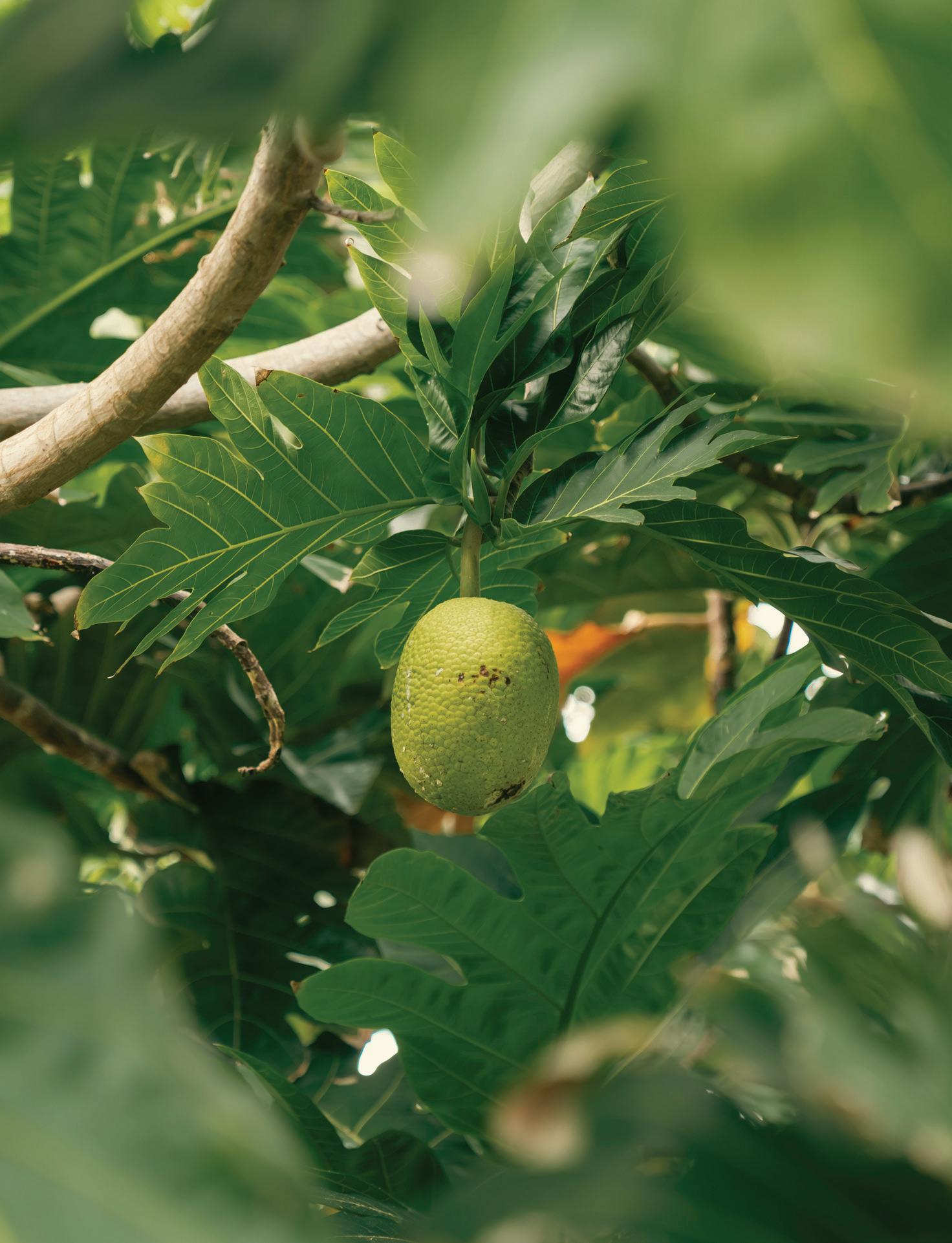 Above: A photo of an ulu breadfruit tree.
Right: A pair of hands holds a burgeoning sprout growing from the soil. Photos by Yui Leung.
Above: A photo of an ulu breadfruit tree.
Right: A pair of hands holds a burgeoning sprout growing from the soil. Photos by Yui Leung.
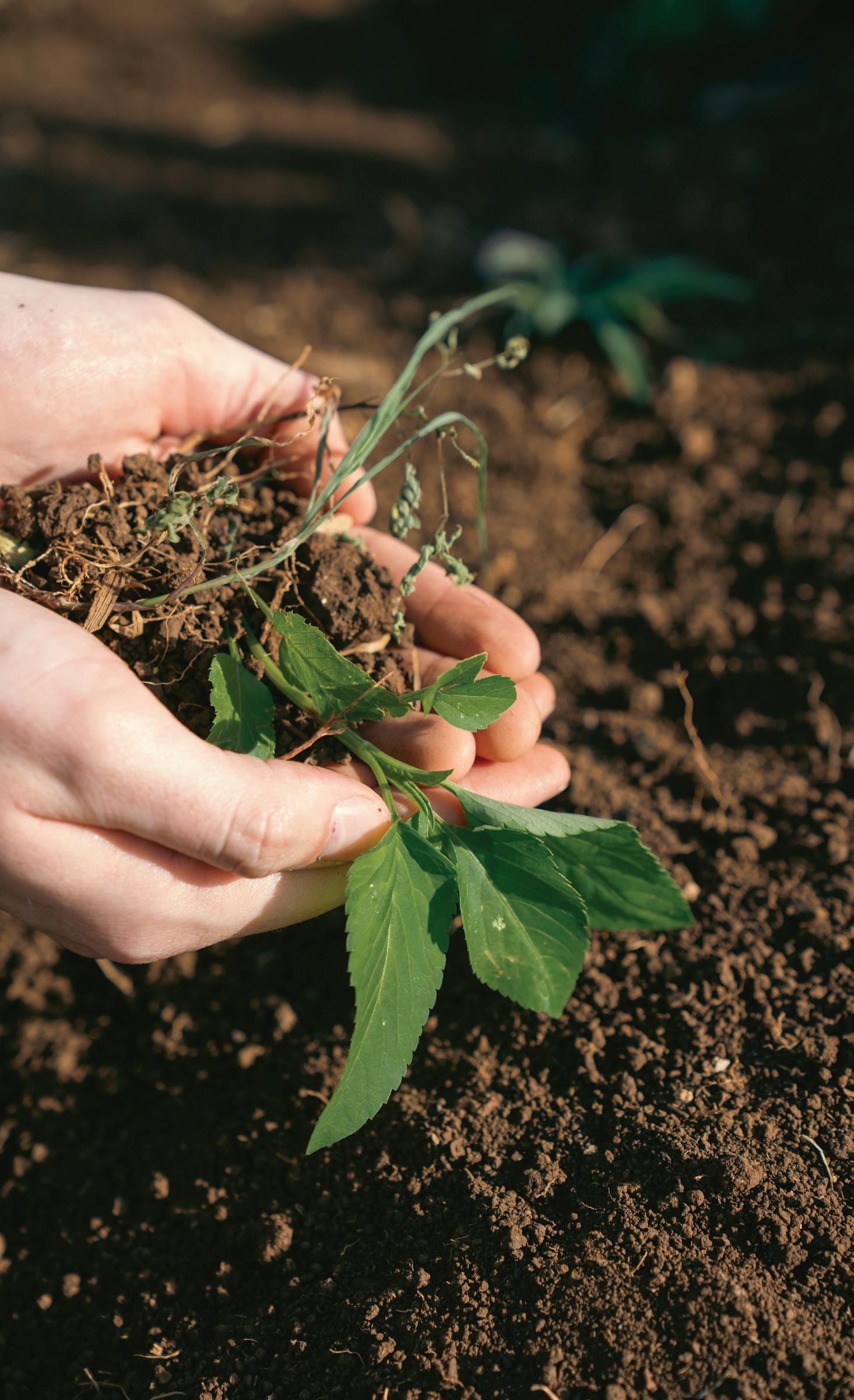
Nahale-a said a māwaewae ceremony is traditionally done within 24 hours of a birth. “It is a ceremony that clears a path for the family and kids to follow,” he said, like a right of passage.
As part of the māwaewae, Nahale-a said a person gathers materials from the land like herbs. “Things from mountain to ocean,” he said. “Things that have meaningful names or are related to our deities.”
When a mother learns she is with child, the father begins to raise a pig. When the child is born, the pig is cooked, he said, and the mother eats meat from different parts of the pig, symbolically eating the whole pig as part of the māwaewae ceremony.
Handy and Pukui say in their book the eating of the pig is “an occasion of worship rather than pleasure and festivity.”
Other foods are gathered that symbolize forgiveness and cleansing to be
eaten as well, said Nahale-a. Then, he said, there are certain practices to dedicate the baby to the family gods. “This is so [the gods] know our family is dedicated to maintaining our relationship [to them],” he explained.
Kanu means to plant and ‘iewe is the placenta and afterbirth, said Nahale-a. Planting the ‘iewe is a way to ceremonially dedicate someone to a thing or place, he explained. Typically, he said, people plant the ‘iewe by a plant that is important to the family. As the child grows, the plant grows with them and acts as a protector over the child’s ‘iewe, Handy and Pukui explain.
Nahale-a said the piko, or umbilical cord, is important because it is “the connector” between the mother and baby. One shouldn’t throw it away, he said. Traditionally, doing something special with the piko shows acknowledgment and care toward the role it has played in the pregnancy, he said.
Some families take the piko to a special place, said Nahale-a. “Some take [the piko] to a lava field, carve a hole in the rock and cover it,” he explained, while others take it to the ocean.
Where people plant the piko dedicates the child to a land-based or ocean-based lifestyle, he explained. This is different from kanu ‘iewe, said Nahale-a, because the piko connects a child to a life path while the ‘iewe connects the child to a specific place.
These three rituals “are all dedicatory ceremonies to family, place and spirit,” said Nahale-a. There are many practices performed throughout a lifetime that connect a person back to their lineage and place, said Nahale-a. These rituals, he said, are essential to “the life cycle of a Hawaiian.”
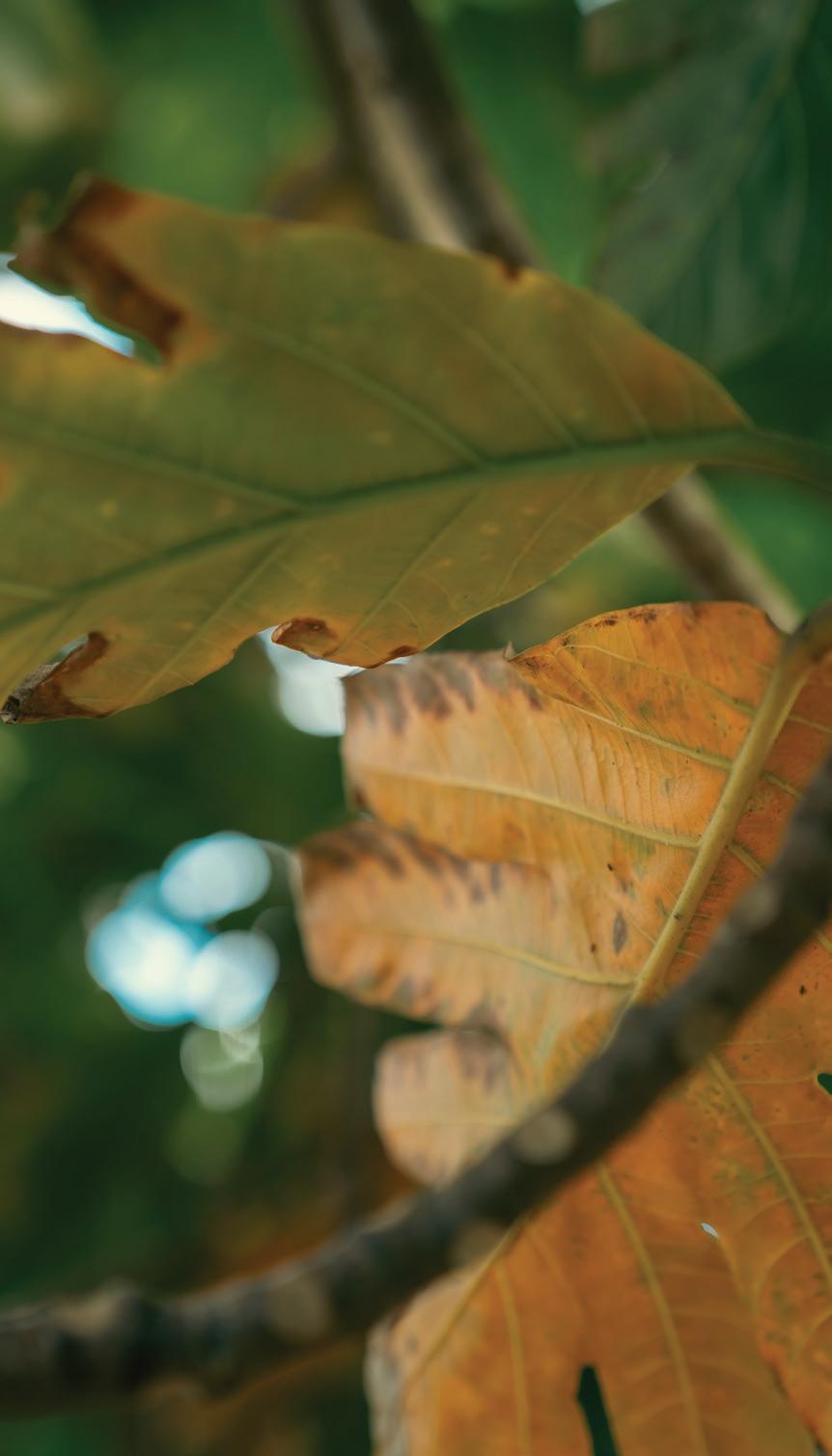 Ka ‘iewe inciDent
Ka ‘iewe inciDent
Stibbard said when she found out she was pregnant, excitement began welling up in her as she sat in the examination room. She said she asked if the hospital had any midwives because she said she enjoys the way midwives care for women and children at the time of birth. According to Stibbard, the doctor’s response was, “‘Absolutely not! This hospital doesn’t support that kind of practice.’”
Stibbard said they also requested to keep the child’s ‘iewe. She said the doctor would not allow it and told them it was illegal.
Nahale-a said they found a legal group that supports Hawaiians and their cultural practices. “We had our first court hearing in May 2005,” he said. According to Nahale-a, the judge did not rule in favor of the Nahale-as keeping the ‘iewe due to a lack of information on the situation. Kihei Nahale-a said the judge planned to research and give his final ruling at a later time.
With the due date of their baby fast approaching, Nahale-a said during the second hearing the judge said, “‘I am still not ready to decide.’” However, he
said the judge tried to compromise and put a restraining order on the hospital to prevent disposal of the ‘iewe. Nahale-a expressed, “To them, it was a compromise of sorts. But for us, it was an injustice.” He explained they felt this way because his family was being kept from participating in sacred Hawaiian traditional ceremonies.
Stibbard said, “The day finally came for me to give birth. Everyone was excited.” She said they decided to have a home birth, but a problem arose during labor and they quickly decided to go to the hospital where she had a Cesarean section. “Fortunately, the child was born in good health,” she said.
In the birthing room, Nahale-a said he kept an eye on the ‘iewe. “I was able to go with the nurse and take the ‘iewe to the room they were keeping it in,” said Nahale-a. Tempted to negotiate with the nurse to gain possession of the ‘iewe, Nahale-a said he chose to trust his lawyer and be patient.
Nahale-a said he told his lawyer they would be moving to a different town soon. If he didn’t get an answer about the ‘iewe, he said, “‘I’m gonna do what I think is right for my family.’” Time passed and Nahale-a said the lawyer’s advice was to wait because he believed Nahale-a’s family could get a favorable ruling. Nahale-a’s response was, “‘This is the end of the line.’”
“I prayed to the ancestors to ask for help,” he said. He trusted his instincts and headed to the hospital without knowing what he was going to do, he shared. Getting past the front desk, he said he found the door to where the ‘iewe was stored. To his surprise, he said, the door was open.
In the room were refrigerators to hold ‘iewes. Normally the fridges were locked, he said, but it opened when he tried and “the ‘iewe was sitting right there.” He said he took the ‘iewe, put it in his backpack and left.
Exiting the hospital, Nahale-a said nothing happened. He said he heard a voice from within telling him, “Don’t go to the truck. Don’t go to the truck. Get out of here.” Walking a different way, he said he called Stibbard to update her. “Right then a security guard started yelling at me,” said Nahale-a.
When the security guard told him to come back, Nahale-a said he yelled back “‘Negative!’” and kept moving forward to the bus stop. There, Nahale-a called up a friend, Mehana, to ask for help. Mehana showed up soon thereafter and communicated with the security guard the importance of the ‘iewe to Nahale-a’s family.
Nahale-a said his lawyer came to the scene as well as a police officer. He said Mehana explained the situation to the officer while his lawyer pulled him aside to discuss how to move forward.
Nahale-a said the police officer called him over and explained he was going to ask to look inside his bag. If Nahale-a said no, the officer would read him his rights, have Nahale-a sign a citation and leave. After speaking with his lawyer, Nahale-a told the officer he could not look in his bag, signed the citation and left.
According to Nahale-a, the ‘iewe made its way to the place their family had planned. He said, “We planted it where it remains till this day.” Nahale-a said his daughter is thriving, and he feels they did what was right.
His lawyer told him there could be some legal issues if the hospital had security footage of him taking the ‘iewe, but he said, “Nothing ever came up, and so we never had a problem.”
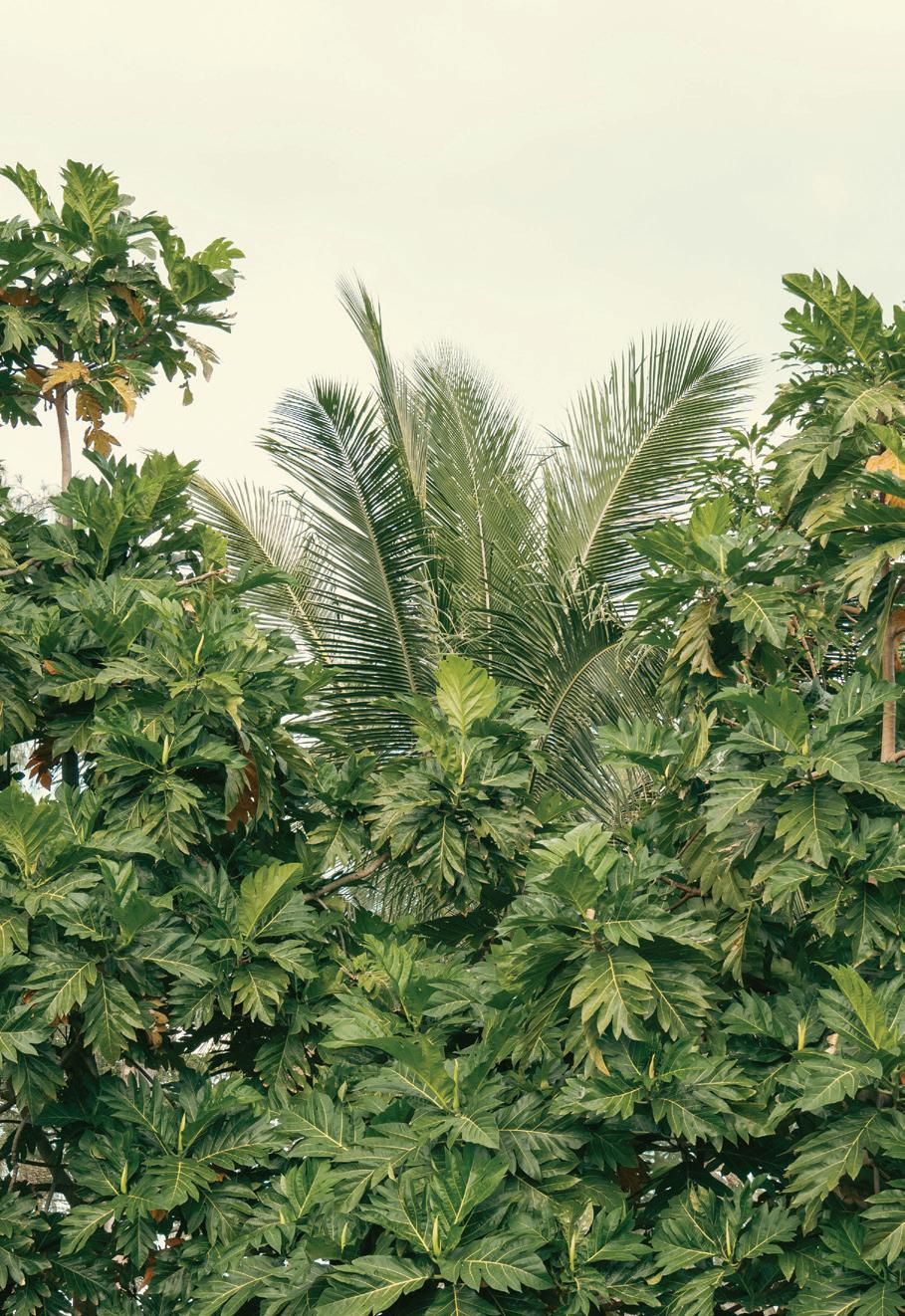
In 2005, the Hawaii State Department of Health adopted a blanket policy that categorized placenta as a biological waste that needed disposal, writes the FluxHawaii website. Andrew Sprenger, an attorney who challenged this ruling on behalf of a young Native Hawaiian couple, explained why the case was important, saying, “Native Hawaiian rights have always been marginalized,” writes the website. This case, along with cultural and political activism in various forms, led to a bill in 2006 that made Hawaii the first state in the nation to give women the right to take home their placentas, says the website. •

 Left: A photo of leaves on a tree.
Middle: A group of trees reach high into the sky.
Right: Wildflowers sprout in the middle of a field.
Photos by Yui Leung.
Left: A photo of leaves on a tree.
Middle: A group of trees reach high into the sky.
Right: Wildflowers sprout in the middle of a field.
Photos by Yui Leung.
Discover the cherished nature spots that hold a special place in the hearts of BYUH students, offering tranquility, beauty and cherished memories
BY LINDA LAULU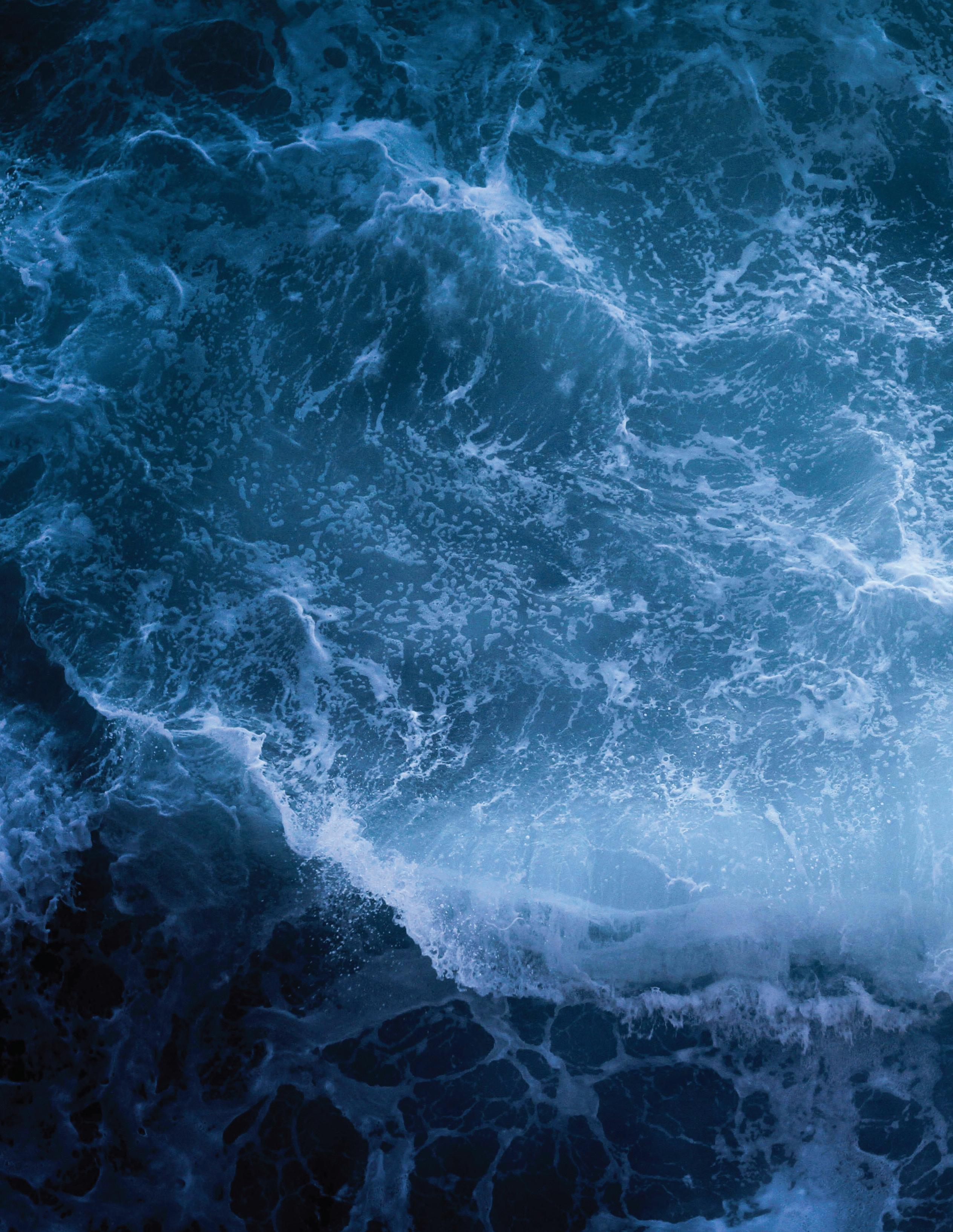
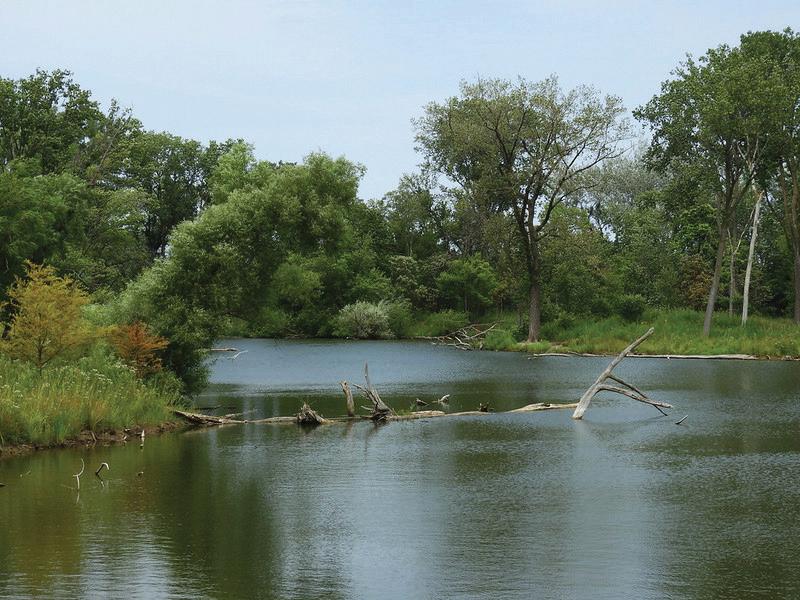
Sophomore, Illinois, psychology major “My favorite nature spot at home is in a nearby nature preserve. It provides such a great place to separate myself from the outside world.”

Junior, Laie, business management major “I like this place because it’s quiet and blocks out all the noise. I can hear the birds chirping, feel the gentle breeze rustling through the trees and sense the oxygen flowing into my body as I breathe. Here, I can meditate undisturbed and engage in deep self-reflection.”
Junior,Washington, Pacific Island Studies major “Zion’s Camp is my favorite spot at home with my family because we would have a good time, and I have made a lot of happy memories there with the people I love.”
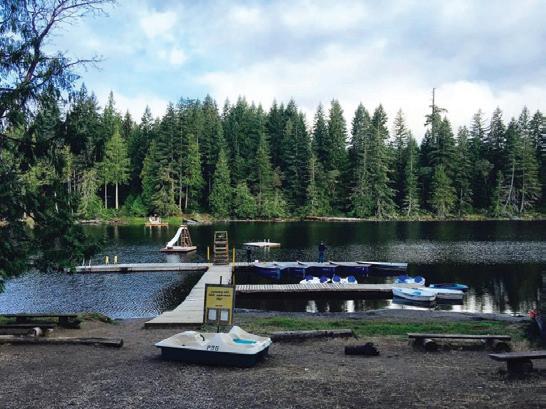 Zion’s Camp Belfare, Washington,,
Zion’s Camp Belfare, Washington,,
Sophomore, Papua New Guinea, social work major
“I love the Adventure Park for two main reasons: It’s a serene countryside location, just 28 minutes from bustling Port Moresby, and it’s distinctive attractions like the exotic orchid gardens, Papua New Guinea’s iconic bird species, thrilling crocodile feeding shows and exciting water slides. Additionally, the park offers a peaceful retreat into nature, making it a safe and unique destination for visitors to enjoy and appreciate.”
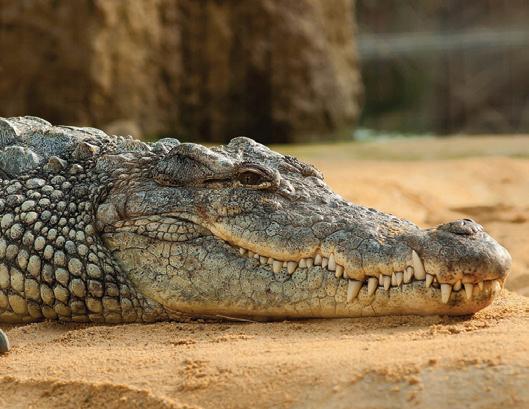
Sophomore, Philippines, elementary education major
“The scenic view of the beach gives me peace and the calming sound of the ocean makes me feel safe. This spot is a good place for me as it holds so many memories since I was little that make me happy whenever I feel sad or happy.”

Pta. Taytay Fishing Village Bacolod, Philippines
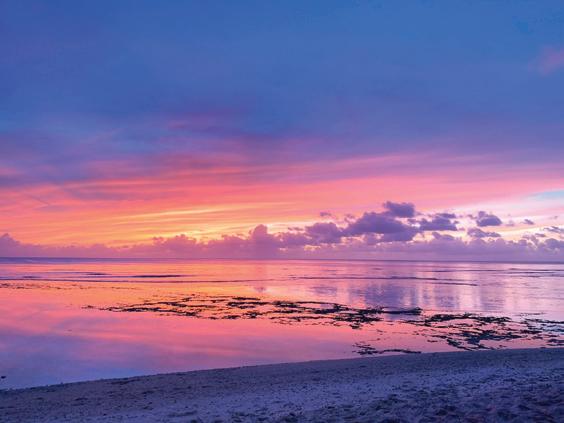
Sophomore, Chuuk, political science major
“My favorite nature spot growing up is at the beach next to our house. Whenever I want to relax when days are rough, I would always find myself swimming in the ocean, or just sitting on mangrove trees at the beach.”

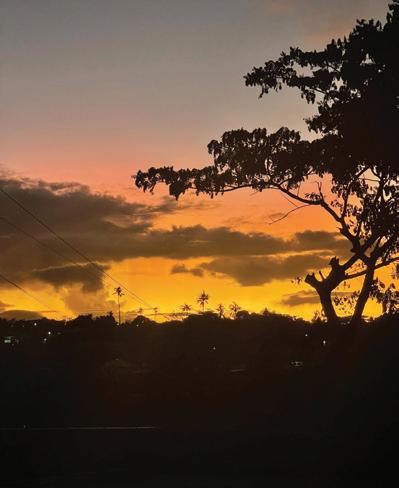
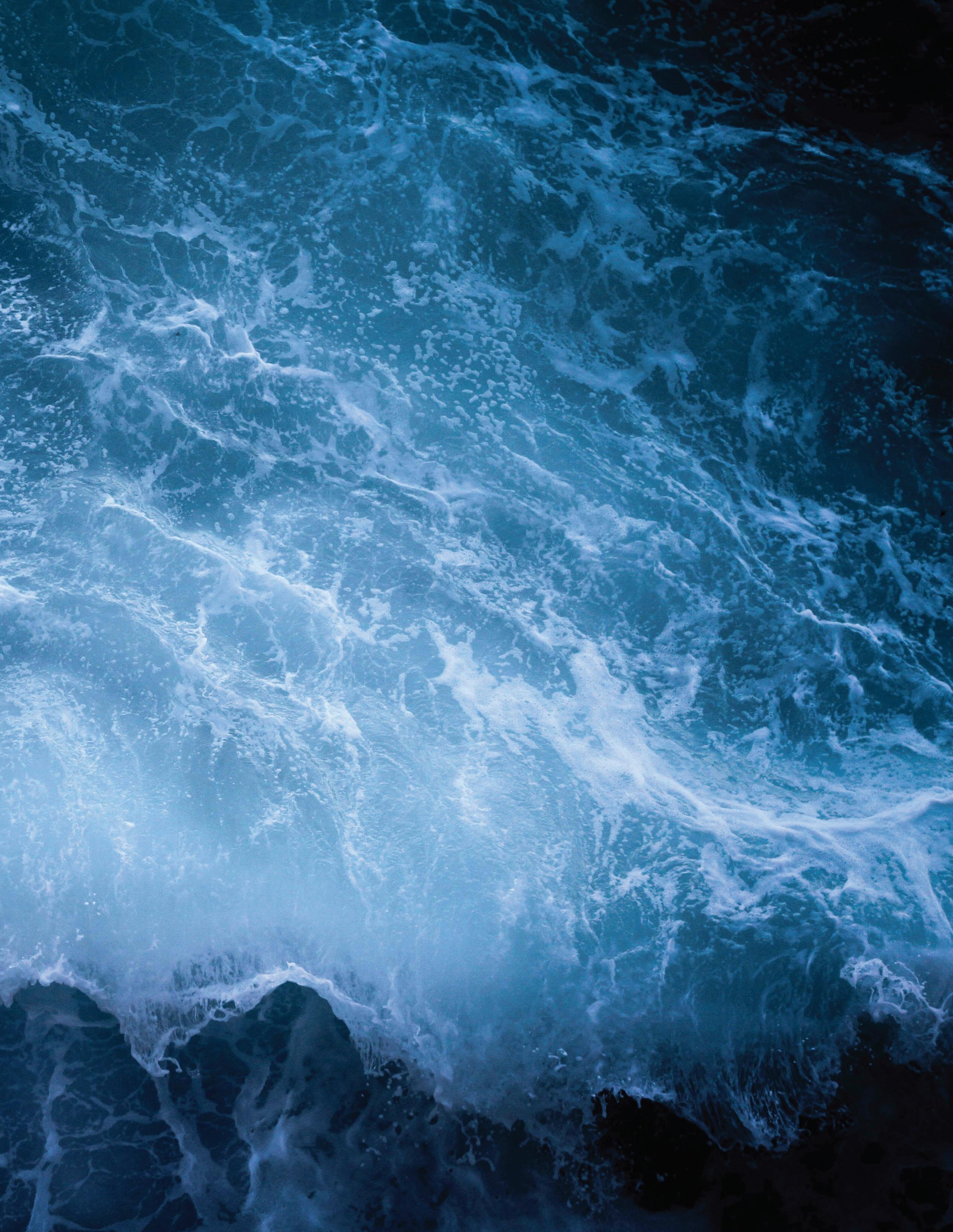
Sophomore, Samoa, business management major
“Our chapel is located on a hill where it overlooks one of the villages. It always provides great healing views which makes it my favorite nature spot at home. I love the view because sunsets are a representation of rest, and it reminds me that there is no better place to rest than home.”
Sophomore,Tonga, psychology & HTM major
“White Sand Beach is my favorite nature spot at home to relax and meditate at because the white sand is very white, which gives great healing to my mind. In addition to that, the view is beautiful, and the water is so clear.”
Maaali Street Samoa White Sand Beach Tonga Above: A boat on shore of Tonga. Photo by Vince Russell. Left: A sunset in a Samoa neighborhood. Photo by Esther Key. Below: A crocodile at the Adventure Park. Photo by Monika. Left: The sunset on Gun Beach. Photo by Selina Walter.BYUH ohana say the sights, sounds, scents and slow pace of nature improve people’s emotional and mental healthBY KARL ALDRE MARQUEZ
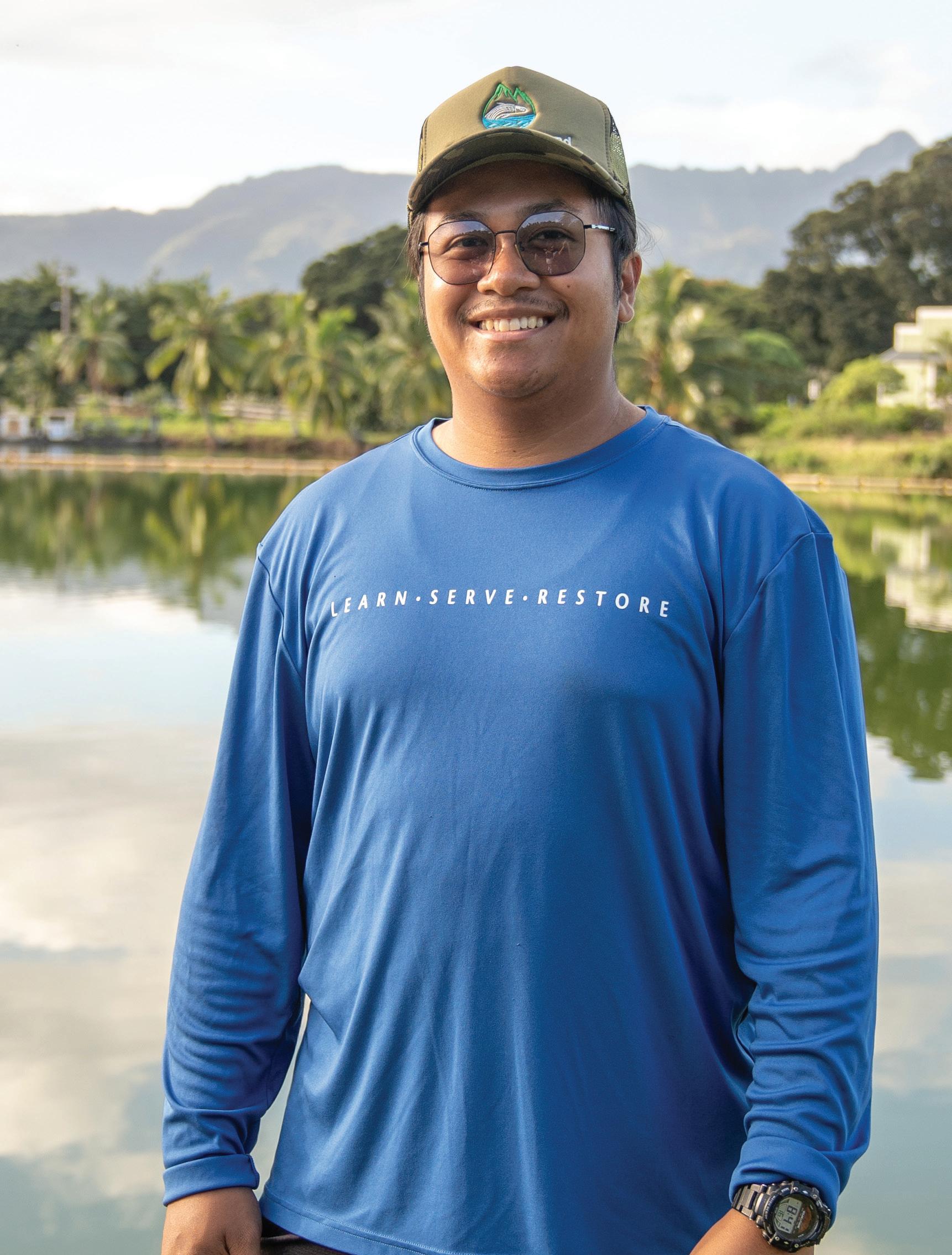
With the advancement of technology, it’s easy to become disconnected from nature, says Dr. Gregory Bratman. Yet, throughout history, humans have sought solace in the outdoors, explains Bratman, an associate professor and director of the environmental lab at the University of Washington. Moreover, a study at Stanford University says walking and enjoying the company of nature lowers the risk of depression, increases happiness and yields measurable mental benefits for a person.
natural therapy
Bratman, who is also a director of forest sciences at UW, says in a Stanford study that more than half of the world’s population lives in urban settings. This number is projected to rise to 70 percent within a few decades, he says. As urbanization and disconnection from nature have increased dramatically, he shares, so have mental disorders such as depression and anxiety.
Bratman’s research supports a study published by the Proceedings of the National Academy of Science, which says people who walked for 90 minutes in natural areas, as opposed to those who walked in high-traffic urban settings, showed decreased activity in a region of the brain associated with a key factor in depression. “Results suggest that accessible natural areas are vital for mental health in our rapidly urbanizing world,” says Gretchen Daily, a Bing professor and an American environmental scientist in the Stanford Woods Institute for the Environment’s article.
our neeD for nature
Zaphnath-Paaneah Antonio Villanueva, a BYU–Hawaii alumnus from the Philippines who works as a restoration and environmental science assistant at the Malama Loko Ea Foundation, said serving his mission in the Vanuatu Port Vila Mission helped him love and appreciate nature. He said Vanuatu was a big contrast from the busy city he grew up in. He said transferring from a fast-paced place to a slow, calming place helped him recognize his interests in nature. He enjoyed seeing people live a simple life while having their jobs relate to taking care of nature, he said. His mission experiences were the inspiration behind his
Above: Zaphnath-Paaneah Antonio Villanueva smiles for a photo at his workplace. Right: A series of photos of the foundation’s grounds. Photos by Sugarmaa Bataa (Kendra).





choice to study marine biology at BYUH, he said.
Villanueva said his bachelor’s degree helped him study ways to cultivate and protect nature, especially in Hawaii. After graduation, he said he saw an opportunity to expand his love for nature by working for the Malama Loko Ea Foundation in Haleiwa. He said the foundation is a non-profit organization that helps perpetuate native Hawaiian culture through education, land stewardship and community building while sustainably restoring natural resources.
He said he provides tour to students visiting the place and collects water samples, reeds, Hawaiian stripe mullets and other native Hawaiian fish. He added he also takes care of the natural habitat that surrounds his workplace. His experiences at work have allowed him to develop a sustainable life where he gives back and takes care of nature, he said.

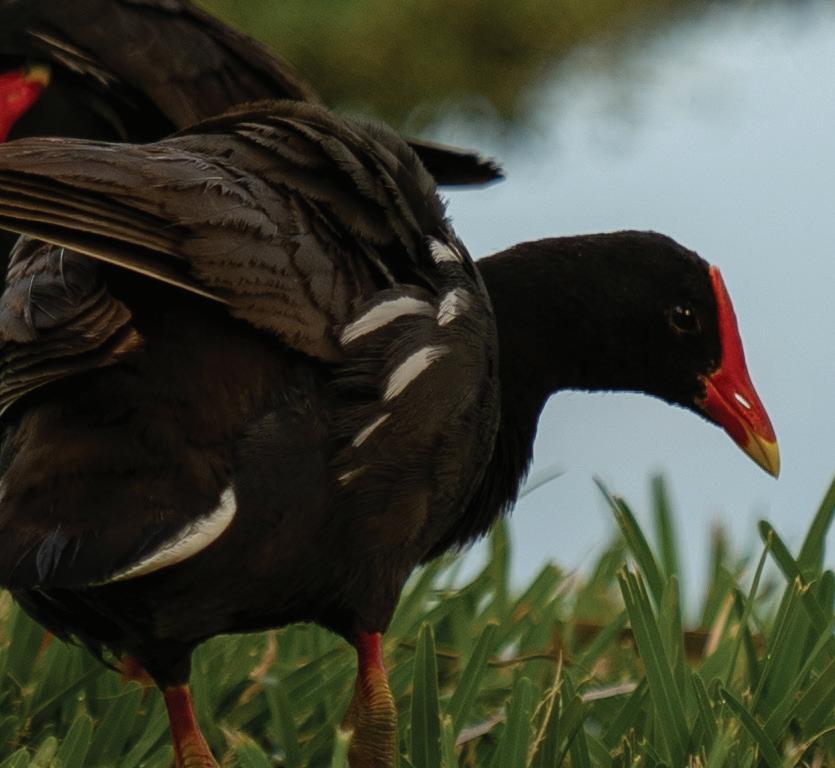
Corina Chan Nok Ching, a freshman majoring in psychology from Hong Kong, said being in nature helps people appreciate their minds and find comfort. She said she read in an article by Scientific Reports that says spending at least 120 minutes a week in nature is associated with good health and wellbeing. She said this research helped her value being outside and enjoying nature as much as possible.
Villanueva said being close to plants enhances a person’s well-being and improves one’s mood. He said pleasant odors from plants in nature are a form of aromatherapy, reducing stress and anxiety and promoting relaxation. He added the majority of the plants have pheromones that emit a fragrant odor that helps soothe and uplift people by just smelling them.
Ching shared the contrast between serving her mission in England, where she said the sun does not shine very often, to studying in Hawaii. She said she appreciates Hawaii because the lush greenery around the campus makes it easier for her to do her schoolwork outside and enjoy the company of nature. She said besides the greenery around campus, she enjoys hiking and exploring the beaches
around Oahu. Being exposed to nature helps her love the outdoors even more, she said, and she often encourages her friends to join her outdoor study sessions.
She said she learned how exposure to the outdoors helps people’s mental health from another article from the University of Exeter. Dr. Ben Wheeler, an associate professor in environment, health and inequalities at the same university, said, “Researchers emphasized that investing in improved public green spaces might bring mental health benefits to everyone, but particularly for those living in more deprived areas.” The article further explains when people look after and protect the natural environment around them, it will return the favor and give back to them.
Ching said her job as a tour guide at the Polynesian Cultural Center has also helped her appreciate the different greenery and natural environments in each village. She said enjoys learning about plants from around Polynesia and explaining them to PCC guests. •
Look to the earth and honor the life blossoming from its nurturing soil
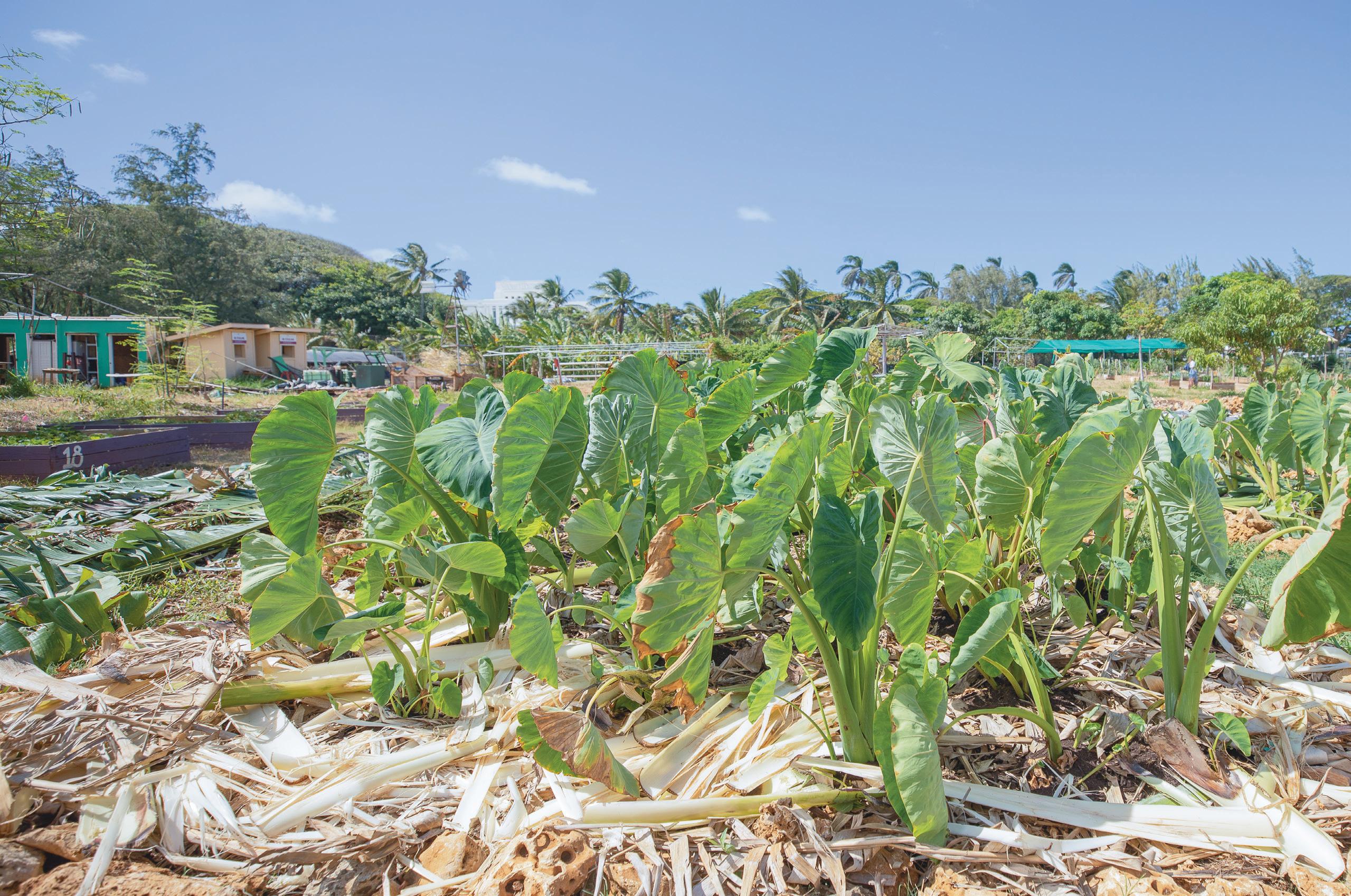
The Kumuwaiwai Center for Sustainability and the Service Center’s Aloha ‘Aina initiative encourages students to participate in sustainability and have a profound impact on the wider world
BY EMELIA MIKE
Sustainability has become a guiding principle for individuals who want to embrace ethical farming, volunteering and service projects, said Kihei Nahale-a. He said these practices benefit not only the environment but also the communities around them.
“We are all part of this world,” said Nahale-a, the sustainability and education program manager at BYU–Hawaii’s Kumuwaiwai Center for Sustainability. “So whatever art you do, whatever science you do, whatever social sciences you do, you have a role in sustainability, and that is the point,” he said.
Nahale-a said one of the Kumuwaiwai Center’s goals is to learn how people, especially those from the Pacific Rim, Oceania and Asia, sustain themselves in their environments and address unique regional challenges. “We want to reset, educate and be better-informed leaders when we return

to those places and provide good sustainable outcomes,” Nahale-a said.
According to Nahale-a, the Center has actively worked to reestablish the garden system at BYUH. Voluntourism, a concept the Kumuwaiwai Center adopted, involves working with students, clubs and academic departments to enhance sustainability awareness through its specific educational focus.
Understanding ancestral practices and appreciating the gifts of the land, Nahale-a explained, is crucial. Gardens are places for people to reconnect with the basics of human existence, Nahale-a said.
Born and raised in Hawaii, Nahale-a expressed excitement about growing sustainability systems and said he focuses on the collection of native varieties of taro, traditional medicinal practices and the significance of language in preserving traditional practices.
He continued, “The more we can develop and learn how to succeed in these spaces and understand the gifts the land gives us, the more we will utilize them well.” There needs to be a shift, Nahale-a said, from taking from the environment to being reciprocal givers.
Leo Chang, a junior mathematics major from China, reminisced about the days when he worked for the Kumuwaiwai Center. “We grew a variety of fruits and vegetables, offering fresh coconut juice, bananas, papayas and eggs to students in exchange for just 30 minutes of volunteering. It was a wonderful way to connect with nature and the community,” he shared.
According to Chang, the Center is known for its organic produce, including guava, avocado and macadamia nuts. One of the farm’s sustainable practices involved repurposing food and food waste from the cafeteria to feed animals, he said. Chang also highlighted the farm’s use of hydroponics farming, a planting technique to nurture plants without the use of standard soil by using a water-based nutrition solution.
Chang added, “The farm used to be a place for fixing cars and bicycles. Locals and students would come together to work on their vehicles, creating a unique space for collaboration and community engagement.”
Liahona Moleni, a student assistant at the Service Center and a senior majoring in social work from Utah, said the Service Center encourages students to participate in sustainability through its Aloha ‘Aina initiative, which is an environmental service project. She said, “Aloha ‘Aina has been an integral part of our campus for decades. It’s not just a school initiative but a cultural heritage. It’s a service tradition that connects us to the land and its people.”
She reflected on the transformative impact of Aloha ‘Aina and said, “Every time we organize this event, students come expecting to work in the mud, but they leave with a greater appreciation for the land and each other. I think it’s more than just labor, but an opportunity for personal growth and connection.”
Moleni said Aloha ‘Aina means “love for the land” in Hawaiian. “There are no specific requirements to participate,” she said, “except the ability to engage in physical work.” She said the projects vary from beach cleanups to pulling weeds and planting, depending on the chosen location and the specific needs of their partner organizations. “We have conducted
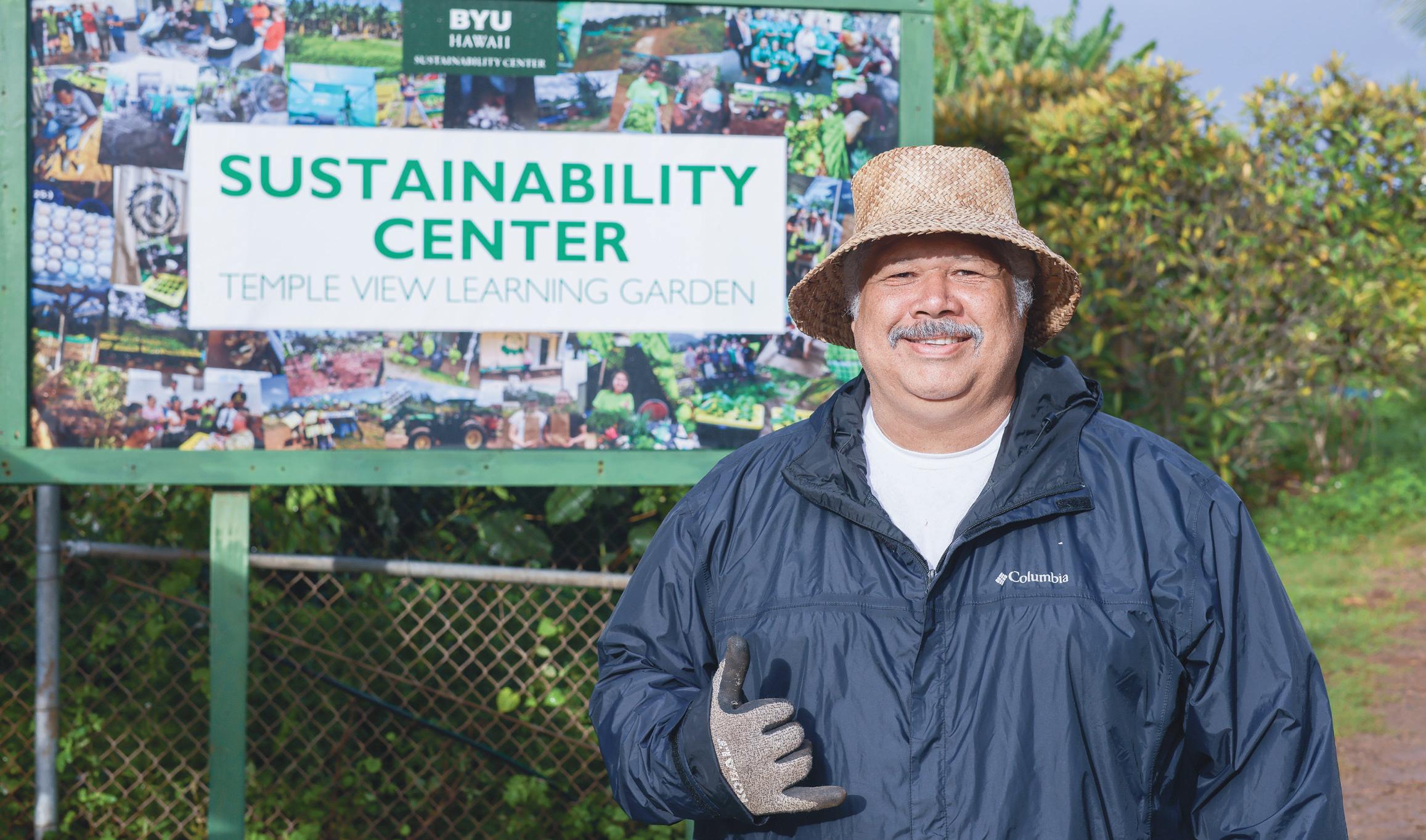

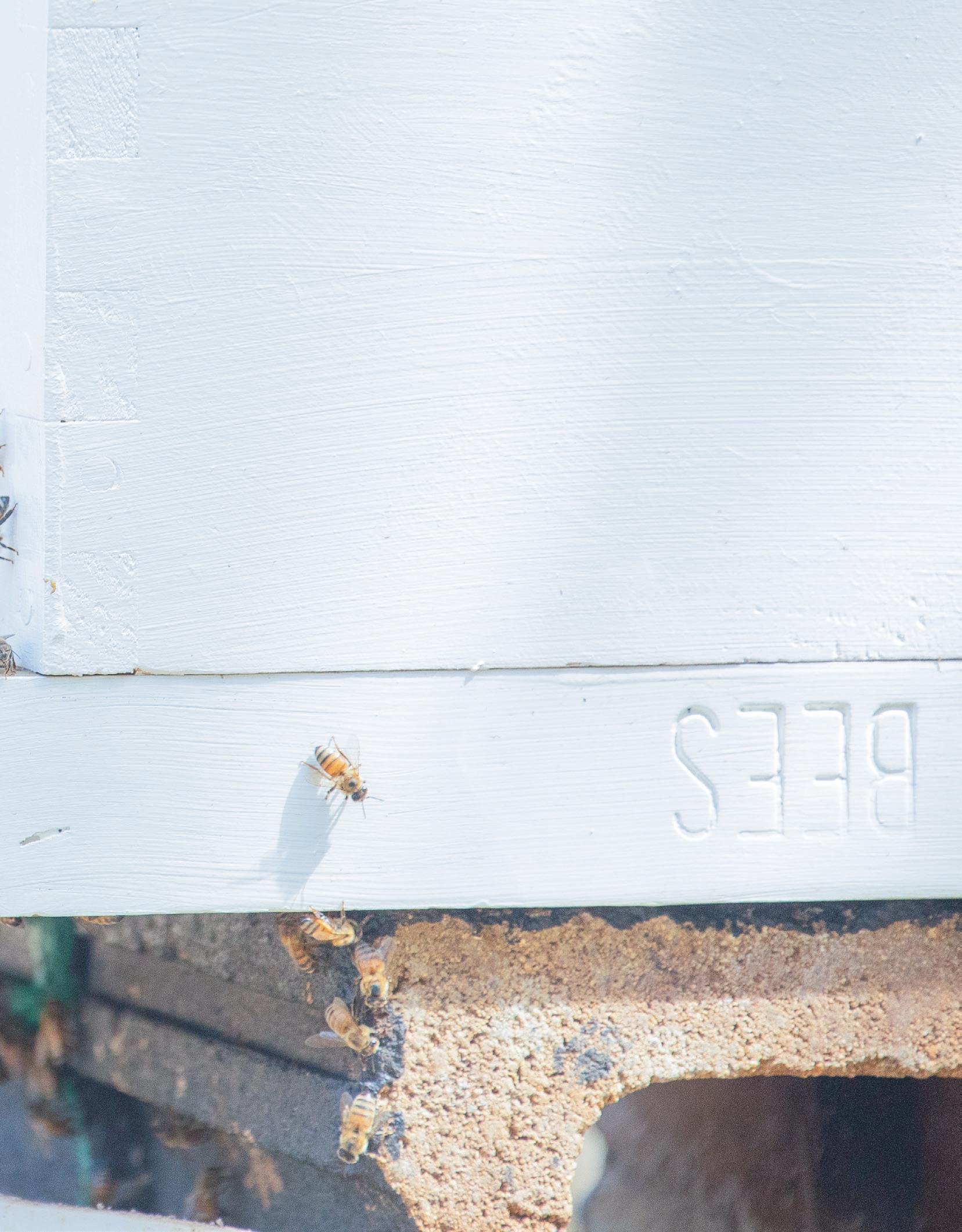
Aloha ‘Aina at various locations, including the Kumuwaiwai Center for Sustainability, the Polynesian Cultural Center and other collaborating partners. We are excited to be heading to Waimea Valley this semester,” Moleni shared.
She encouraged anyone interested in these service projects to learn about the land around them. Each service event lasts for about an hour and a half to two hours, making it accessible for busy students, she said. Highlighting the university’s commitment to community service, Moleni said BYUH requires all clubs to do a service project every semester. She said Vietnam Club, Tonga Club, Samoa Club and Fiji Club, among others, have been active participants, choosing projects that align with their interests. •
 Above: The Center shares their project for reviving and relocating bees.
Right: Photo of the Center’s hand-grown products, including ulu breadfruit and beetroot. Left: Kihei Nahale-a posing in front of the Kumuwaiwai Center for Sustainability. Photos by Camille Jovenes. Graphics by Yichi Lu.
Above: The Center shares their project for reviving and relocating bees.
Right: Photo of the Center’s hand-grown products, including ulu breadfruit and beetroot. Left: Kihei Nahale-a posing in front of the Kumuwaiwai Center for Sustainability. Photos by Camille Jovenes. Graphics by Yichi Lu.
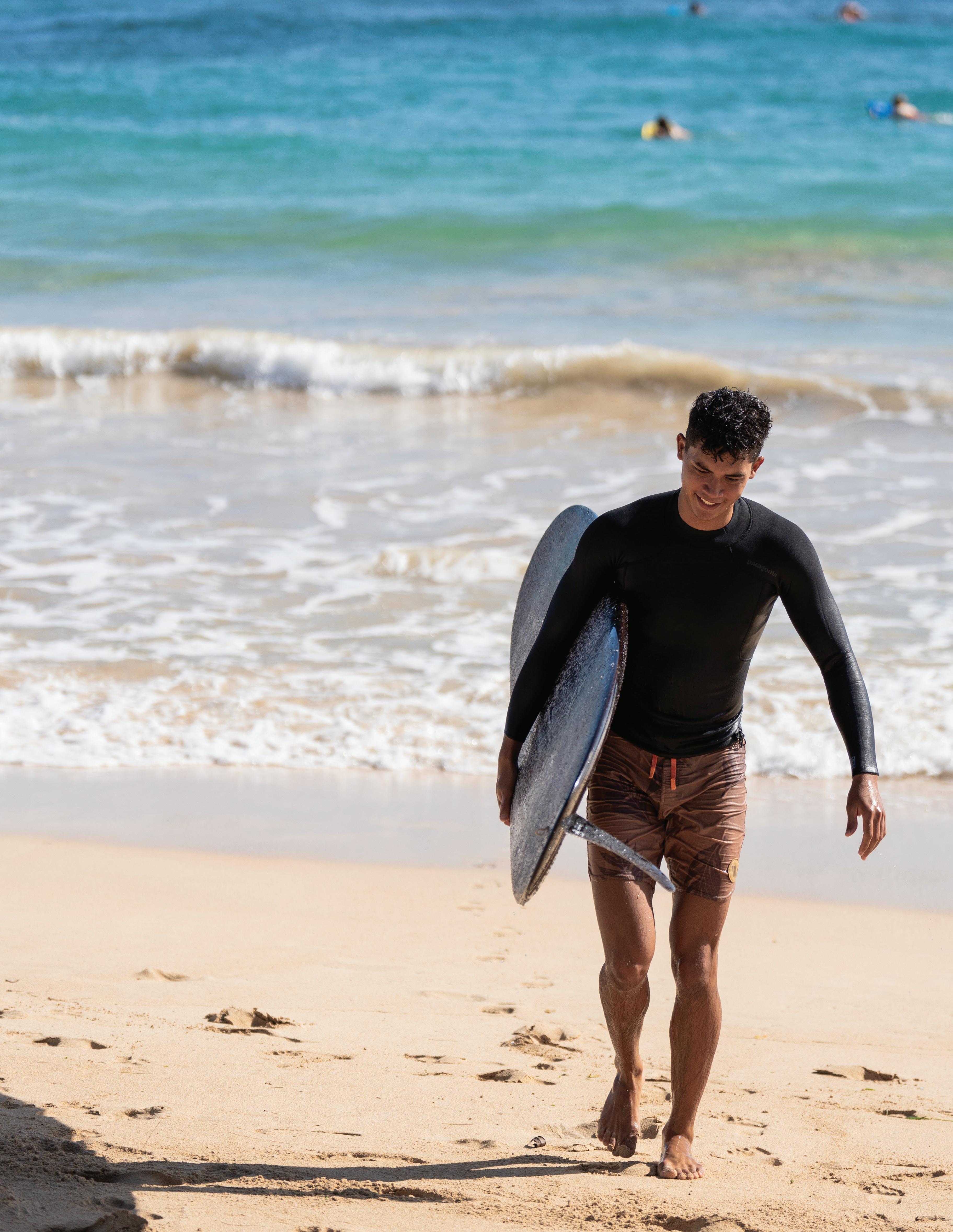
Three native Hawaiian surfers embrace their surfing heritage and legacy
BY KARL ALDRE MARQUEZ
Three native Hawaiian surfers say surfing in Hawaii is a lifestyle intertwined with deep Hawaiian culture. Besides coming from different backgrounds, they say surfing is therapeutic, enjoyable and, most importantly, is a way to preserve their legacy for future generations.
Hawaiian legacy
Kealoha Kaio, Jr., also known as K-Boy and a community member from Laie, said he learned surfing when he was 4 years old. “I was born in the ocean, so I just love the ocean,” he shared. He said his dad was his mentor in helping him to surf. Surfing has been a major part of his life, Kaio said, as he was born in Honolulu during the 1950s and moved to Laie since then. He said he joined surfing competitions from 1963 to 1969.
Kaio said he joined multiple competitions in Makaha, Haleiwa and a couple of surf meets for members of The Church of Jesus Christ of Latter-day Saints around that time. He said the competition was tough back then because everyone was very good, but luckily he won third and fourth place in most of the competitions he joined.
The surfing culture was different back then because every surf spot was owned by people, Kaio explained He said the spots were territorial, and people could get kicked out if they tried out a spot someone already owned.
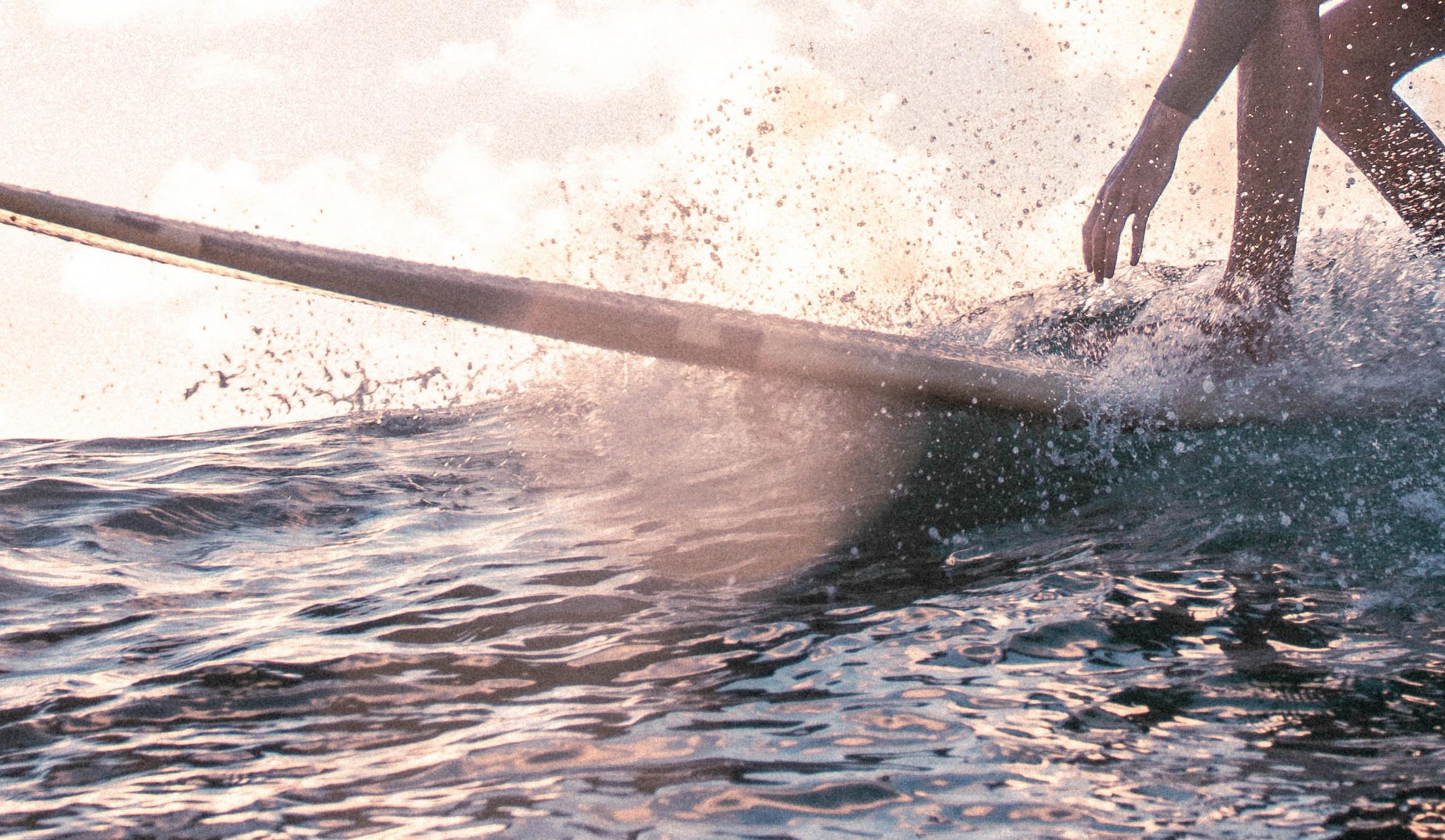
Despite this, Kaio said he surfed all his life and joined many competitions around the island where he also competed against other native Hawaiian surfers. He said the legacy of surfing continues as he passes it to his growing family.
Kukahiliponoikalapukaihaehae “Pono” Murray, a junior from Maui majoring in Hawaiian Studies, said his surfing style is influenced by the great Duke Kahanamoku, who is known as the father of modern surfing in Hawaii. Another one of his influences is Cliff Kapono, who is a scientist, journalist and great surfer, he said. Murray said he has a
list of people he looks up to, and all of them contributed to his interest in surfing.
Murray said surfing is a big part of perpetuating the Hawaiian culture. He said if a person is born in Hawaii, surfing is usually one of the major activities they learn while growing up. He said since this tradition is deeply ingrained in Hawaii’s culture and history, it holds a significant place in the hearts of Hawaiians.
Murray explained, “Since I was exposed to surfing in my younger years, it became something that I wanted to preserve in my life.”
Left: Kukahiliponoikalapukaihaehae “Pono” Murray carries his surfboard out of the waves. Photo by Yui Leung. Below: Surfers carve the waves with their boards while using the therapeutic time to meditate. Photo provided by Emilio Valenciano.
Originally from Maui, Murray said he lived his island life with his family. Murray was born to a Scottish Hawaiian dad and a Filipino Hawaiian mom and said he has two older sisters and a brother. He lived what he called a typical Hawaiian life, where surfing and fishing were a major part of their family activities.
Growing up, Murray was introduced to a Hawaiian immersion program where he said he was taught the ways and culture of being Hawaii from elementary to high school. He shared he was grateful for the program because he learned how to appreciate his culture. Over time, he said he began enjoying activities like volleyball, football,
basketball and hula. This active lifestyle when he was younger is one of the reasons why he appreciates how he was raised, Murray said.
In his transition to his adult life, Murray said his family’s tradition of surfing and doing other active activities continued after he served his mission in the St. George Utah Mission. Their surfing bond as a family has grown and become a big hobby for all of them, he shared. Since two of Murray’s siblings live on the mainland, he said they always invite him to surf around the island when they visit.
An important lesson Murray said he learned from his parents was to carry on with
the culture and tradition of being Hawaiian. Although surfing is a little part of it, he said he has been continually taught the value of his Hawaiian heritage by his parents and now as a student at BYU–Hawaii.
Murray said his transition to college life at BYUH wasn’t too difficult because he was familiar with the place and only had to adjust to meeting new people in the diverse student body. He said he has still enjoyed surfing and watching competitions on the North Shore. His first spot to surf around the community was at Castle Beach, but now he said he switches to different places around Oahu.
While studying at BYUH, Murray shared, “Surfing became therapeutic to me because the
sounds of the waves help me calm down and relax.” He said he loves to surf with groups of friends, but he also likes to surf by himself to meditate and enjoy his peace. Whenever he takes time to surf throughout the week, he said he feels rejuvenated.
Murray also said surfing has been a good opportunity for him to get to know new people. He began making friends as he continued to talk with people and get along with them through surfing, he said. “Surfing became a way for me to network with people and know which country they are visiting from.”
James Miller, a community member from Laie, said he met Murray at Castle Beach. He said their small conversation while surfing led to a burgeoning friends. As their friendship developed, Miller said they ended up working together as dancers at the Polynesian Cultural Center. They saw each other at work and sometimes hung out with friends, but he said their surfing sessions together with other friends were some of the most fun times they spent together. •
“Surfing became therapeutic to me because the sounds of the waves help me calm down and relax.”
Kukahiliponoikalapukaihaehae “Pono” Murray

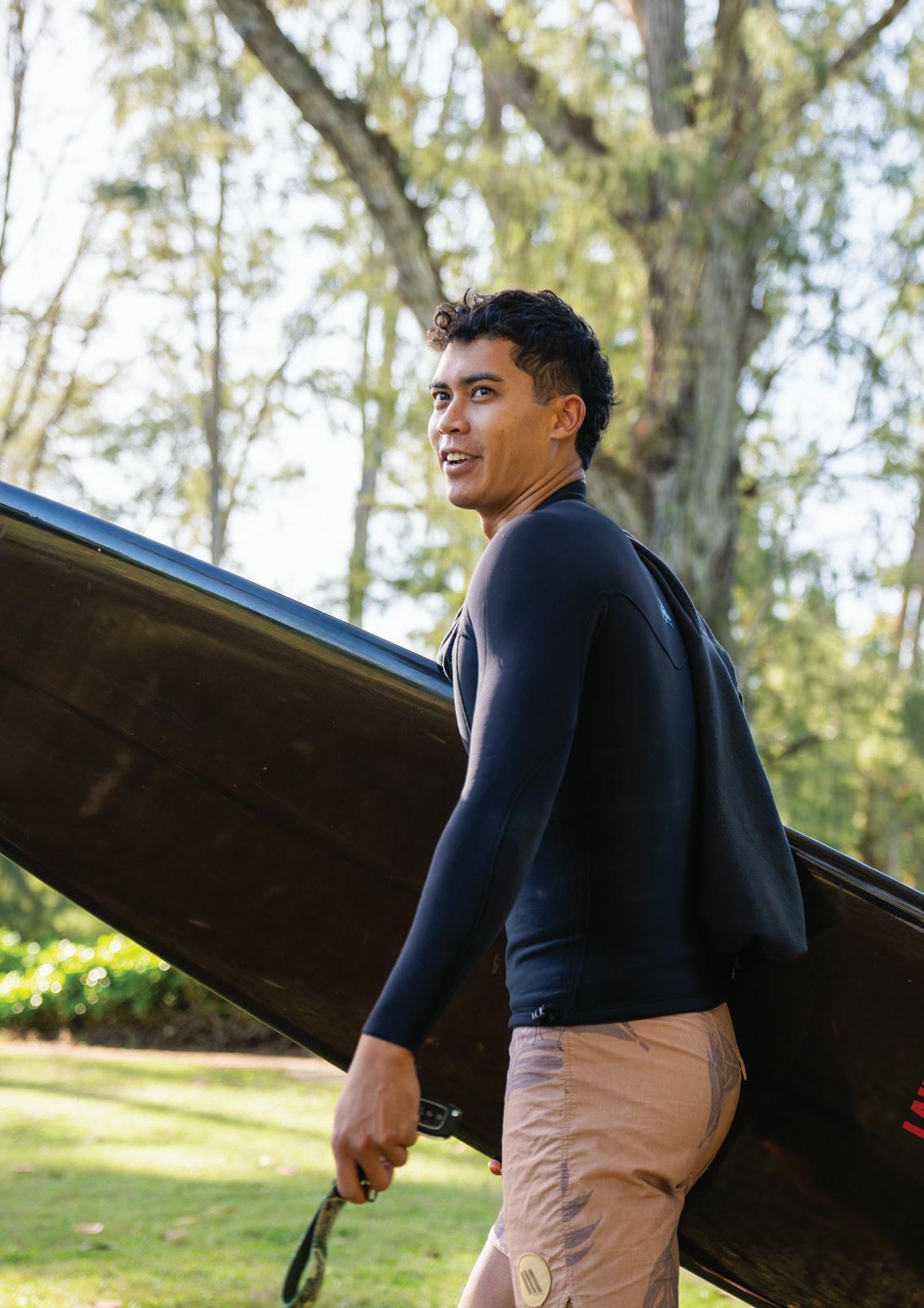 Far left: Murray smiles and holds up a shaka next to his surfboard. Left and above: Murray walks in and out of Castle Beach after a surfing session.
Photos by Yui Leung.
Graphics by Yichi Lu.
Far left: Murray smiles and holds up a shaka next to his surfboard. Left and above: Murray walks in and out of Castle Beach after a surfing session.
Photos by Yui Leung.
Graphics by Yichi Lu.
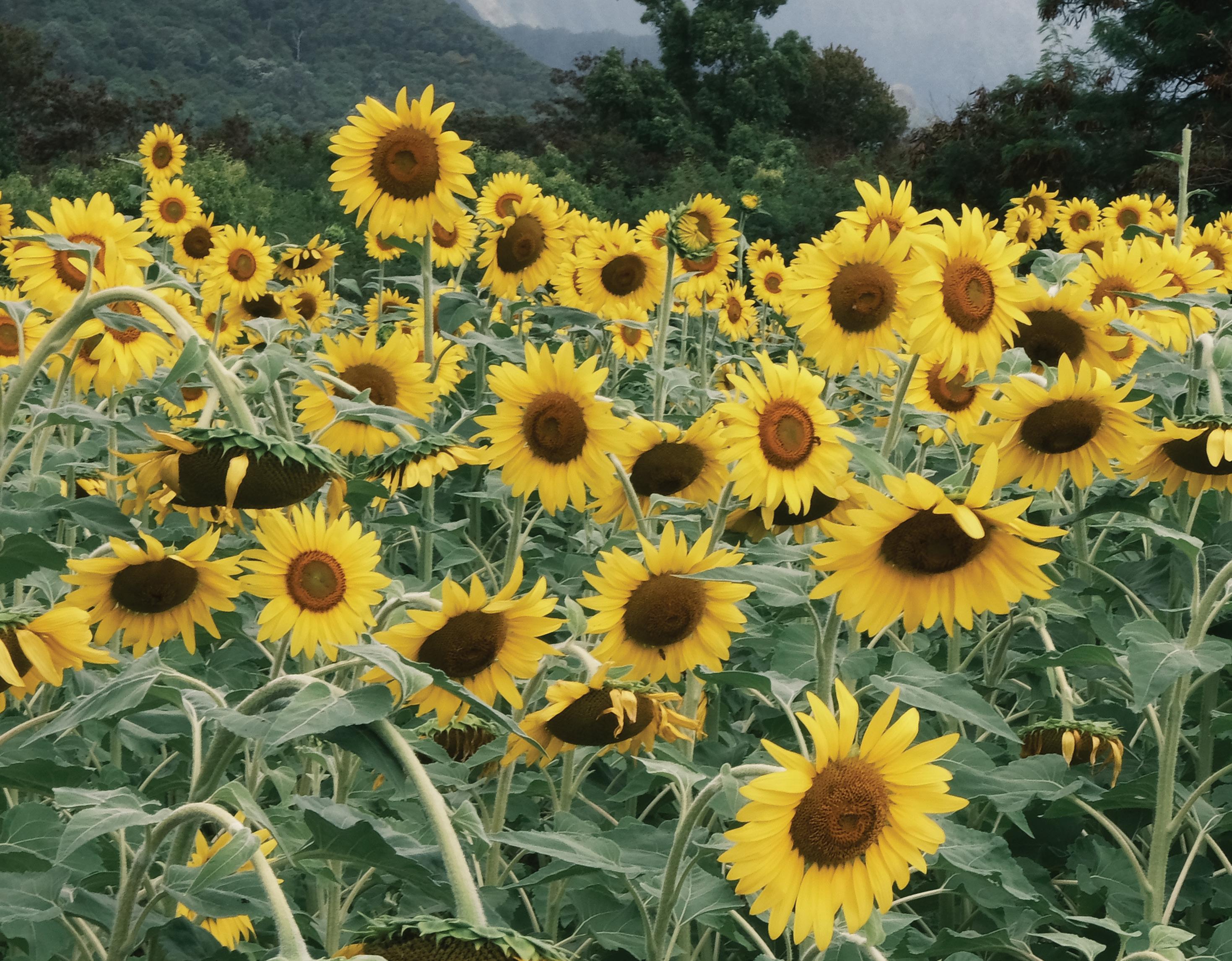
Waimanalo Country Farms shares the multiple uses of growing sunflowers, from sunflower seeds to diesel fuel made from sunflower oil
BY MUTIA PARASDUHITA
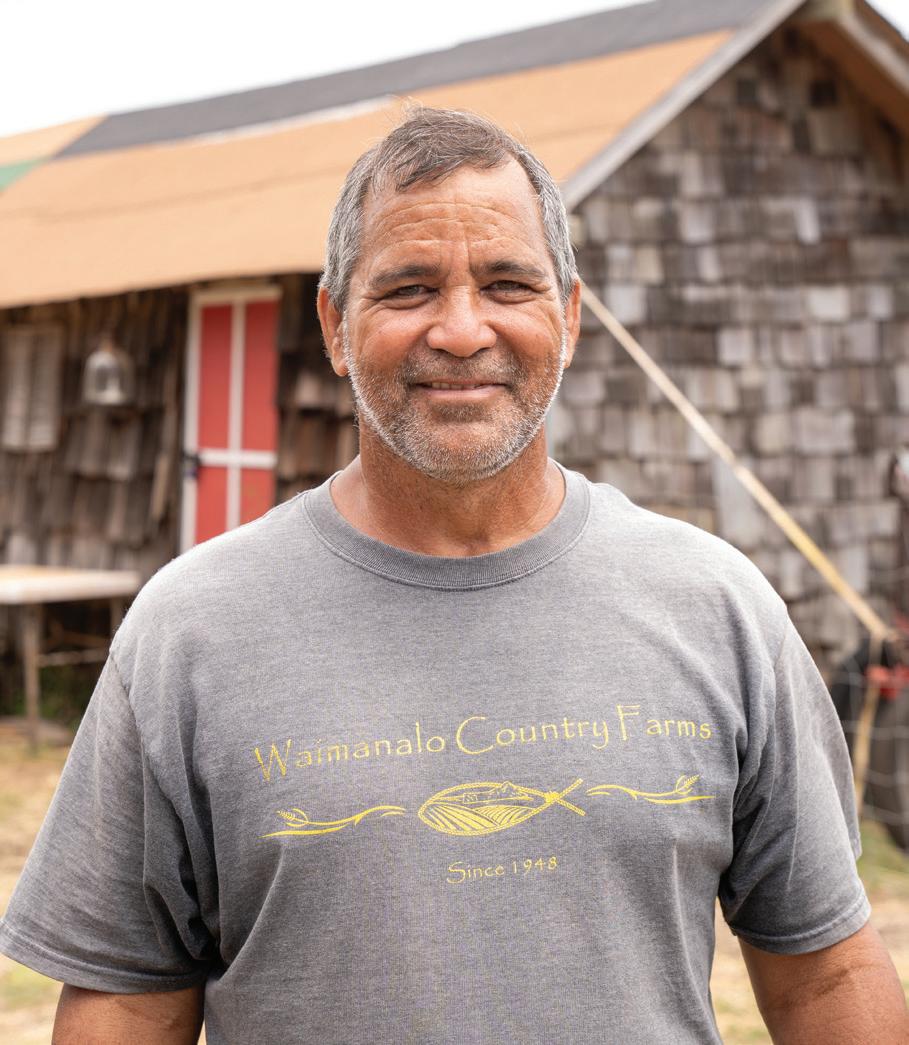
After 67 years of cultivating corn, golden melon and various types of vegetation, Waimanalo Country Farms started to grow sunflowers to fulfill one of the family members’ wedding plans. Dominic Kadooka, the family farmer who runs the farm, said, “We’ve been growing corn since 1970, but only eight years ago we grew sunflowers. The only reason was one of the family members wanted to be married in the sunflower field.” Kadooka said they didn’t know what to do with the sunflowers after the wedding, so the family decided to call their friends to take pictures and enjoy the field when it was blooming. He added, “People like it and started wanting to come here, and the pictures went all over the world.”
According to Kadooka, the farm has been around since 1948 and has been passed from generation to generation through the family. The family farm just hit its 75th anniversary of operating. He said it started with a smaller field, and as time went on, their farming neighbors gave their plots of land to enable the farm’s expansion. Although the original plan was not to open to the public, he said the family was mindful in responding to people’s interest in enjoying the farm occasionally.
As time went by, Kadooka said he found more ways to use sunflower fields other than just a place for people to take pictures.
First, he said he learned the techniques to make oil from the sunflower seeds. He picked the sunflower, plucked the seeds off of the flower and then pressed it until the oil came out, Kadooka explained. He said the oil can be used as a cooking oil, but more importantly as a farmer, this oil can be used as a diesel fuel to run his tractors. He said the oil can absolutely replace diesel fuel and is very eco-friendly for the environment.
Kadooka said the blooming sunflowers also attract honeybees. So, over time, he said the farm has created a place for honeybees to nest in the field. This allowed the farm to harvest pure sunflower honey to be sold to visitors or at the local farmer’s market. “Other than that, the sunflower seeds can be used to feed the flocks in the farm, so nothing is wasted,” Kadooka explained.
“Many might not know but sunflower is also edible. Perhaps this is the only place you can try the sensation of eating sunflower in Oahu,” Kadooka expressed. On this farm, they sell grilled sunflowers with butter and parmesan cheese on top. There are several ways to eat it, Kadooka said. People can scrape all the seeds off the sunflower and eat that, but if they want they can also eat the shell and everything because it’s very soft. Kadooka said it tastes like artichoke hearts or corn on the cob when it’s salty. But if people want to make it as a dessert, Kadooka shared, they can add sunflower honey to the sunflower to create a sweet sensation.
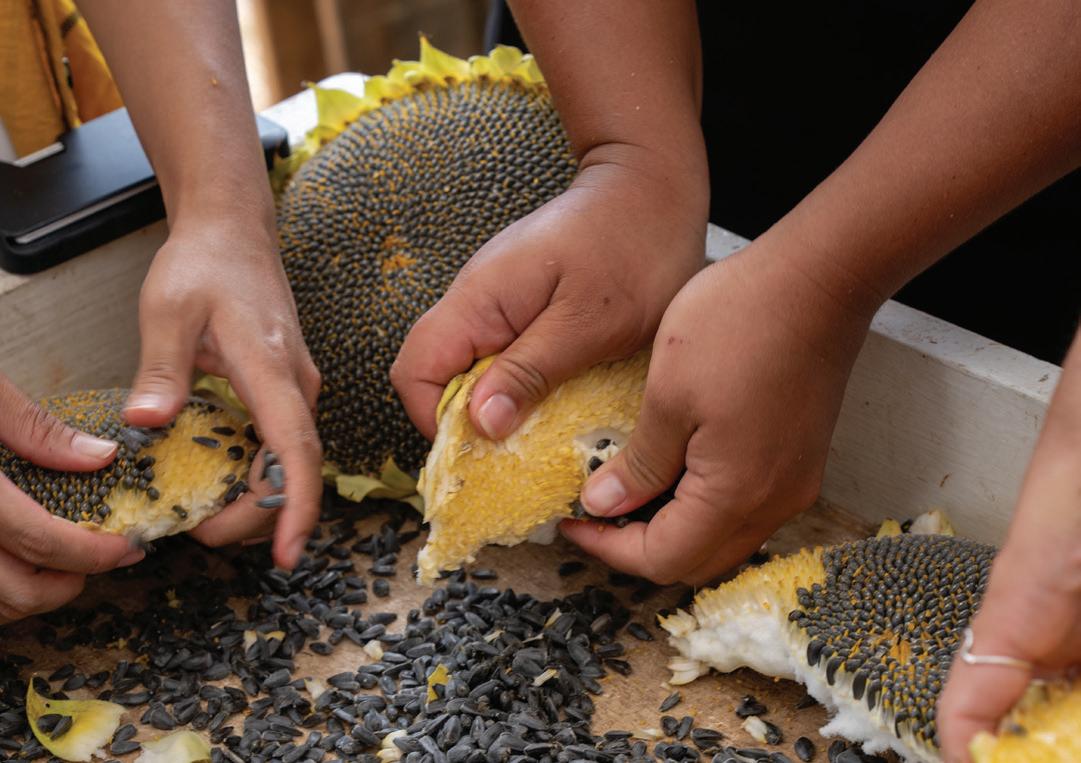
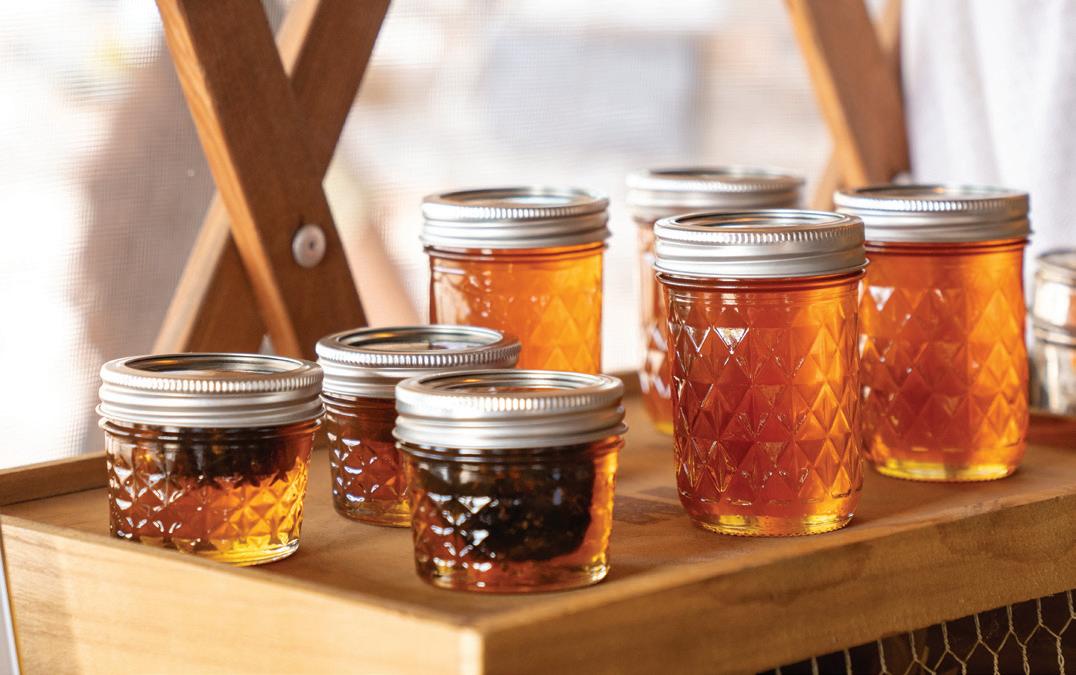

Cheylee Souza, one of the family members who helps run the farm, said this farm means a lot to her because she has grown up in this farming environment, and she has many childhood memories there. She shared, “In early 2000, when I was a little kid, there was a live nativity during Christmas. We had a pastor come to the farm and had a nice Christmas celebration.” She said she loves that this kind of activity still occasionally happens on the farm.
Souza added, “We open three or four times a year during spring, summer and in the month of October, but the date would vary, depending on the harvest time.” She explained how people can use the farm to celebrate birthdays or family gatherings, as well as have a picnic party or meal by making reservations. She suggested those who are interested in visiting to check the Waimanalo Country Farms Instagram page or website for the dates and times it is open and reservation information.
During the month of October, there is a harvest festival, not only for the sunflowers, but also for pumpkins and corn. They have several interactive activities such as hayrides and plucking sunflower seeds. Visitors can also buy products and souvenirs in the farm’s country market. •
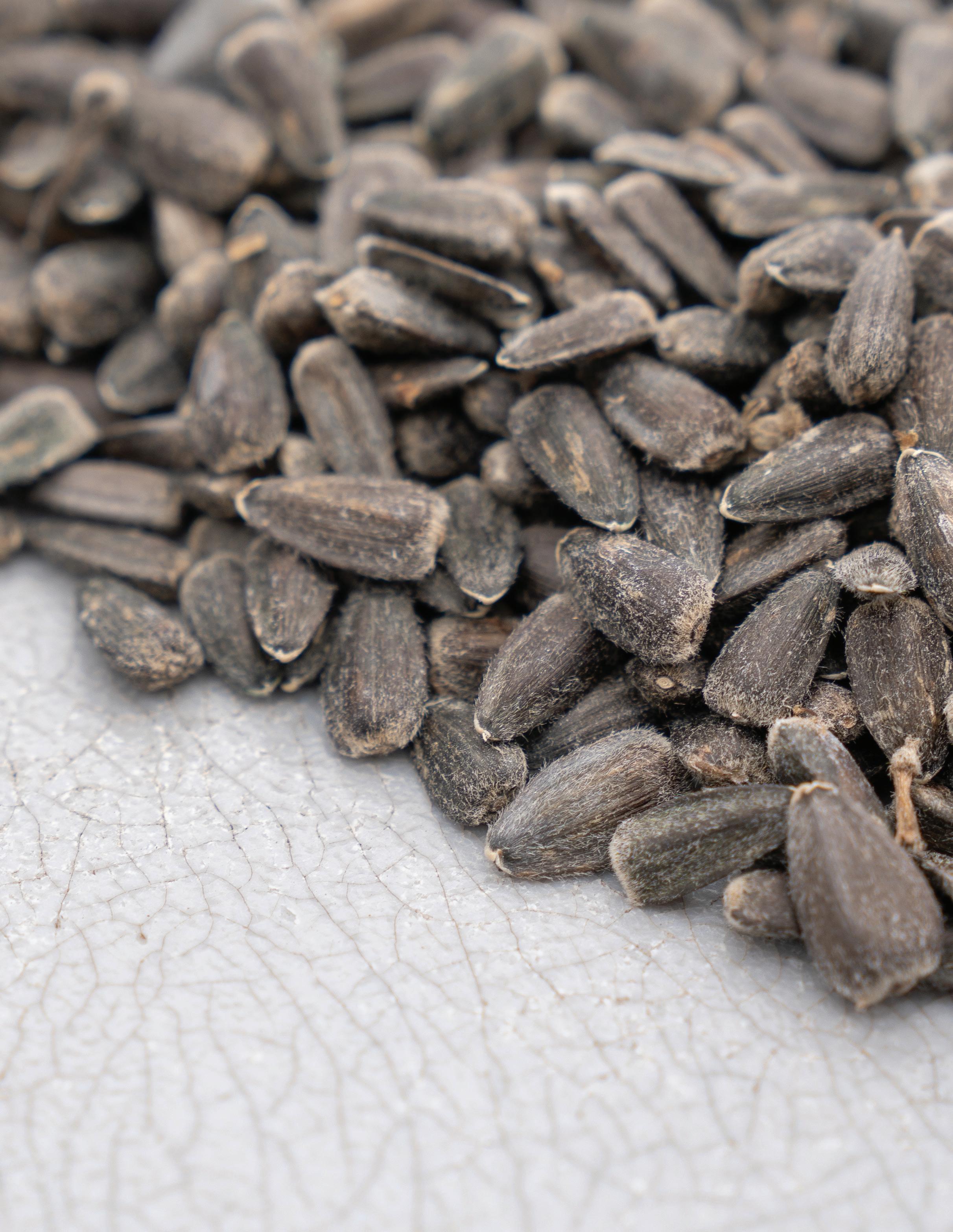 Top left: Ke Alaka’i team members participate in the process of separating the sunflowers seeds from the disk florets.
Bottom left: Sunflower honey harvested and sold at the Waimanolo Country Farms.
Top left: Ke Alaka’i team members participate in the process of separating the sunflowers seeds from the disk florets.
Bottom left: Sunflower honey harvested and sold at the Waimanolo Country Farms.
If you are interested in camping around Oahu, here are some camping sites to check out:
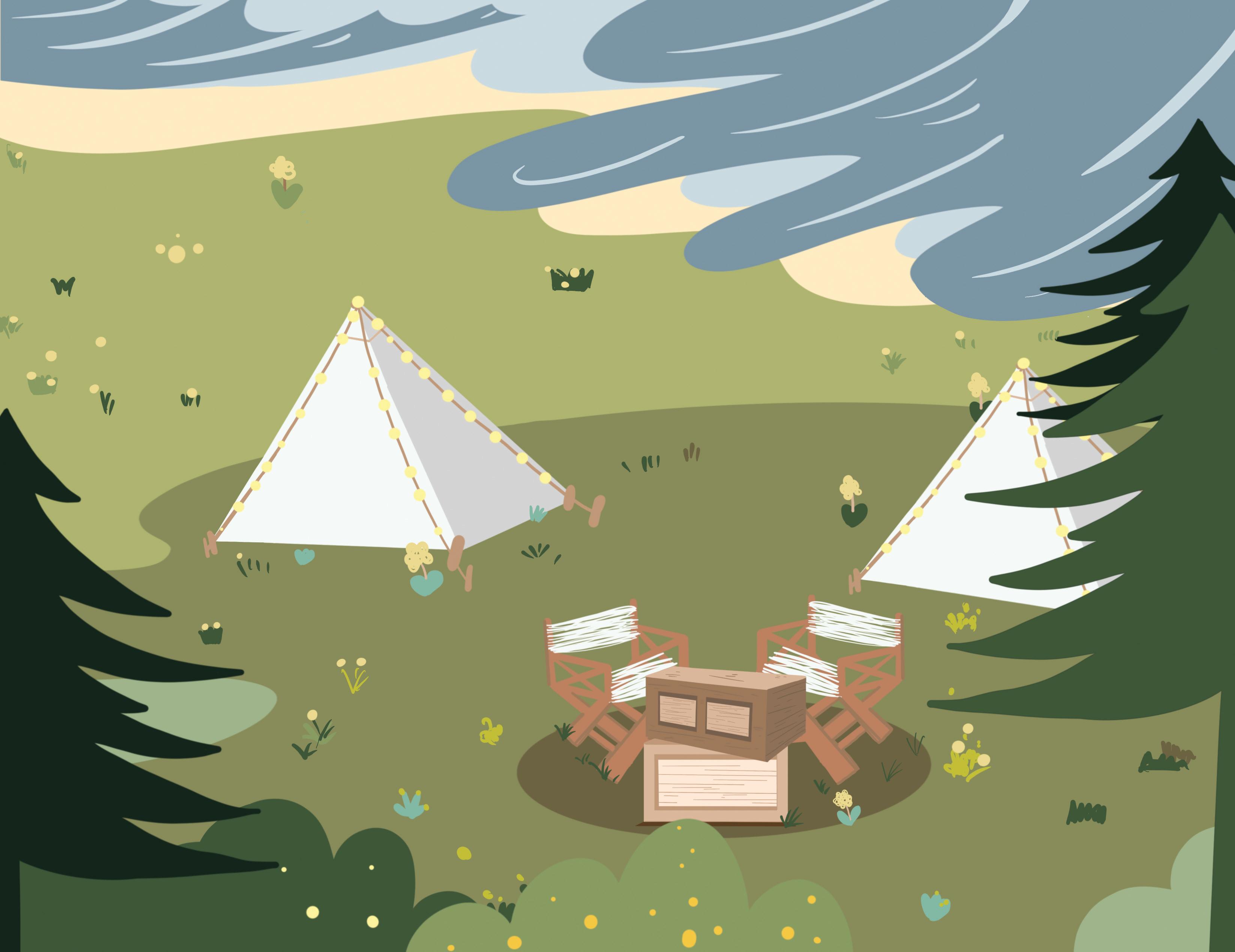
Maleakahana State Recreational Area
Maleka Farm Glamping, which has options for overnight parking and van rentals
Swanzy Beach Park
Ahupua’a ‘O Kahana State Park
Kualoa Campsite
Kahaua Kuou
Kahaua Lehua
Kahaua Nui-Makai
Bellows Field Beach Park Campsite
Waimanalo Beach Campsite
Sand Island State Recreation Area Park
Camp Palehua
Kalaniana ole Campsite
Ma’ili Beach Campsite
Kea’au Beach Campsite
Camp Mokule’ia
Kaiaka Bay Beach Campsite
Kokololio Beach Campsite
Hau’ula Beach Campsite
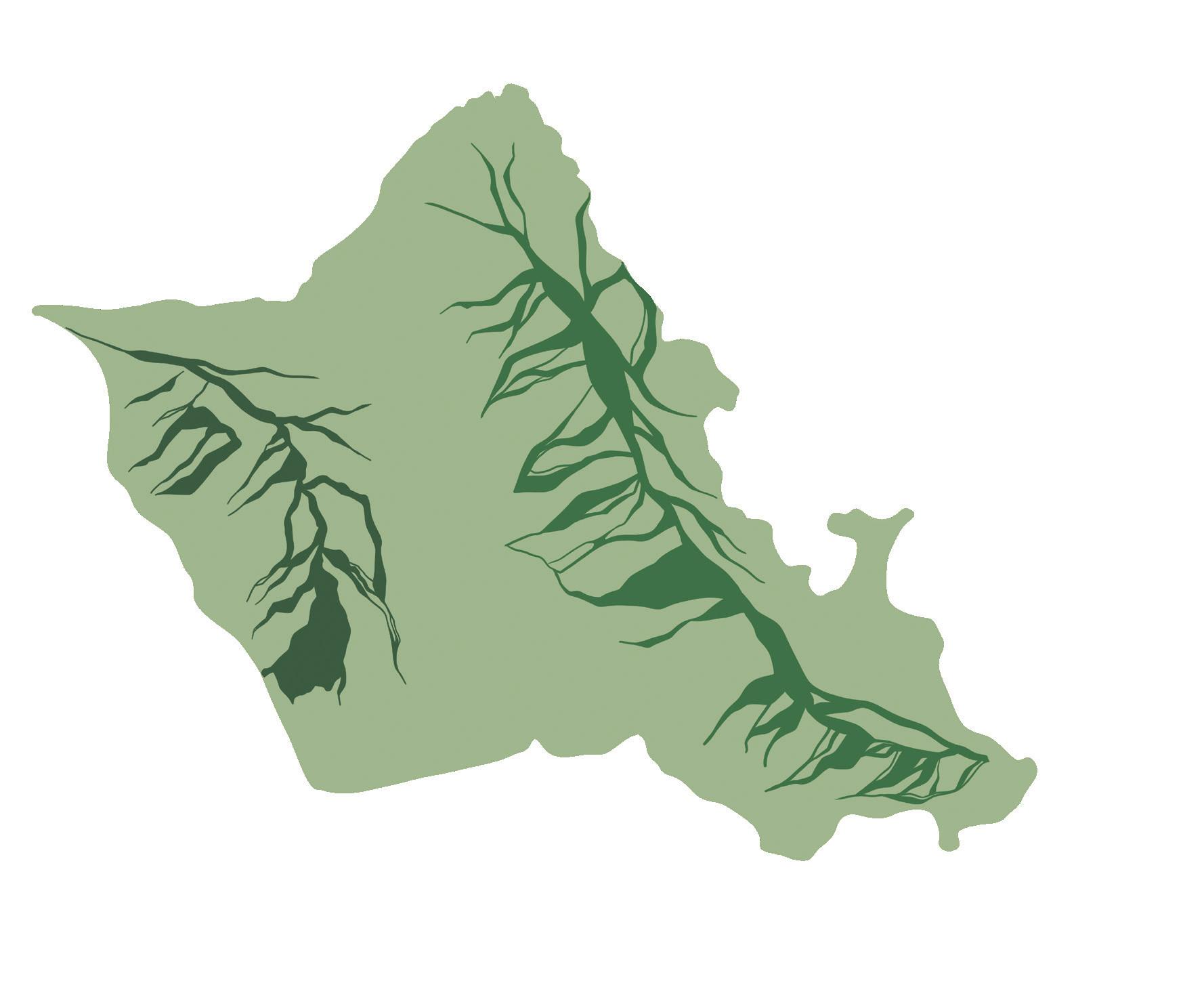











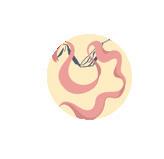

Difficulty: Easy
Length: 1 mile
Time: 30 minutes to an hour
No restrooms available
“It was quite challenging to go up because [there were] no shaded spots, but when we got to the top, we were able to feel the cool breeze and relax with the beautiful view of the ocean. I could see lots of cars and the tiny houses below us and the blue sky above us.”
- Jimin An, a BYU–Hawaii alumna from South Korea
Difficulty: Easy
Length: 1.5 miles
Time: 30 minutes to an hour
Restrooms available
Difficulty: Easy to Moderate
Length: 1.5 miles
Time: 30 minutes to an hour
Restrooms available
tepping out in nature and hearing the stillness of the surroundings heals and calms the mind and soul, said Rebekah Strain, an adjunct faculty member in the Faculty of Religious Education and a Title IX investigator. She said after completing a challenging hike, she always goes home “feeling so much better, rejuvenated, mentally calmed down and quieted.” Strain suggested
before going on a hike, students should bring a buddy, consult other people and do their research.
Ke Alaka‘i learned about hikes of varying difficulties from students, alumni, faculty members and sources like oahuhike. com, alltrails.com and tripadvisor.com.
Dogs are not allowed
“My favorite hike so far has been the Koko Head. I would say the view up there was worthwhile. The hike wasn’t overly difficult nor too easy. The trail consists of stairs and steps, making the climb manageable.”
- Hak Kim, a freshman from Cambodia majoring in business management

Difficulty: Easy
Length: 2 miles
Time: One to two hours
Fun fact: It is an awesome location to whale watch.
No restrooms available
Manoa Falls Trail
Difficulty: Easy
Length: 1.5 miles
Time: An hour and 10 minutes
Restrooms are available in a nearby shopping area
Hau’ula Loop
Difficulty: Easy
Length: 2.6 miles
Time: An hour and 40 minutes
Restrooms are available at the Hau’ula Beach Park
“I like Hau’ula Loop trail because it has nice scenery, and it’s not too difficult. It’s through the forest, so there’s lots of shade!”
- Mālie Leung-Wo Basulgan, a BYUH alumna from Maui
Difficulty: Intermediate
Length: 1.6 miles
Time: 30 minutes to an hour
No restrooms available
“My favorite hike is the Pink Pillbox because I love the view when I [reach] the top. Seeing all the clean water with different color gradients and beautiful coastlines just reminds me of how lucky I am to be in this beautiful place with my friends.”
- Lan Xi Lin, a senior from Taiwan majoring in graphic design
Difficulty: Intermediate
Length: 2 miles
Time: about one to two hours
No restrooms available
Difficulty: Intermediate
Length: 3.9 miles
Time: One to two hours
No restrooms available
“I love Wailele Falls! It’s short and the whole way up feels so peaceful and quiet. It’s beautiful and a great hike to take your time with. I love the stream crossings. The waterfall is also so pretty, and the pool of water is nice even if there isn’t enough rain for the fall. It’s a healing hike for me. It’s so good for a reset!”
- Annette Shin, a intercultural peacebuilding senior from New York
Difficulty: Intermediate Length: 3 miles
Time: Two to three hours
No restrooms available
You need a permit for hiking and camping
Difficulty: Intermediate
Length: 1.5 miles
Time: Two to three hours
Public restrooms are available at the Kuli’ou’ou Beach Park
You need a permit for hiking and camping
Difficulty: Intermediate to difficult
Length: 2.5 miles
Time: Two to three hours
No restrooms available There are three peaks on this hike, but the second and third peaks are not recommended for inexperienced hikers
“My favorite hike is the Mt. Olomana Trail, or three peaks. It is an intense hike with a beautiful sunset on top of the second peak. The hike on the third peak is pretty much rock climbing. I think it’s my favorite because it’s a long hike and hard. You struggle a little, but it’s worth it … It’s beautiful on the last peak and you get the satisfaction of accomplishing that insane hike.”
- Stephen John Pecaoco, a sophomore from the Philippines majoring in psychology
Difficulty: Very difficult
Length: 9.8 miles
Time: Takes about five hours and 30 minutes or more
No restrooms available
“It takes a lot of work and some practice, but once you get up there, it’s just a magical, beautiful, quiet world. And the views… You can see all of the islands. I love it!”
- Rebekah Strain, adjunct faculty member from the Faculty of Religious Education and Title IX investigator
Before you try out one of these hikes, make sure to pack these hiking essentials:
Hiking gear
Bug repellant
Water bottles with water
Snacks
First-aid kit
Sunscreen
Map
Phone
Proper hiking attire and shoes •
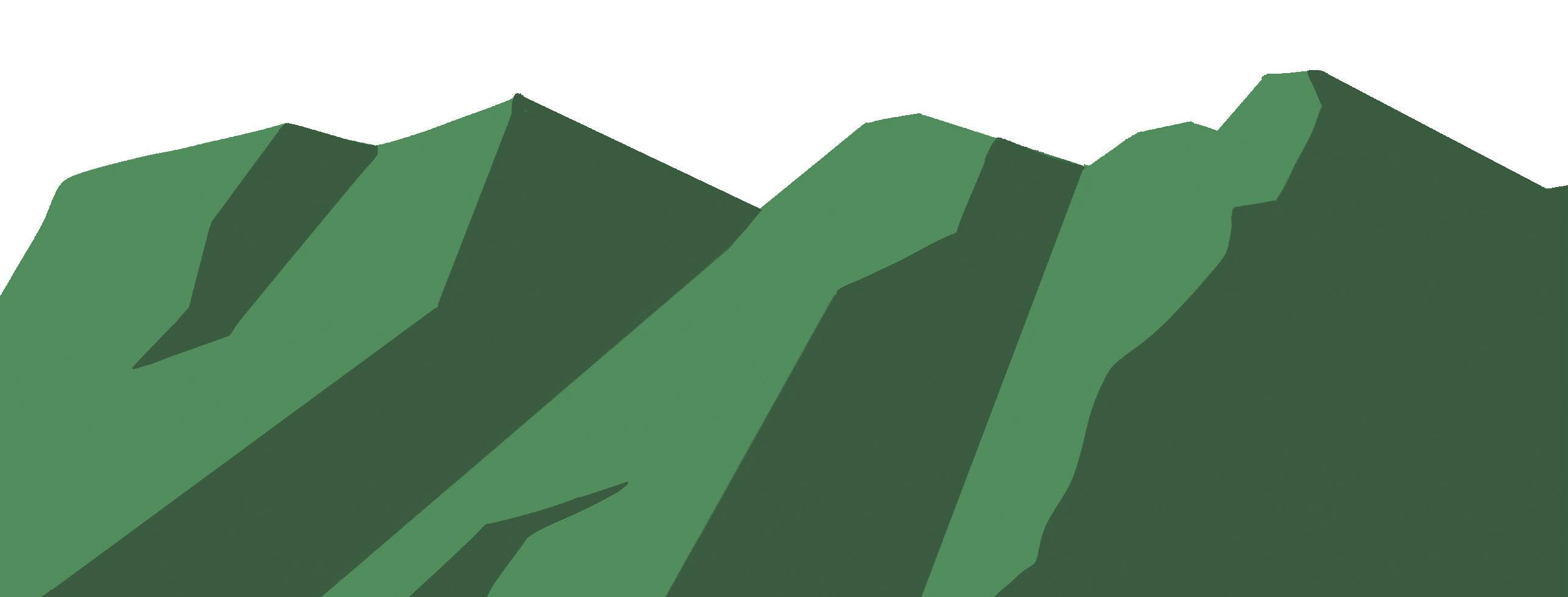
“We tend to think that we are separate from nature, but we are nature ourselves.”
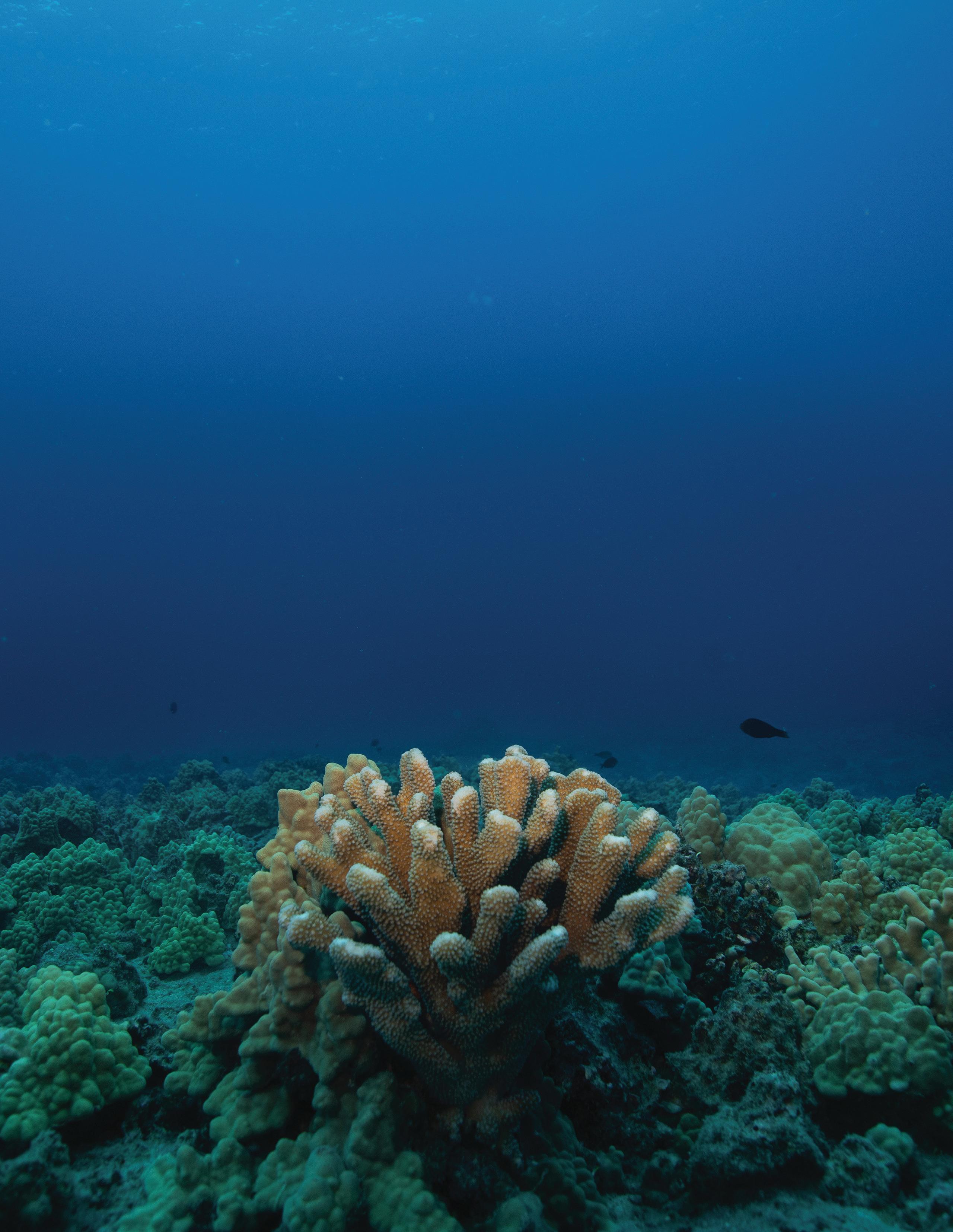
Patricia Patrick